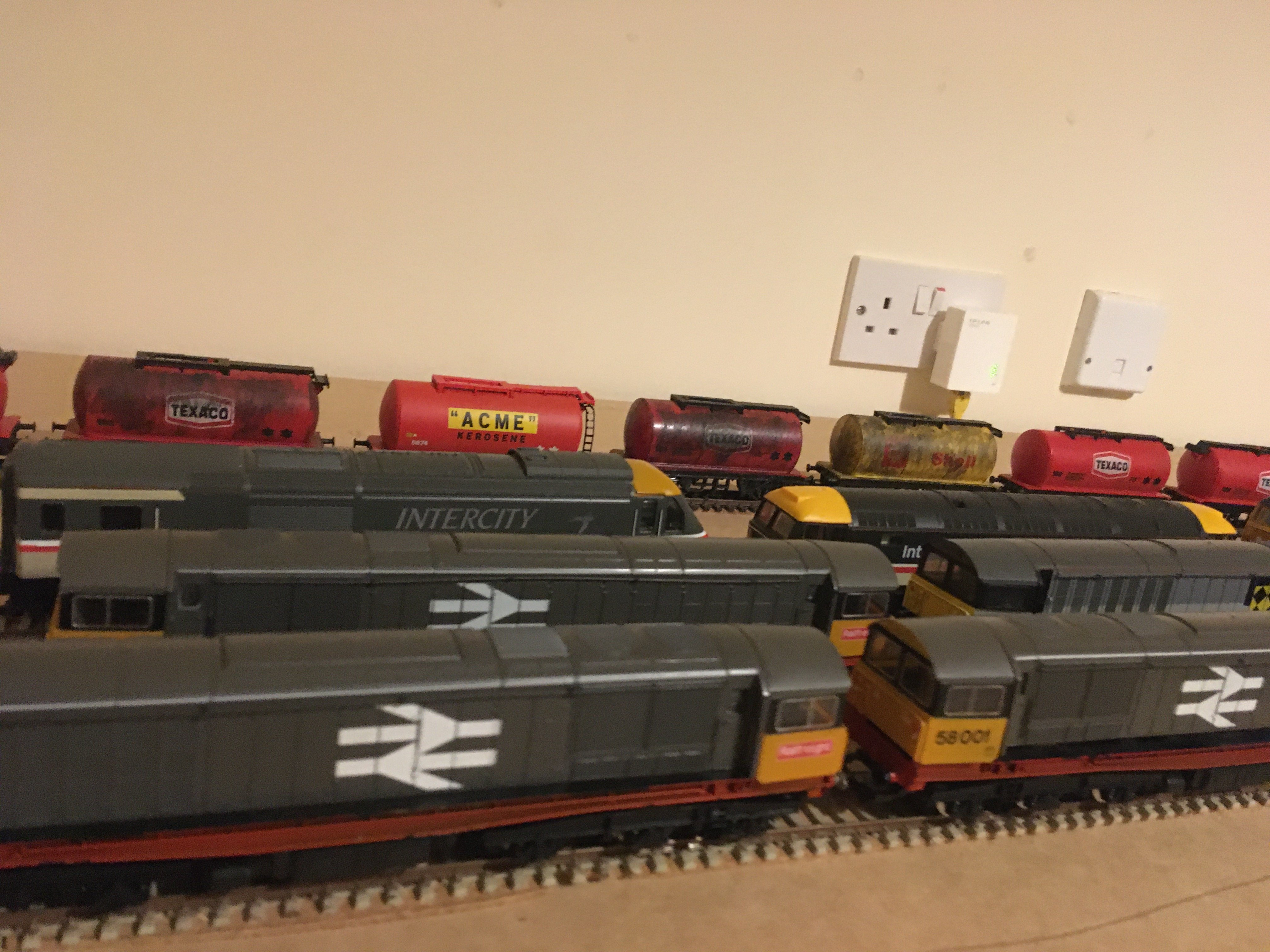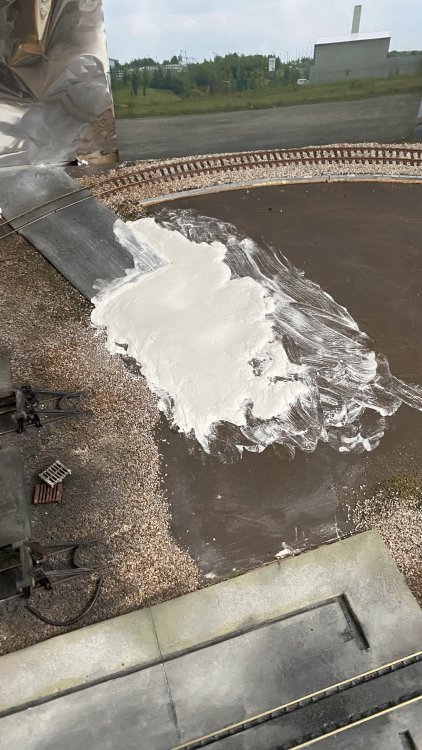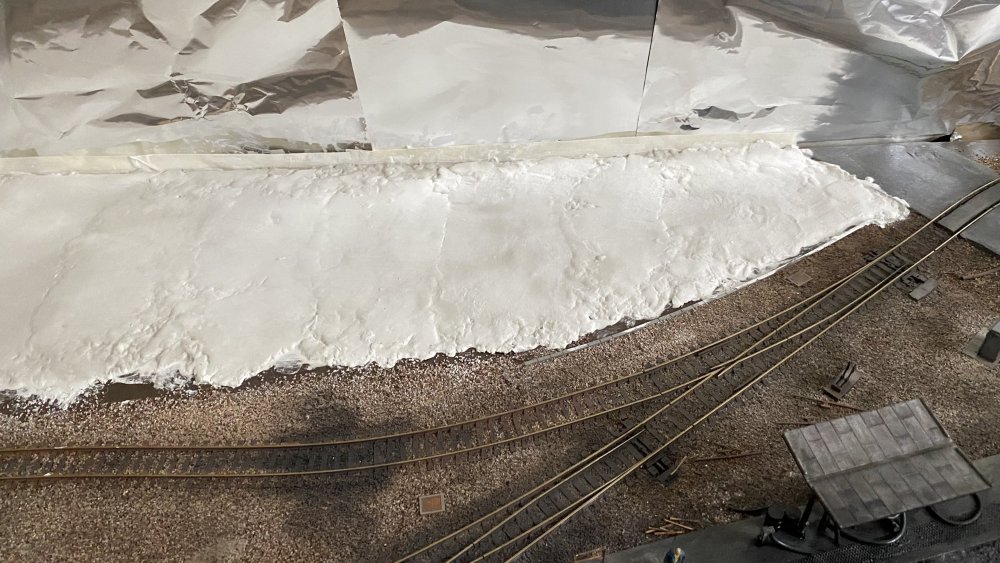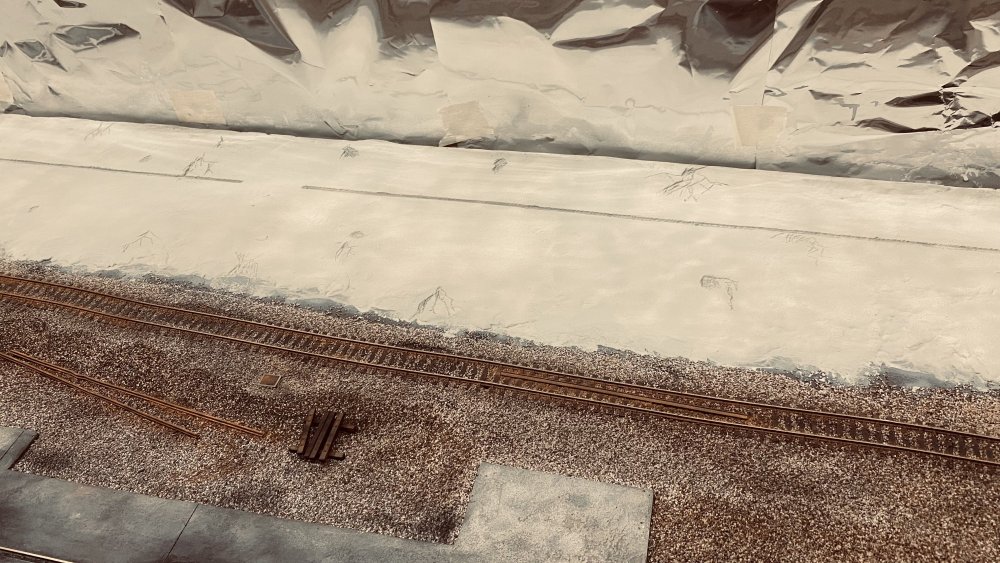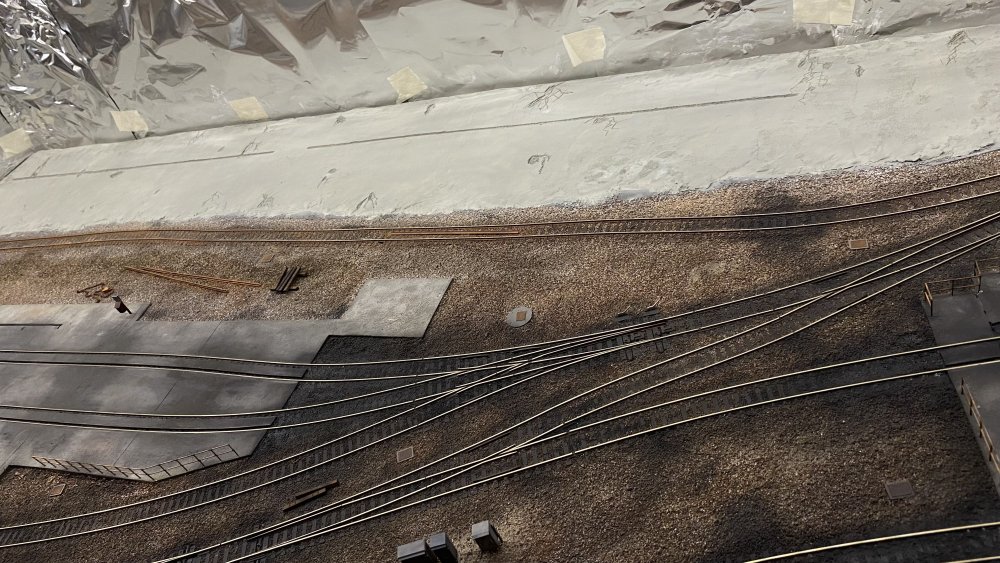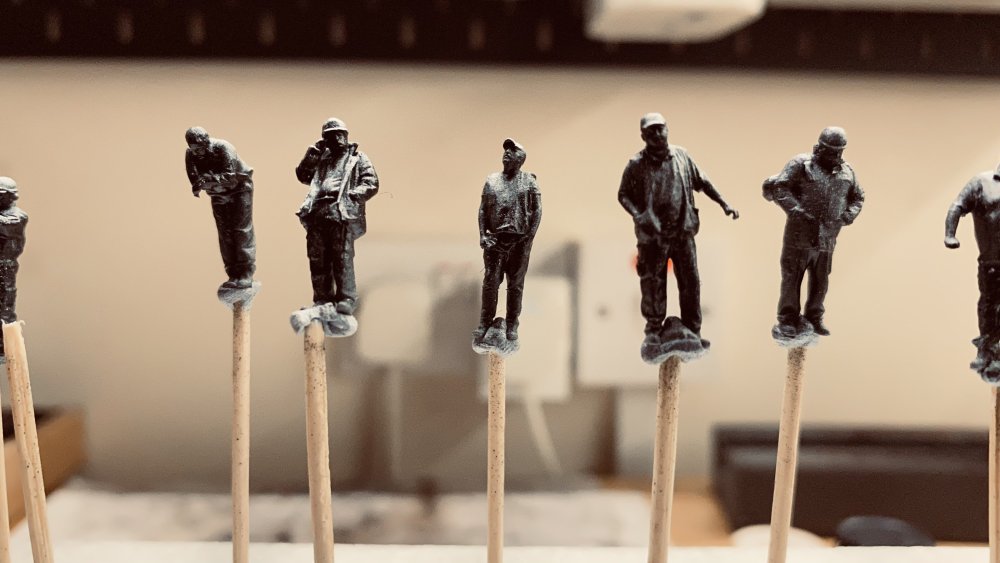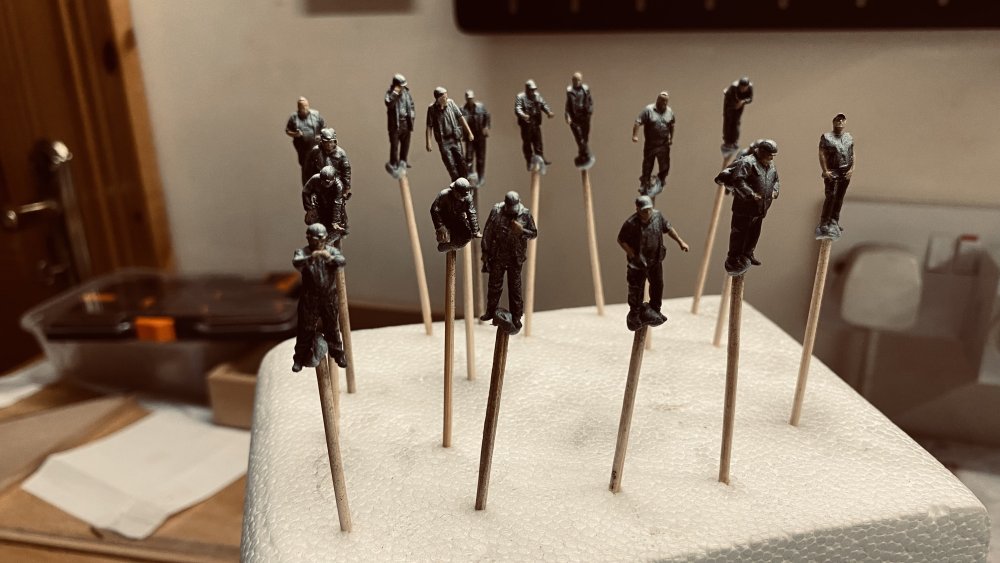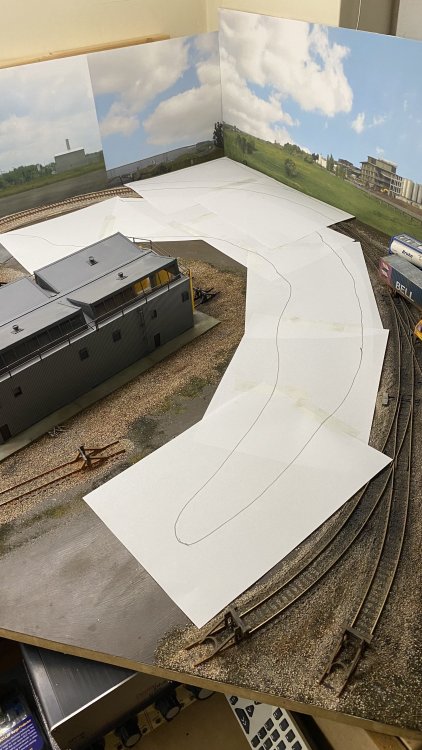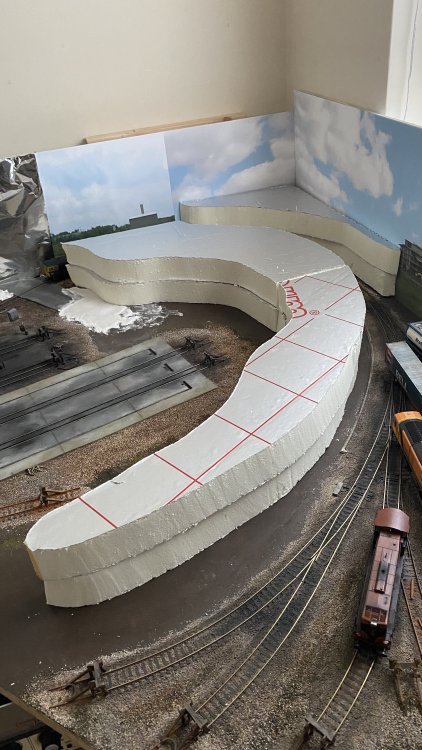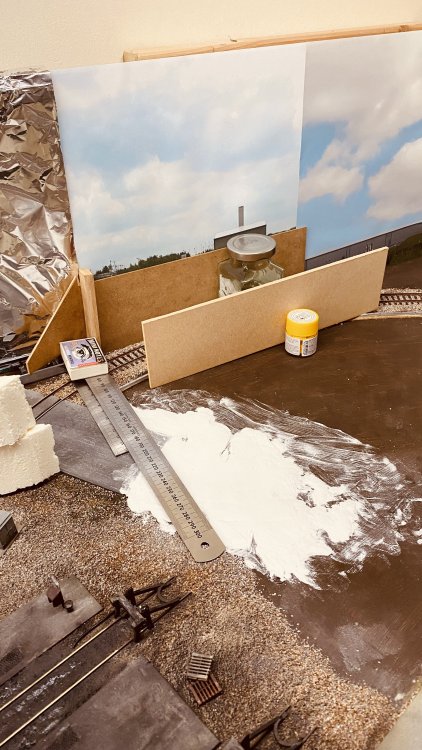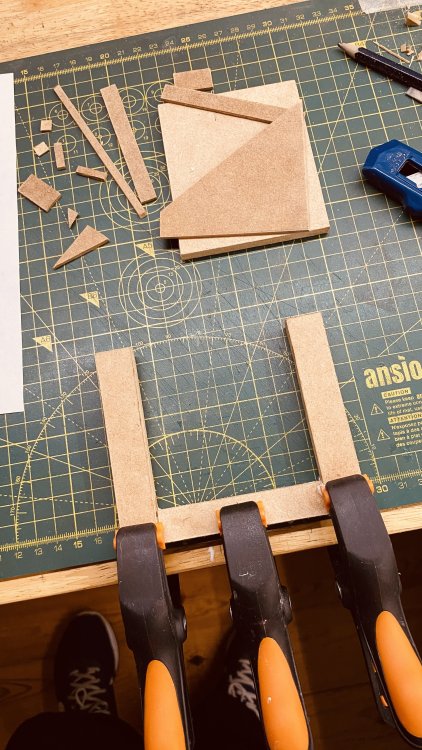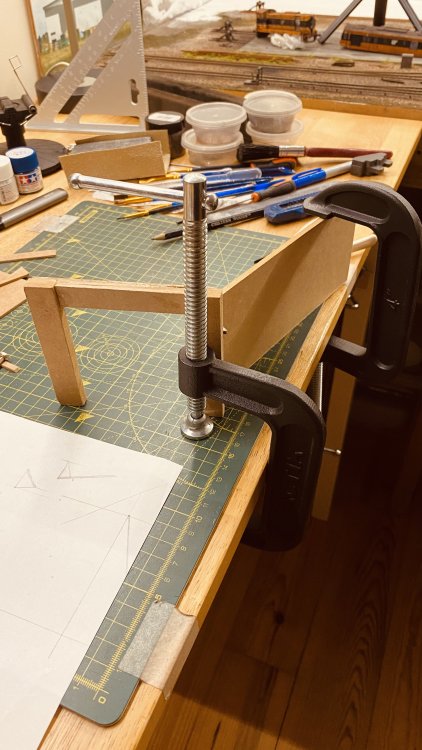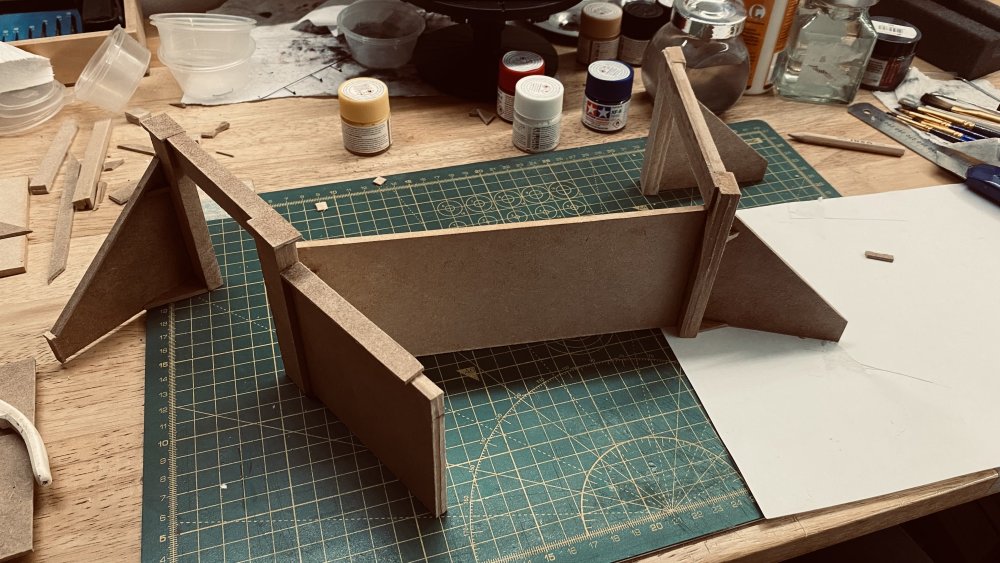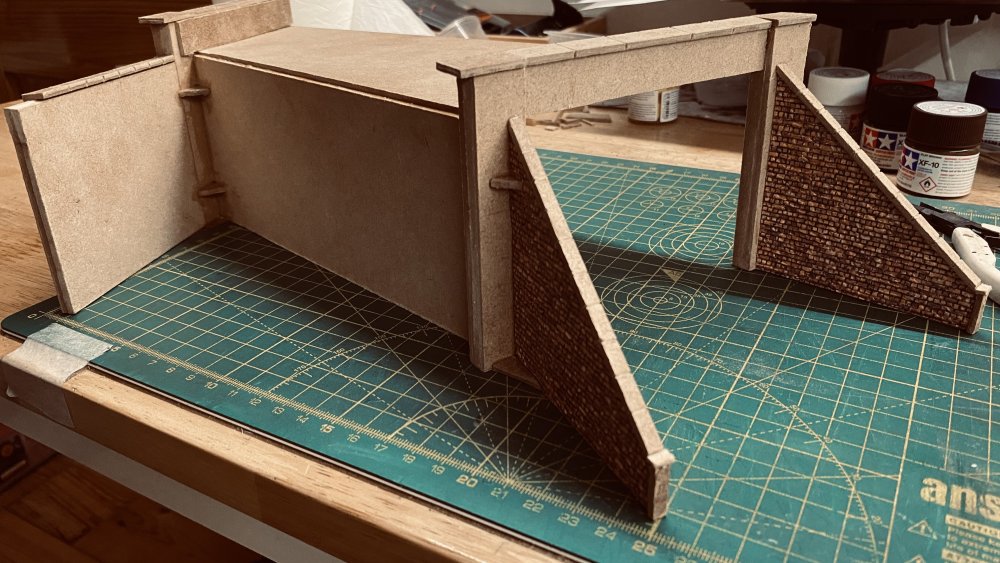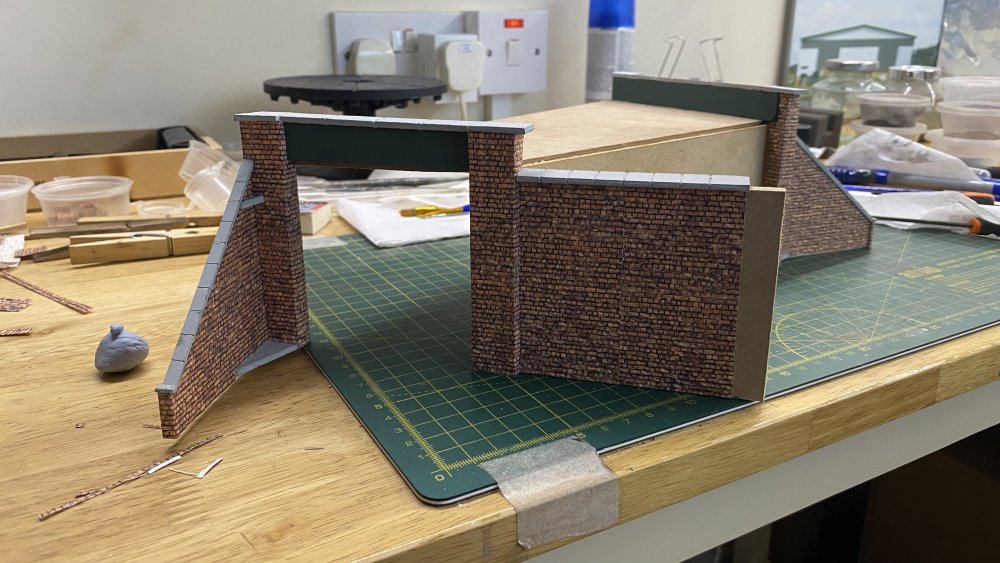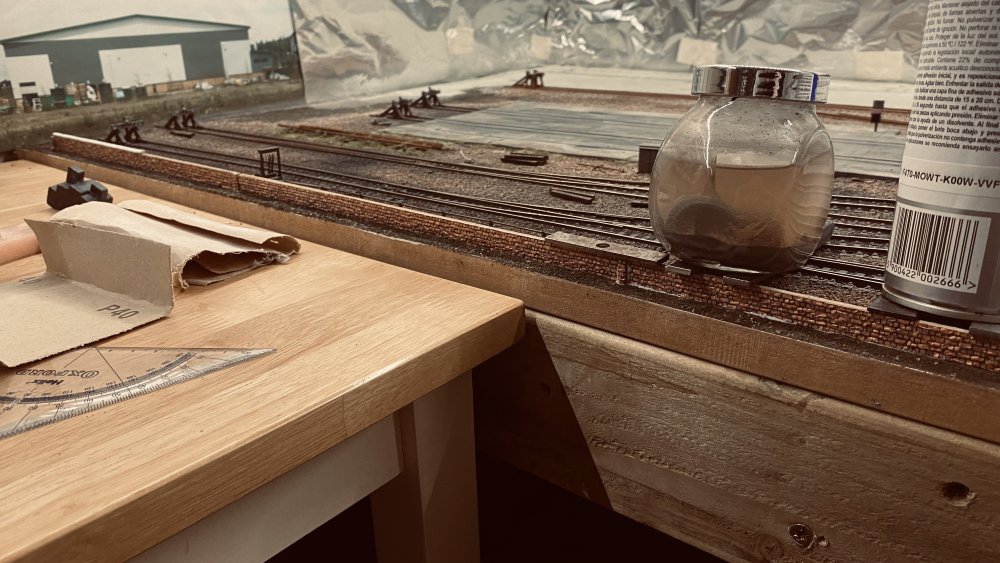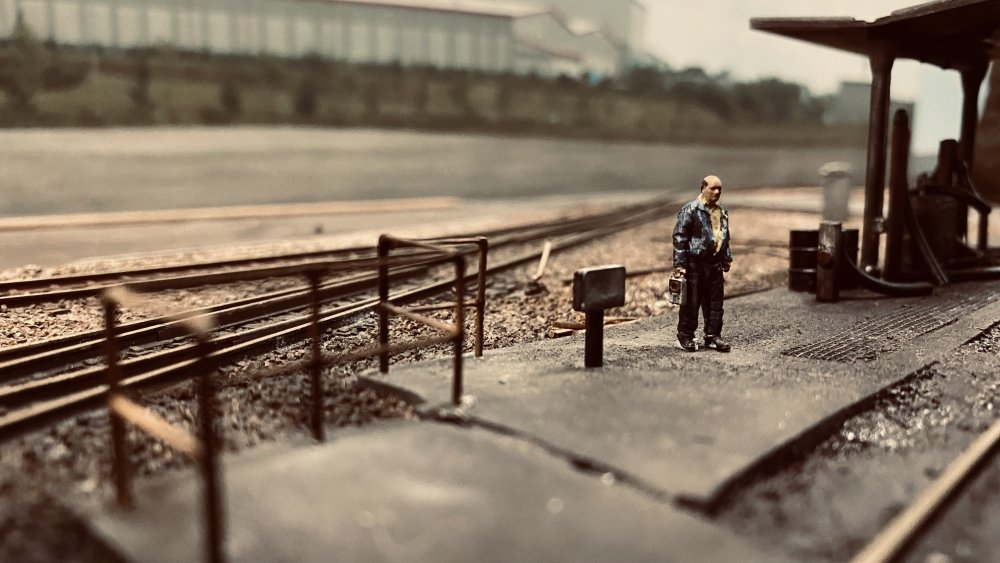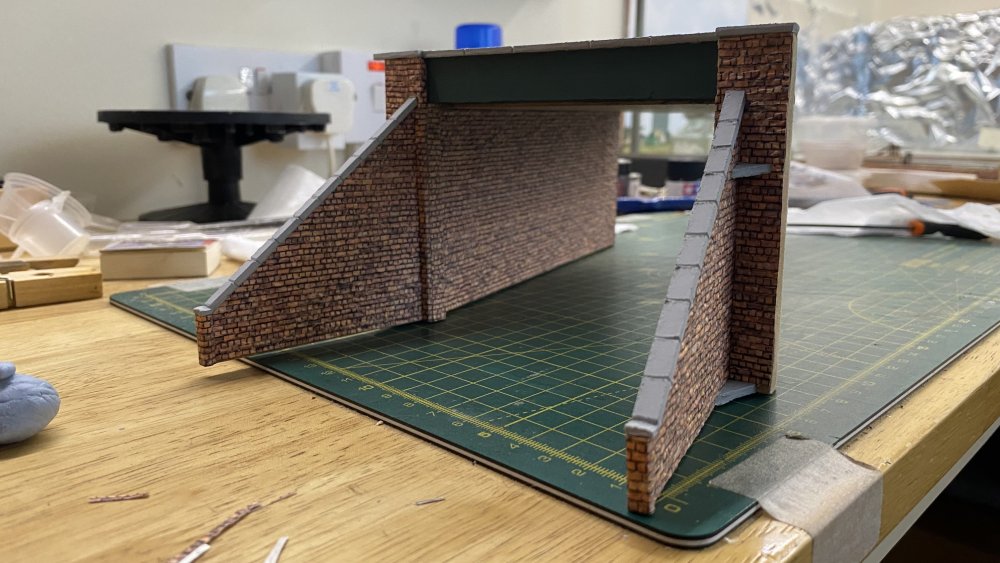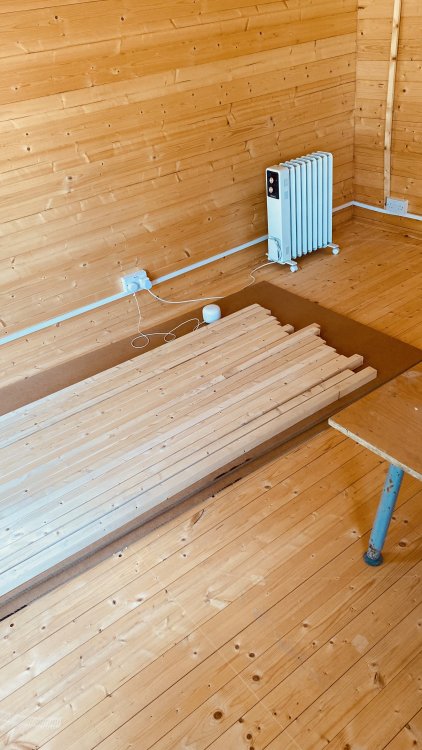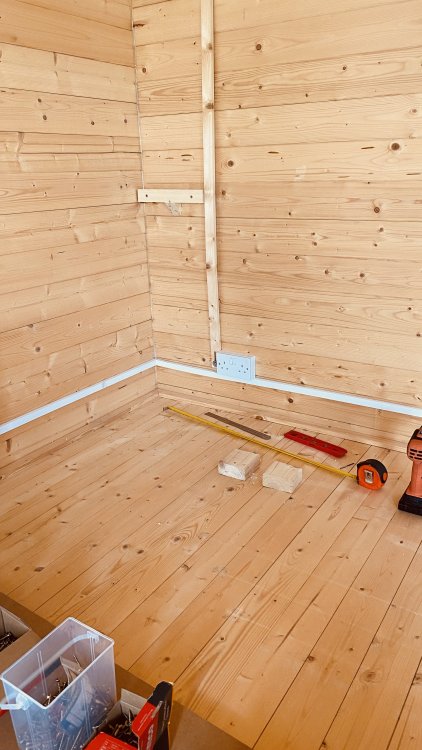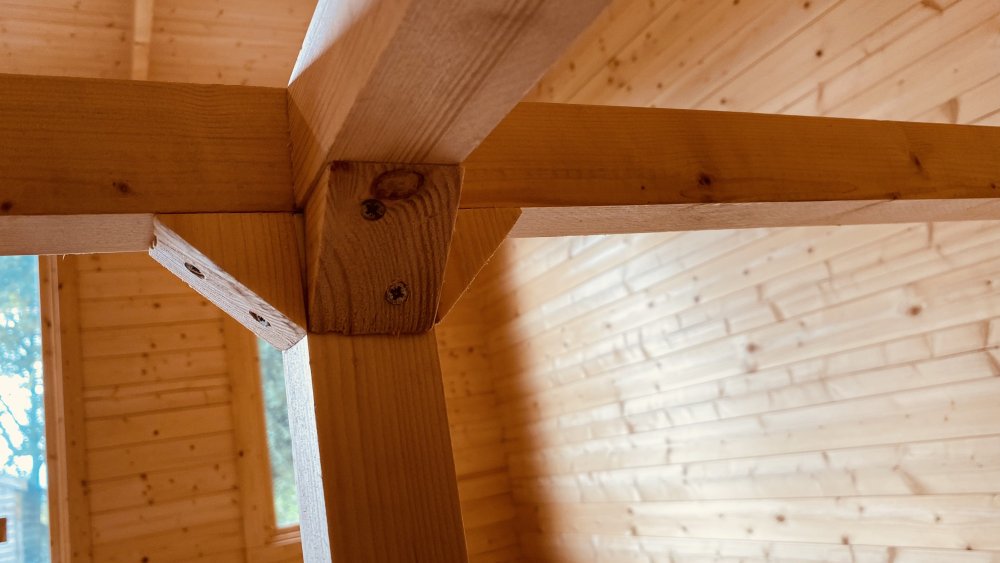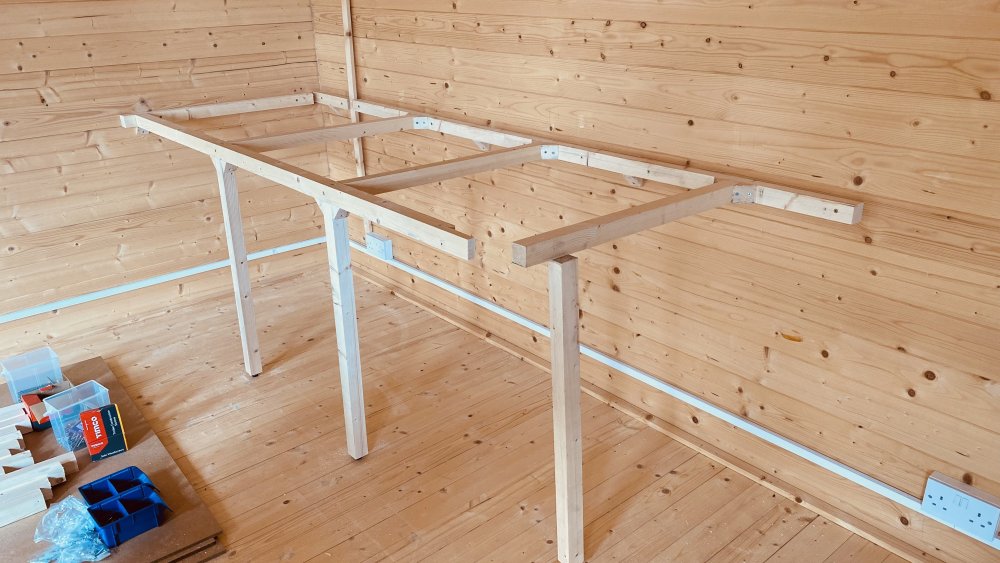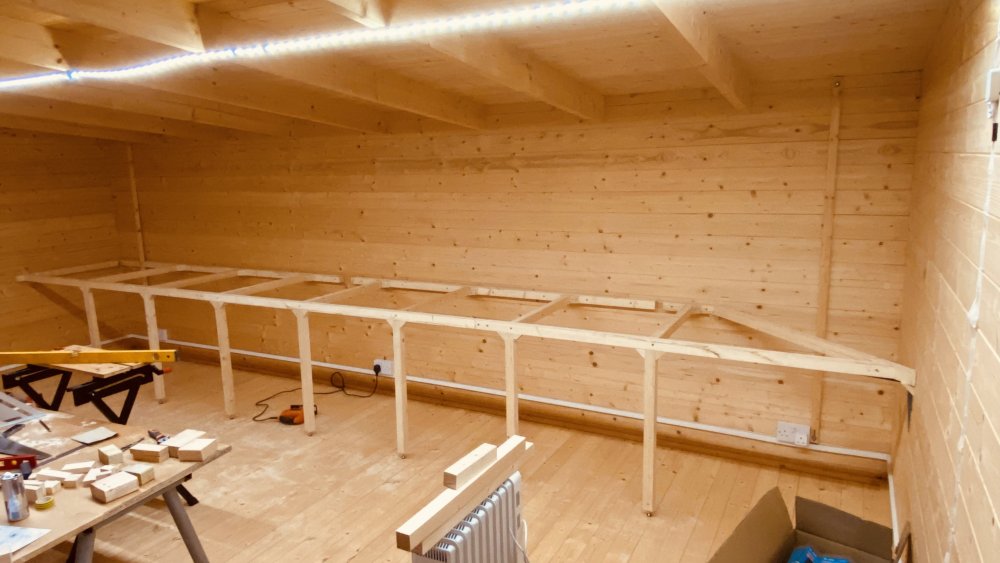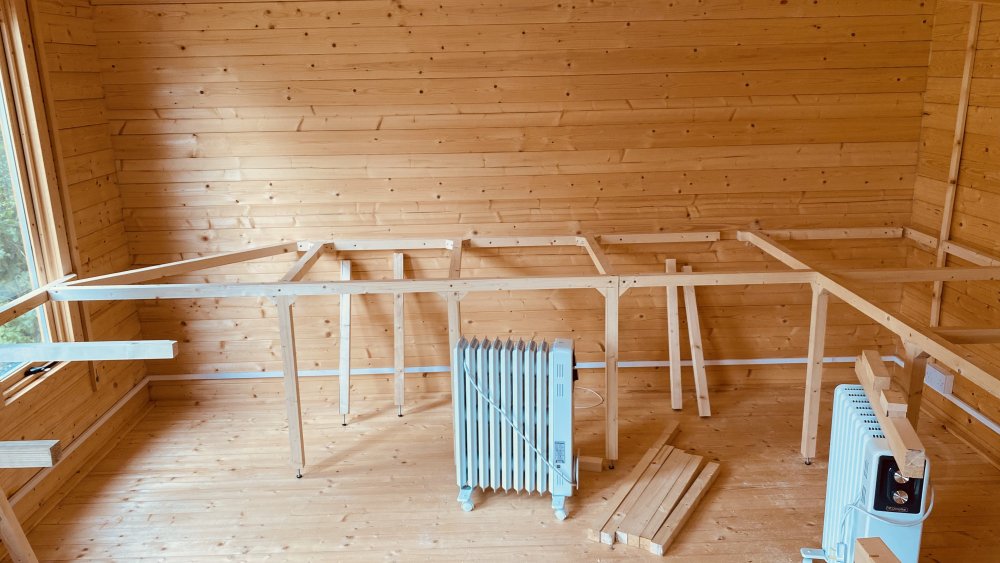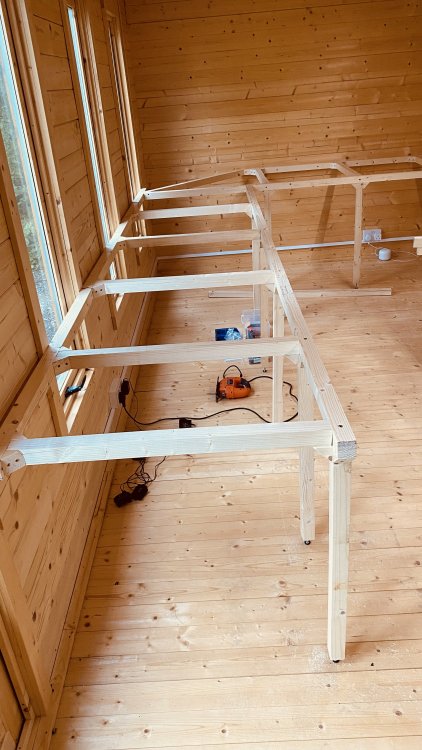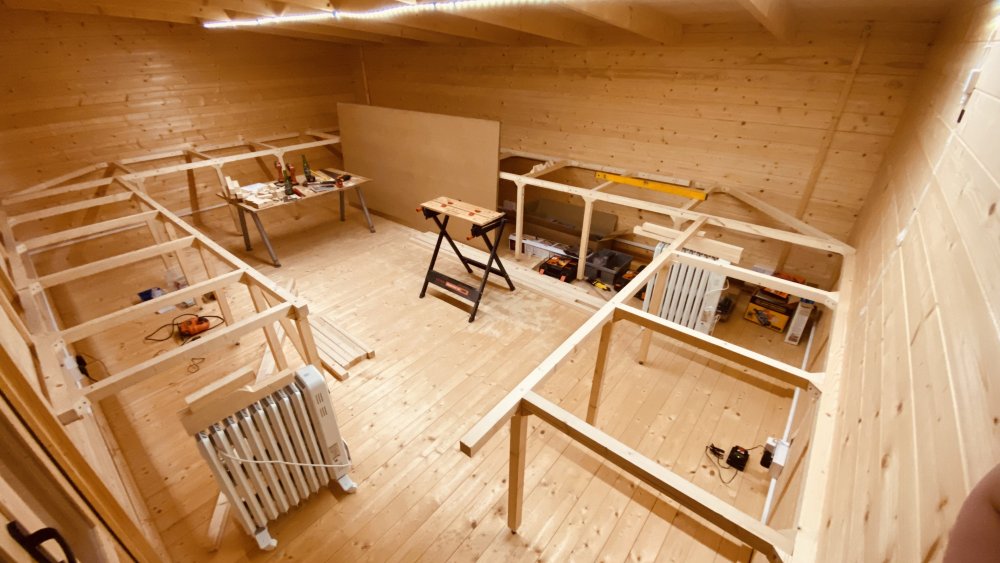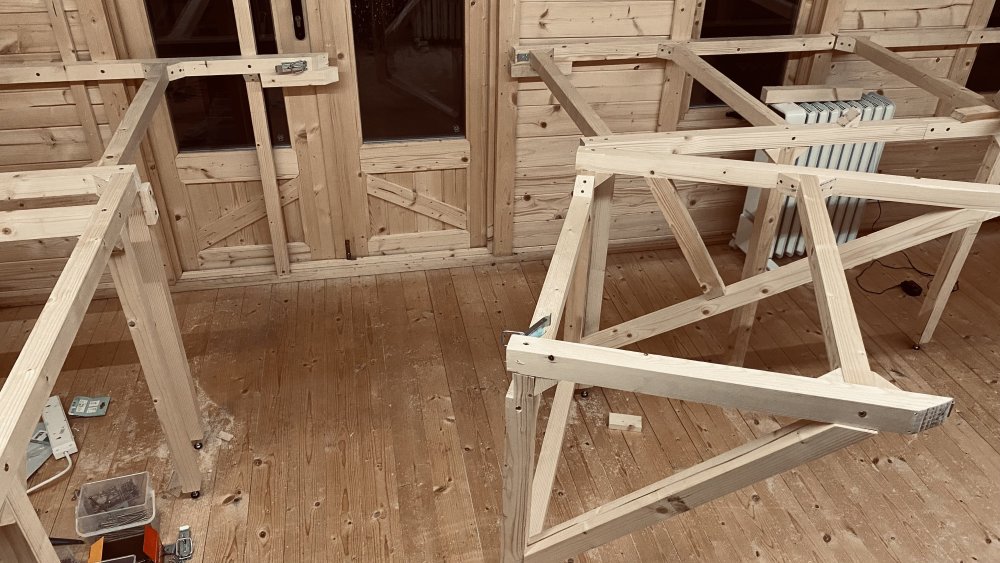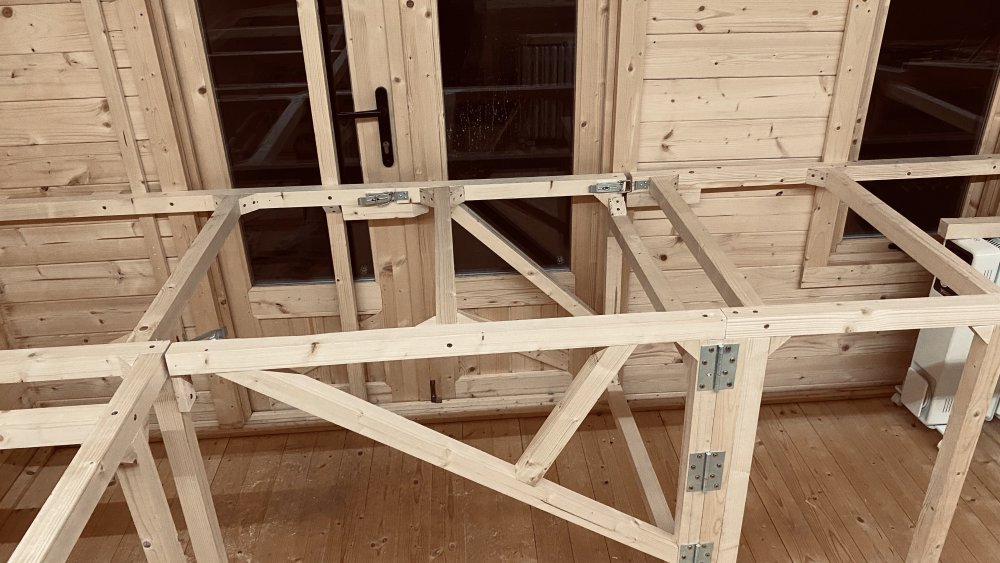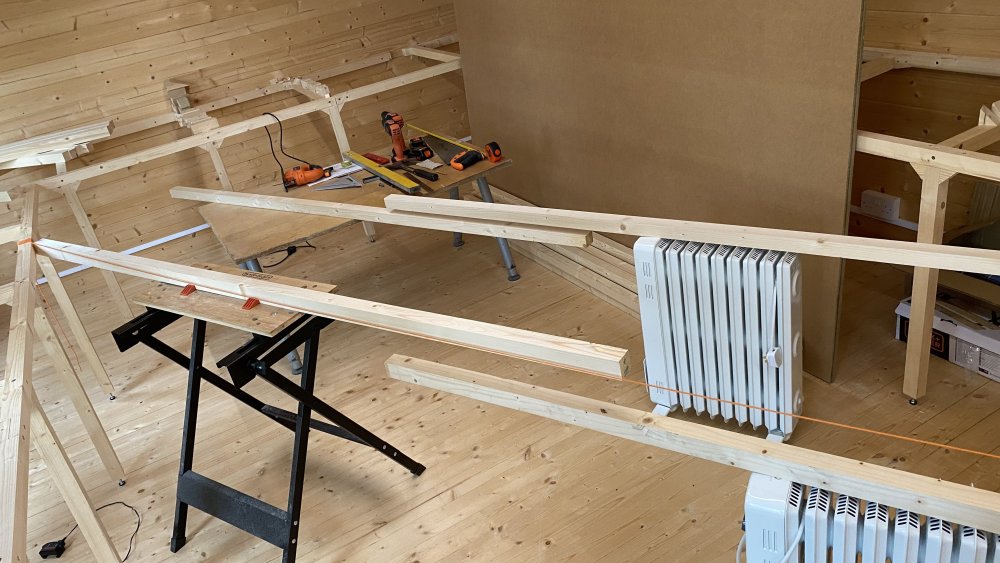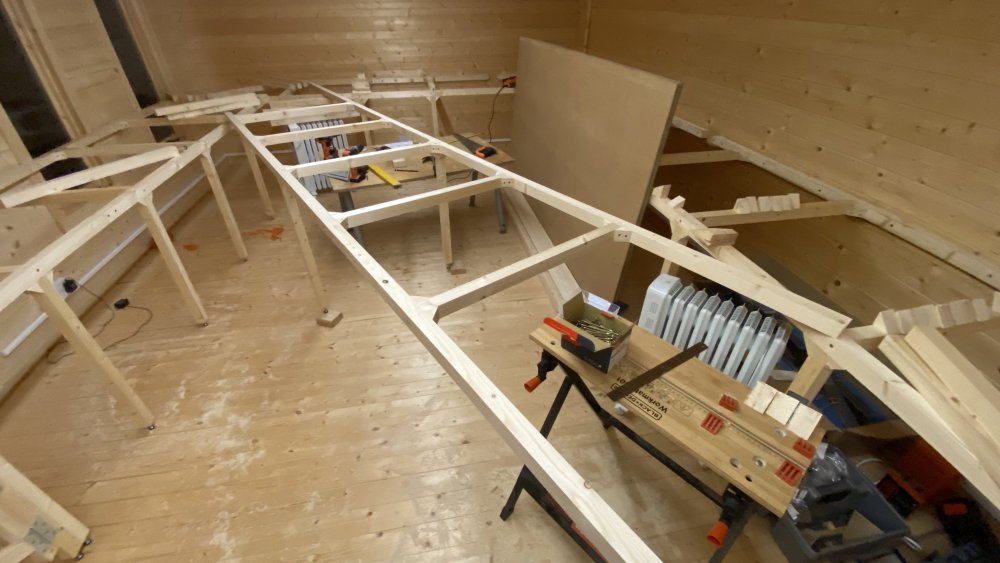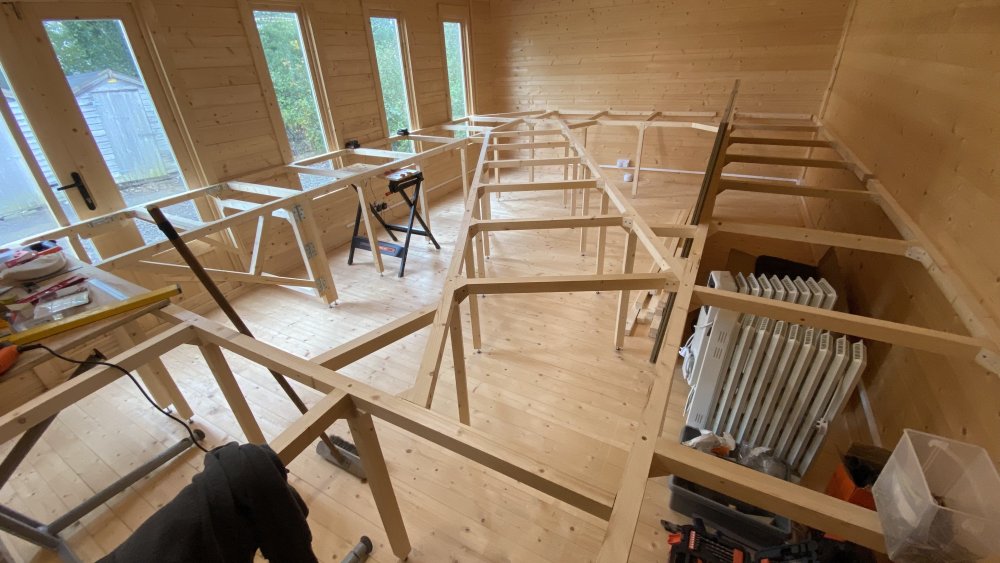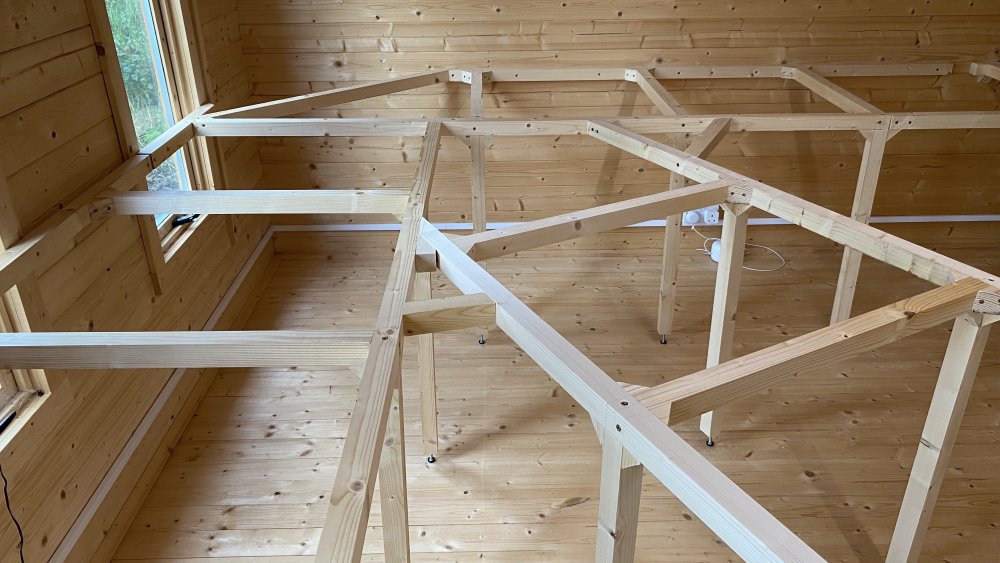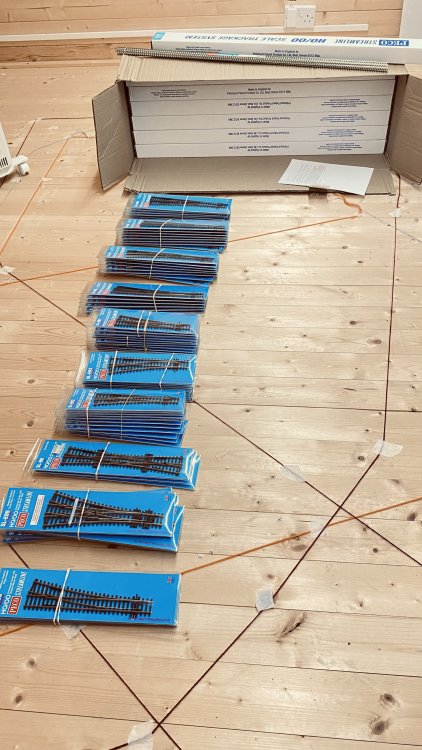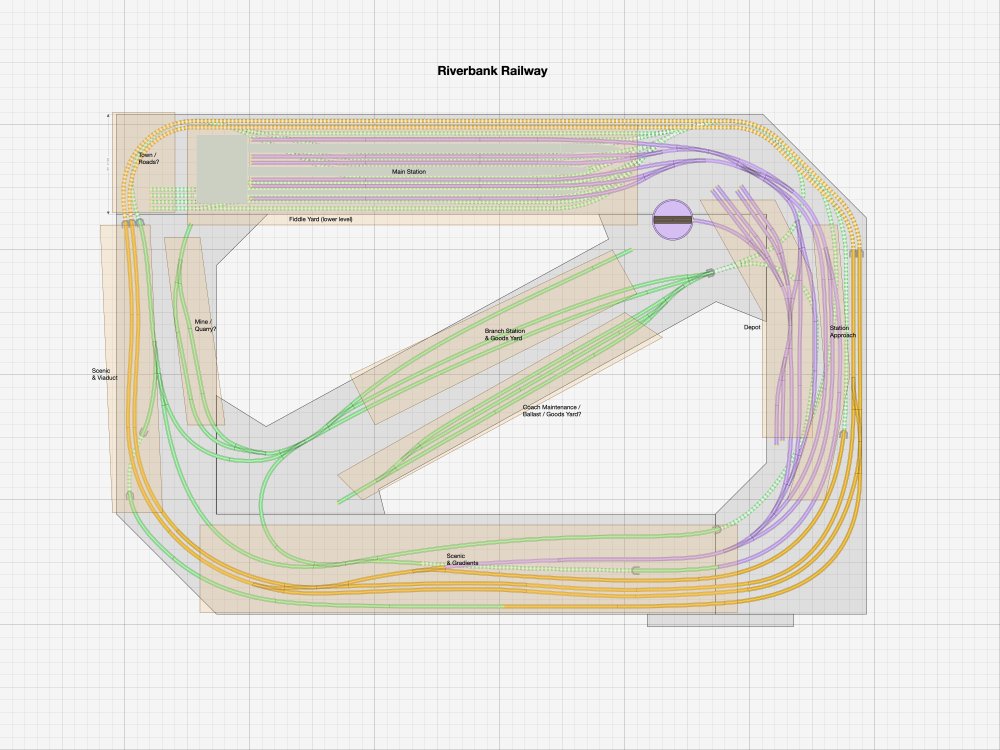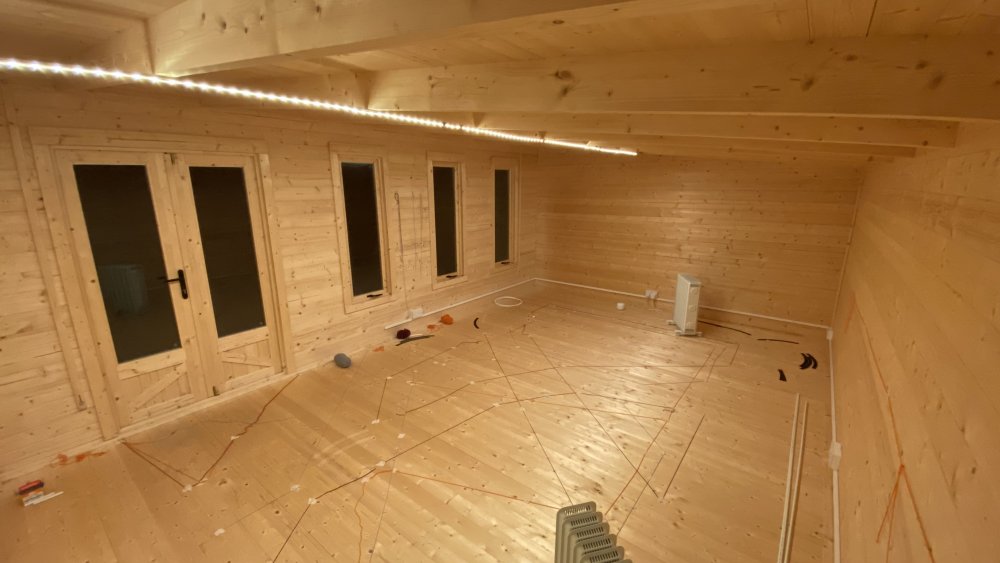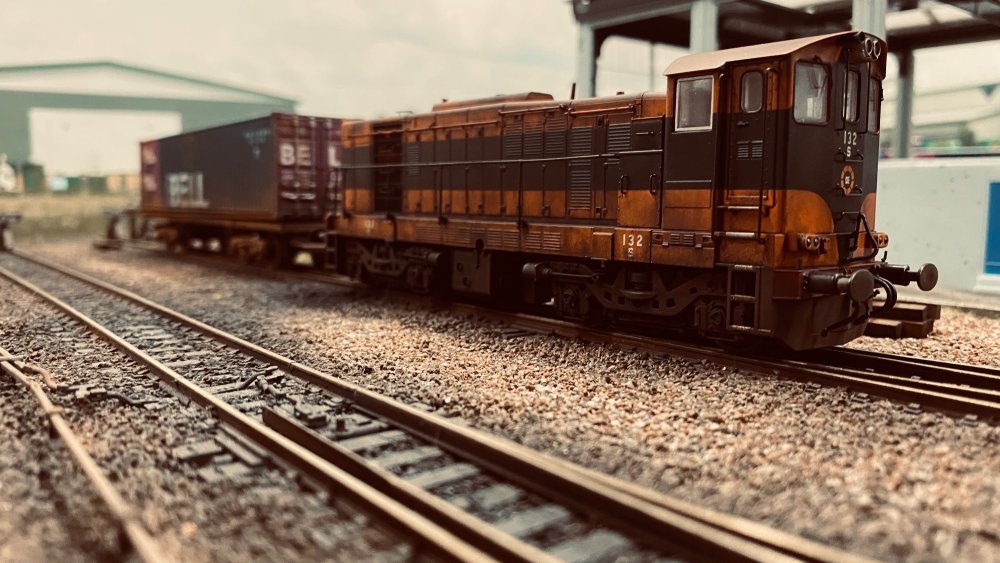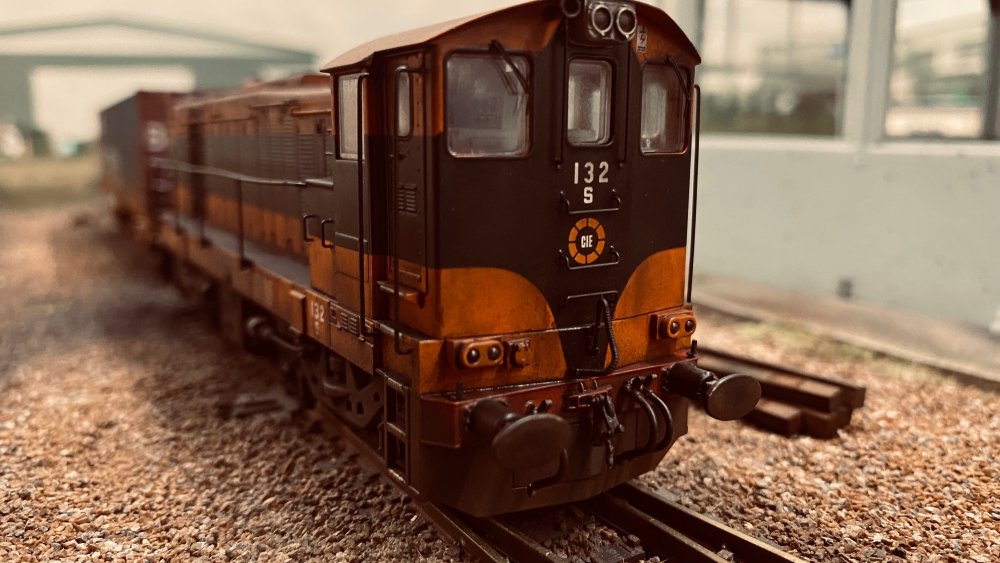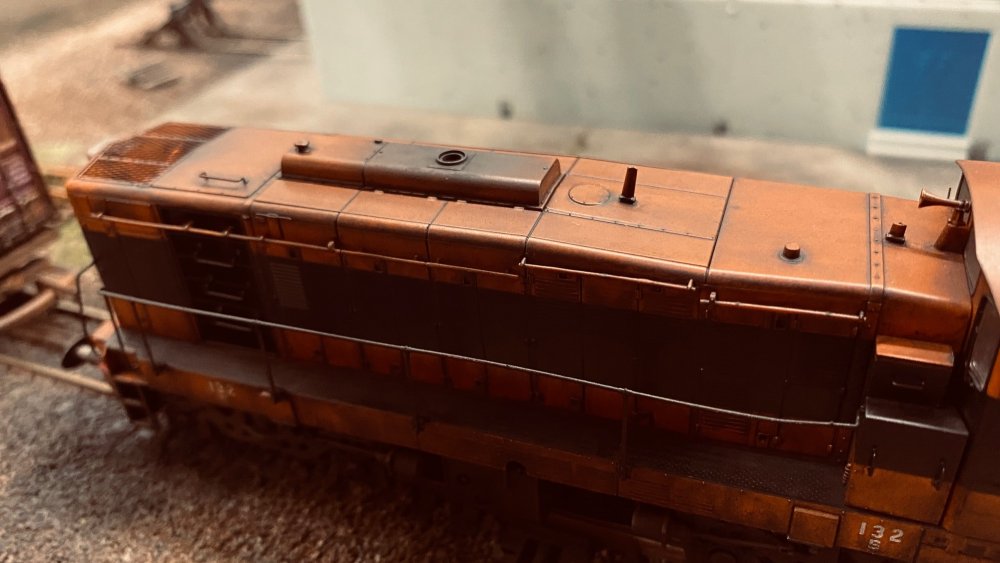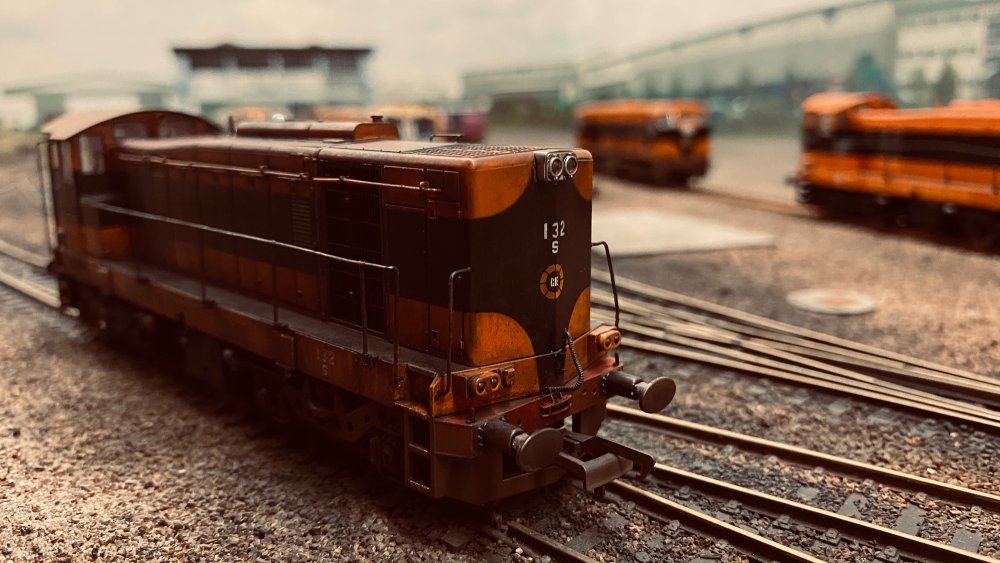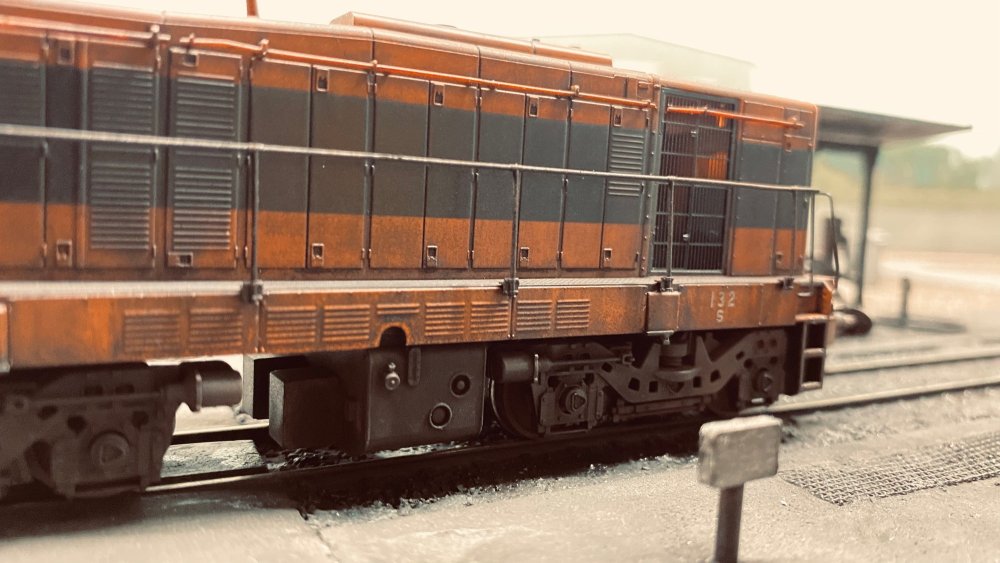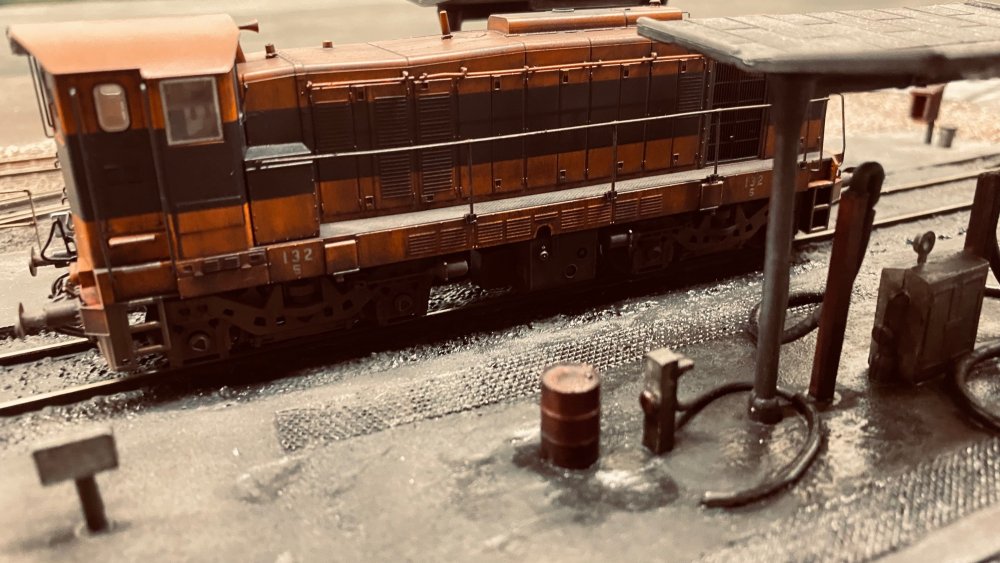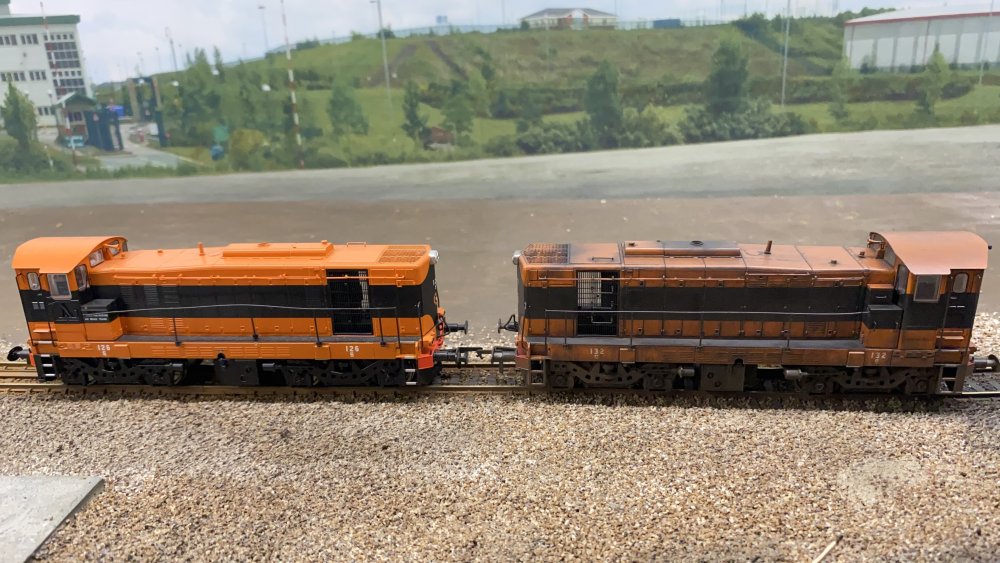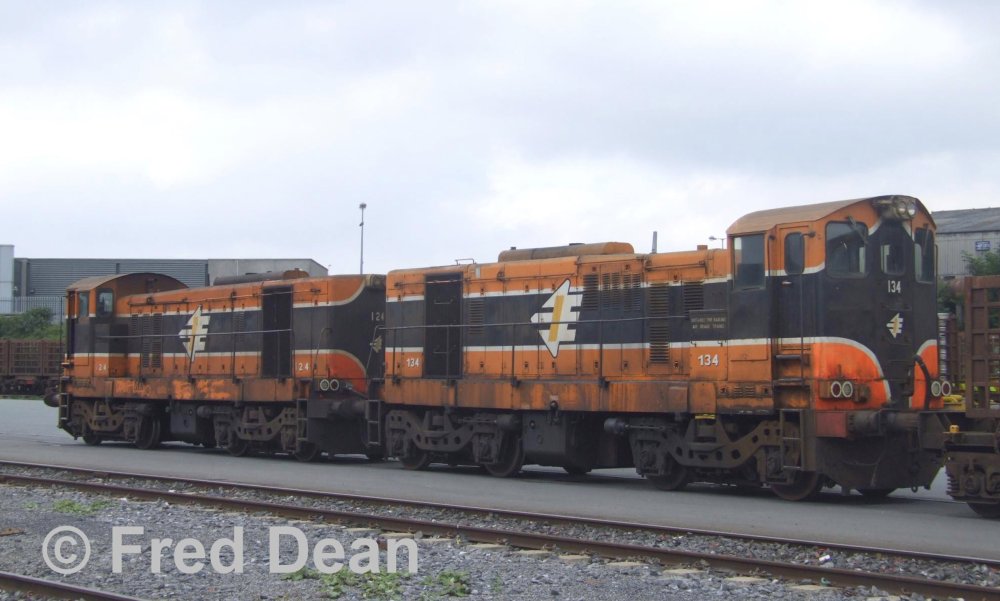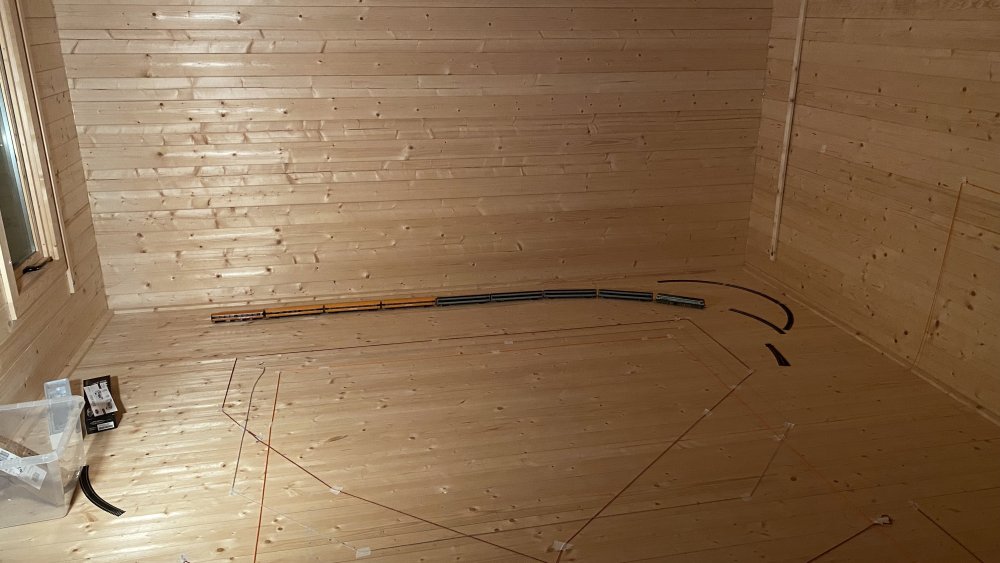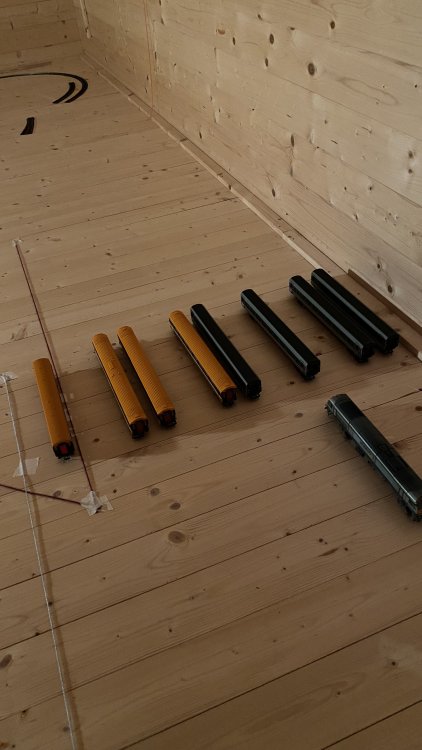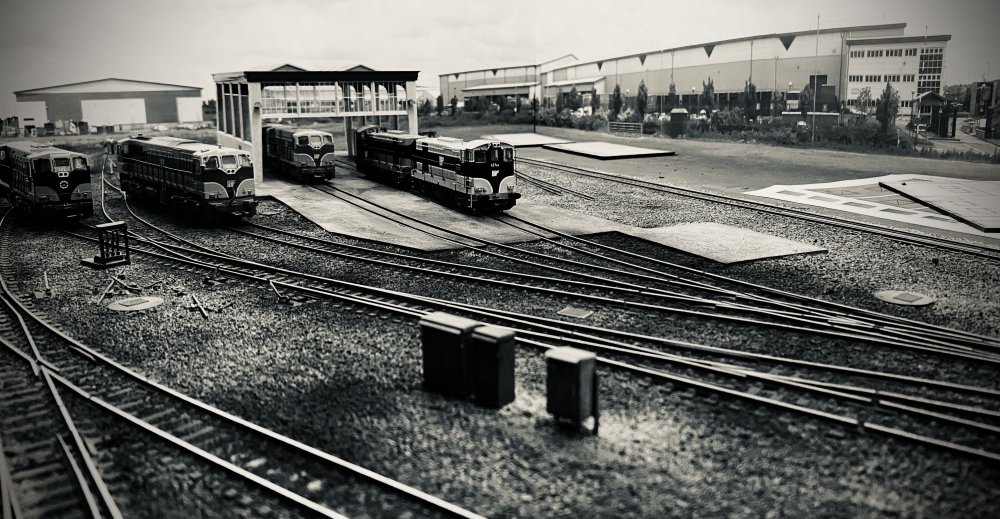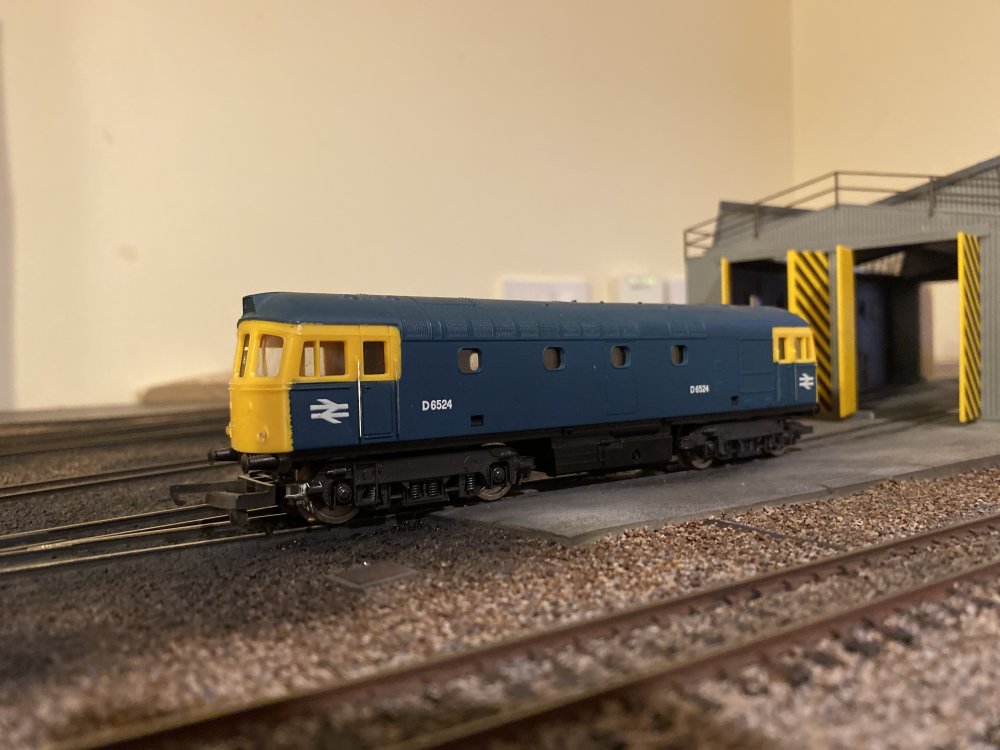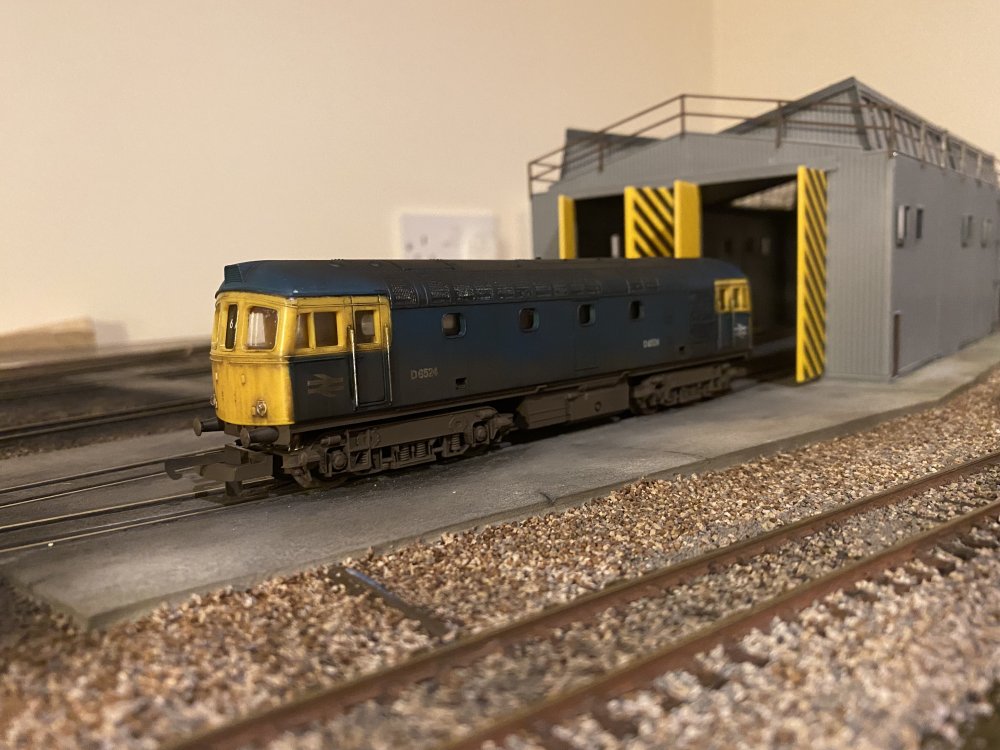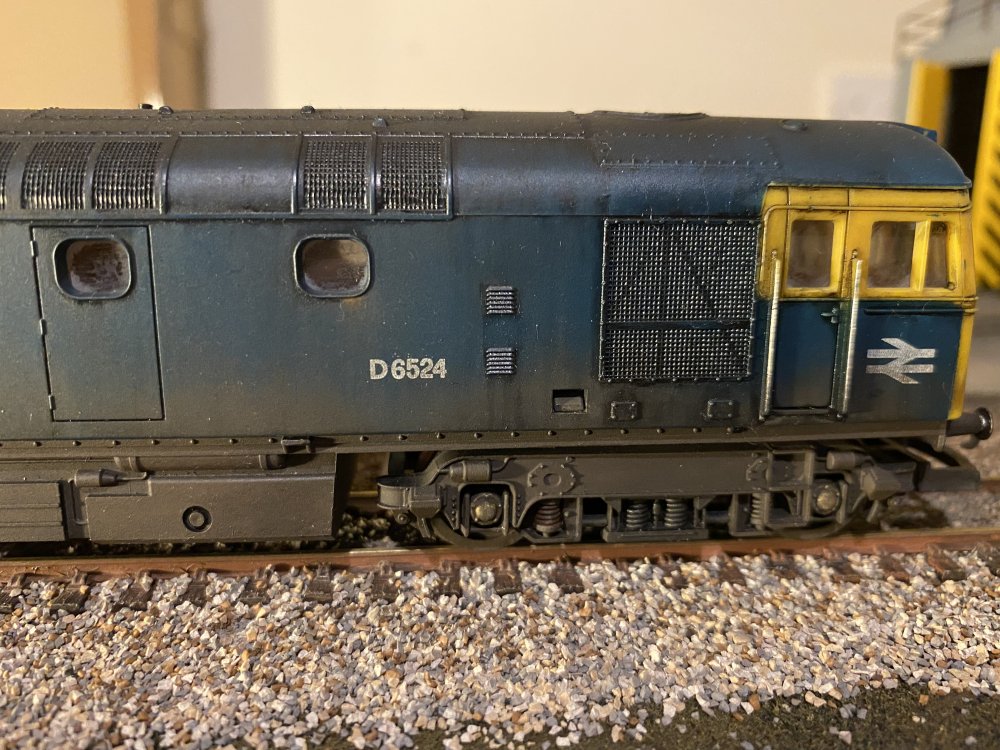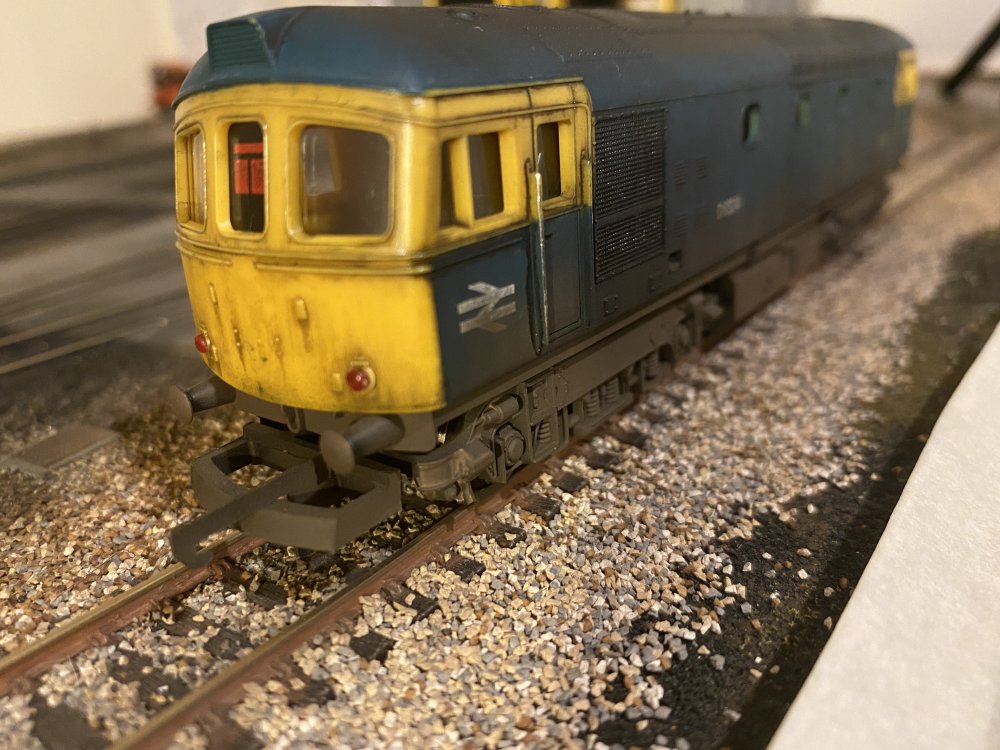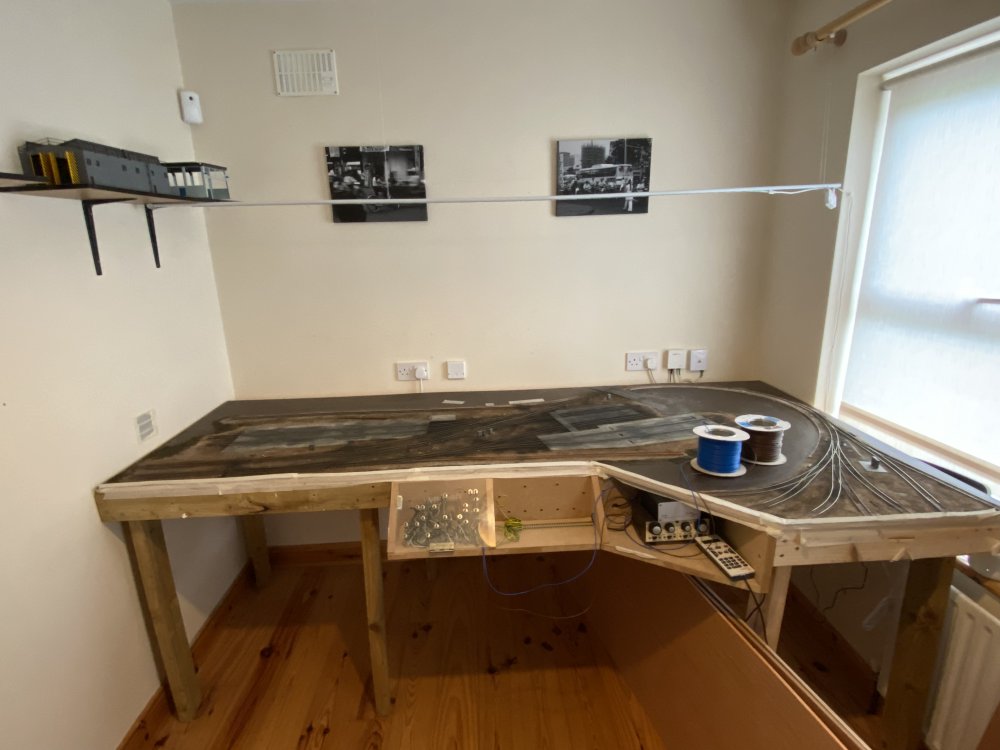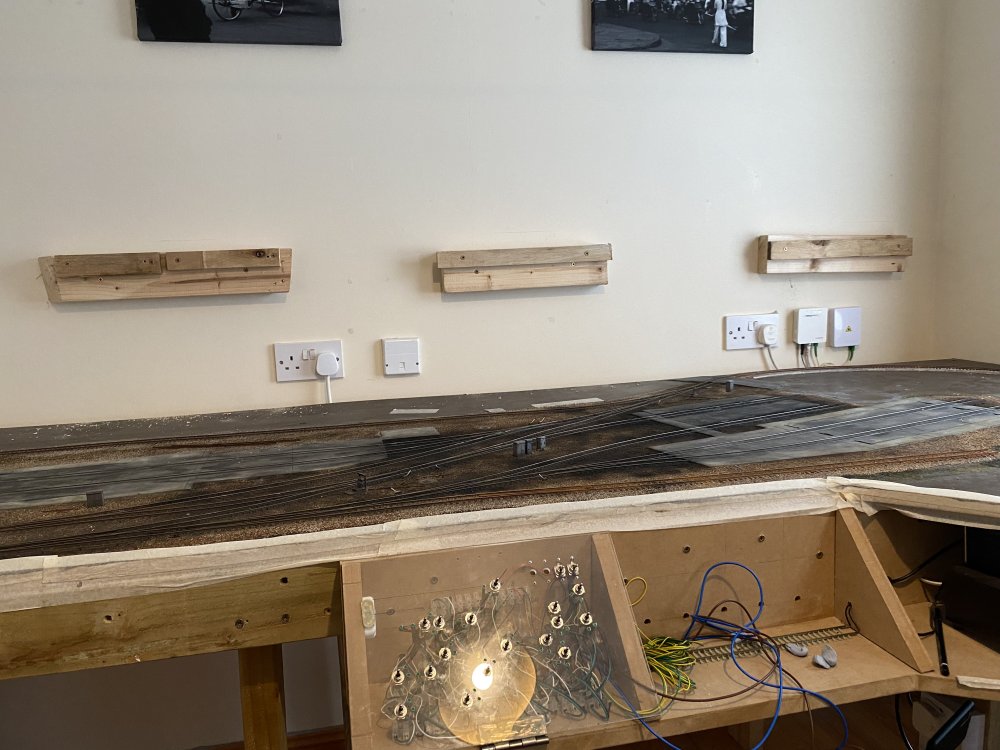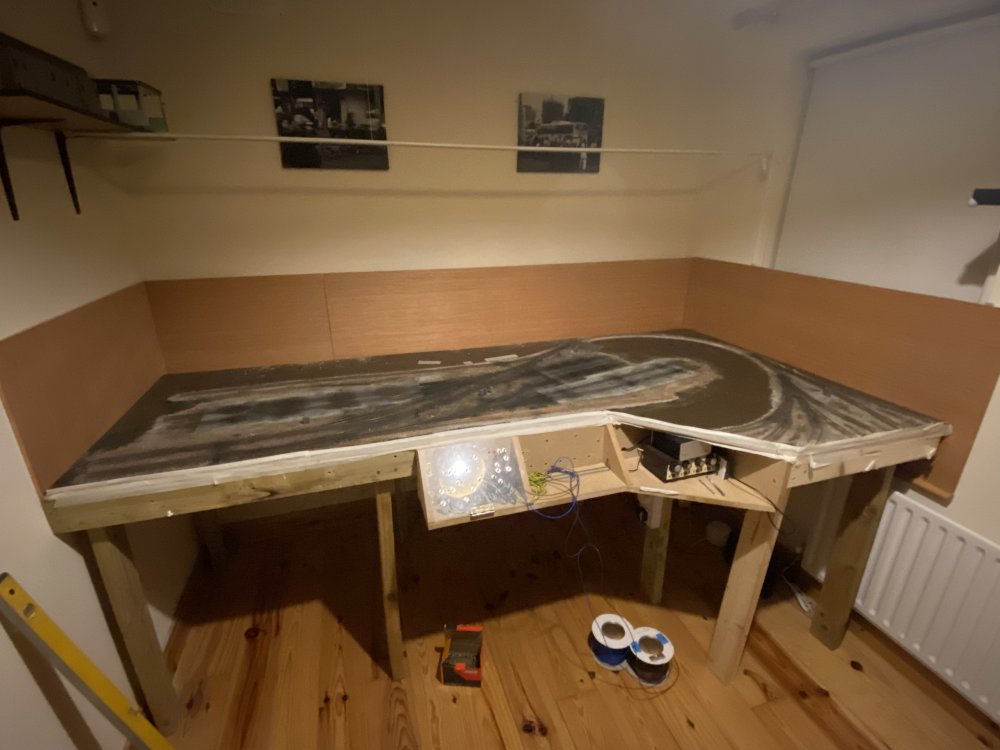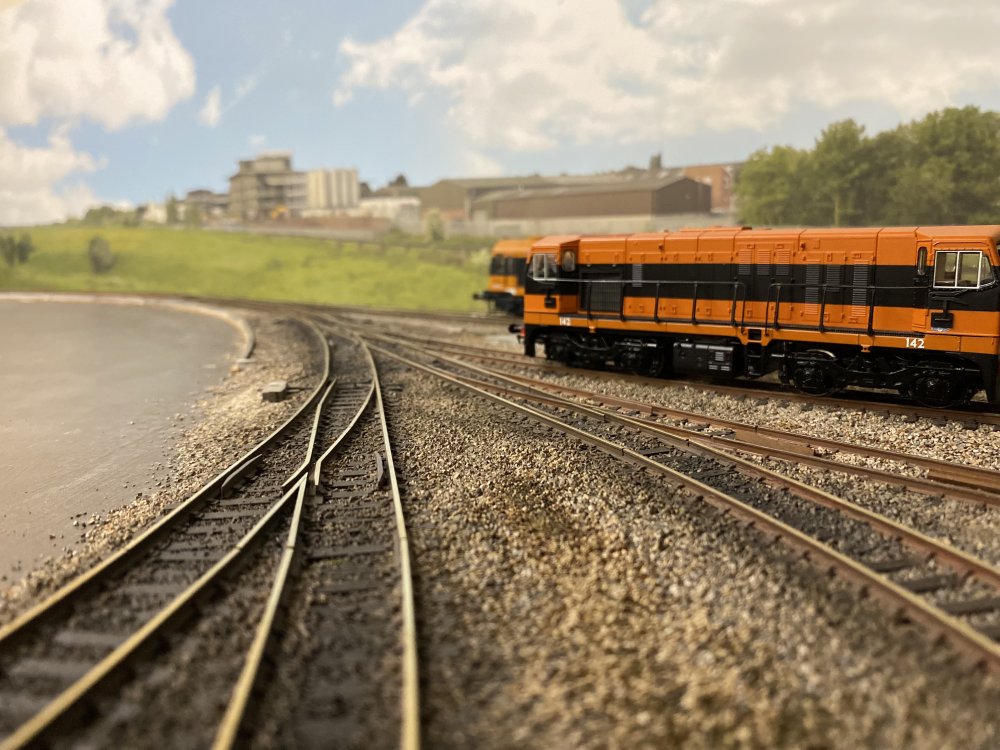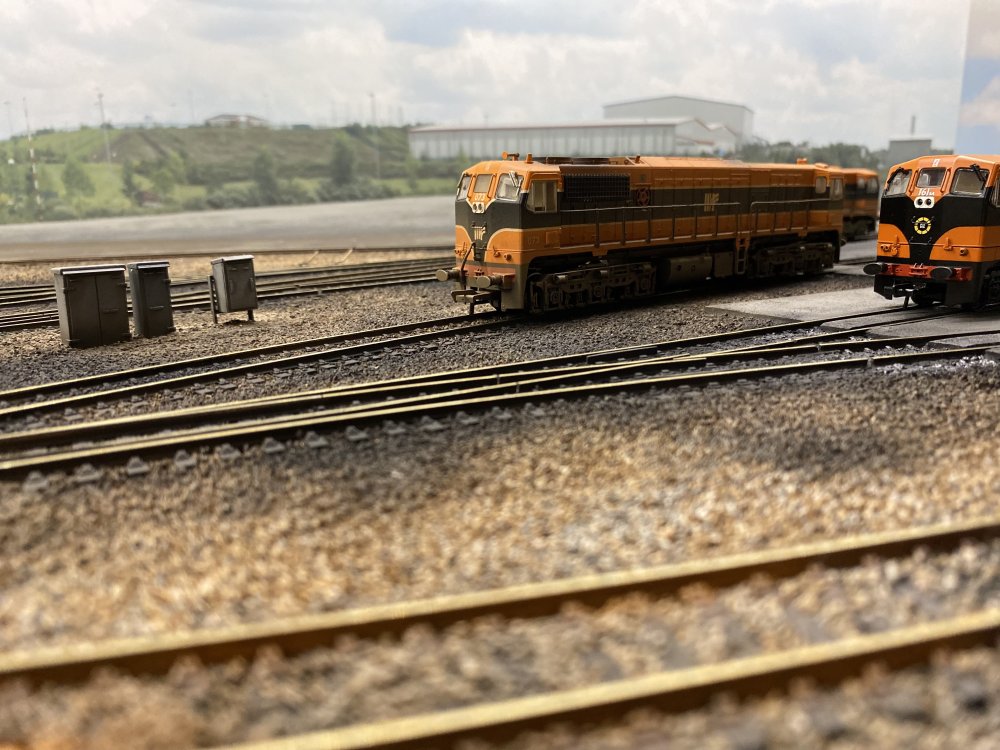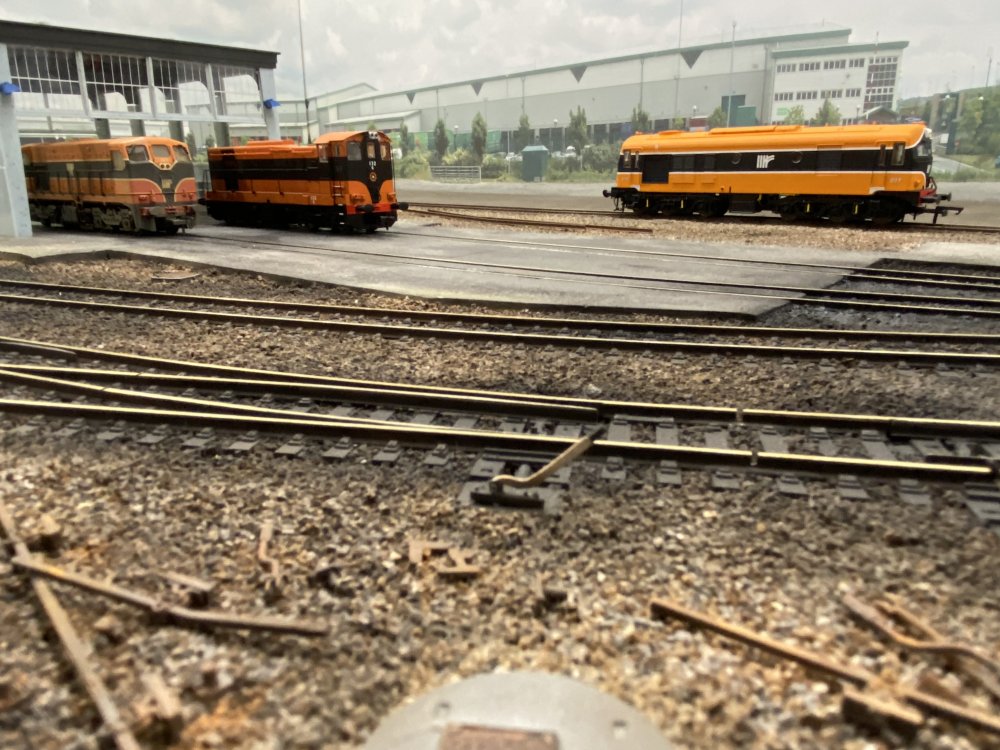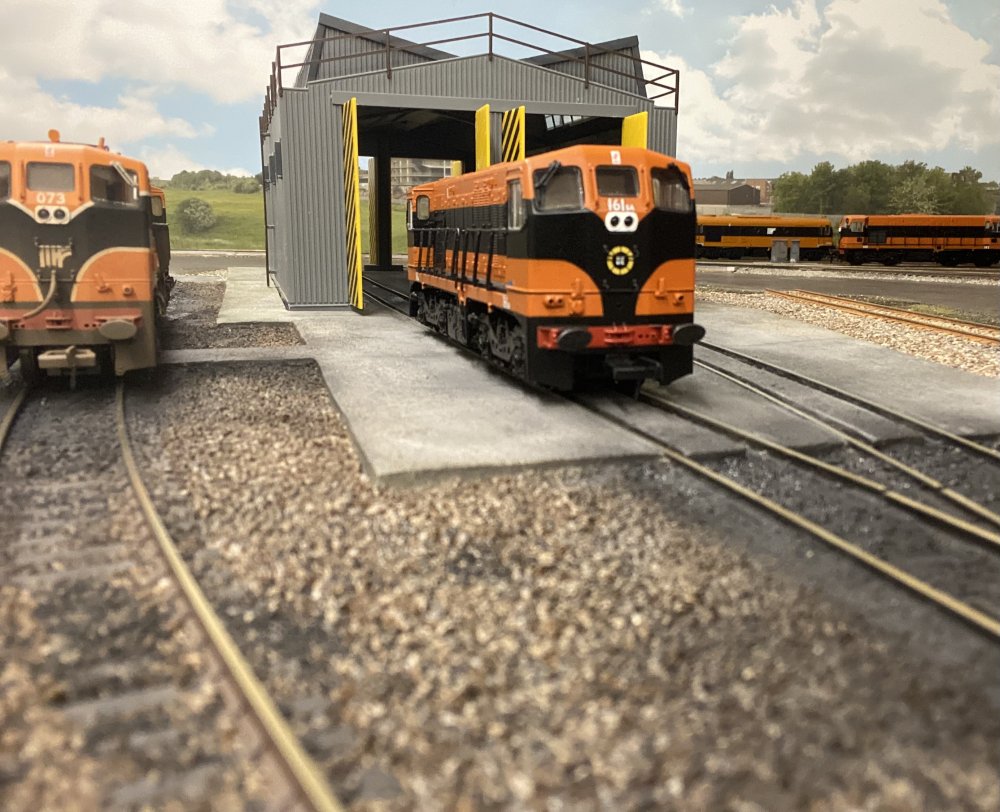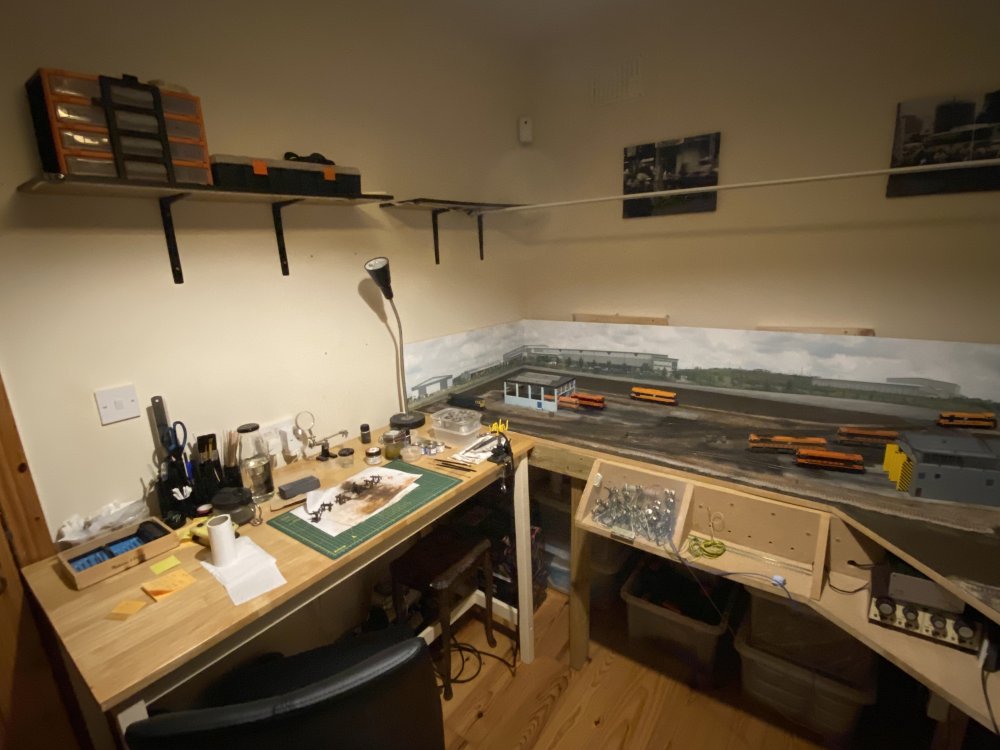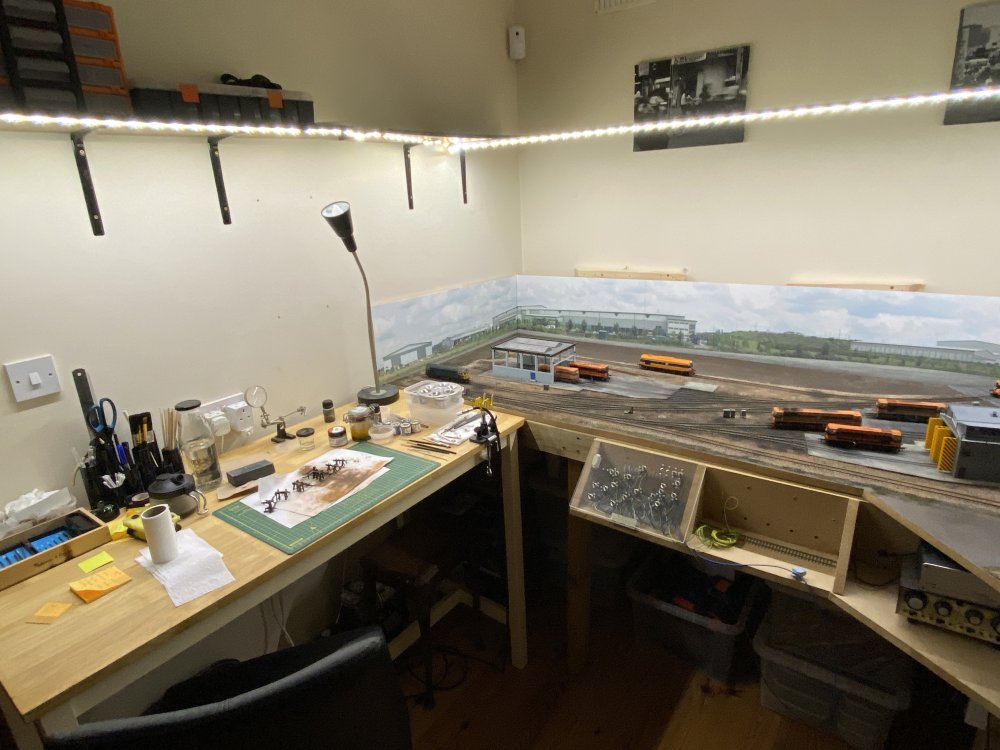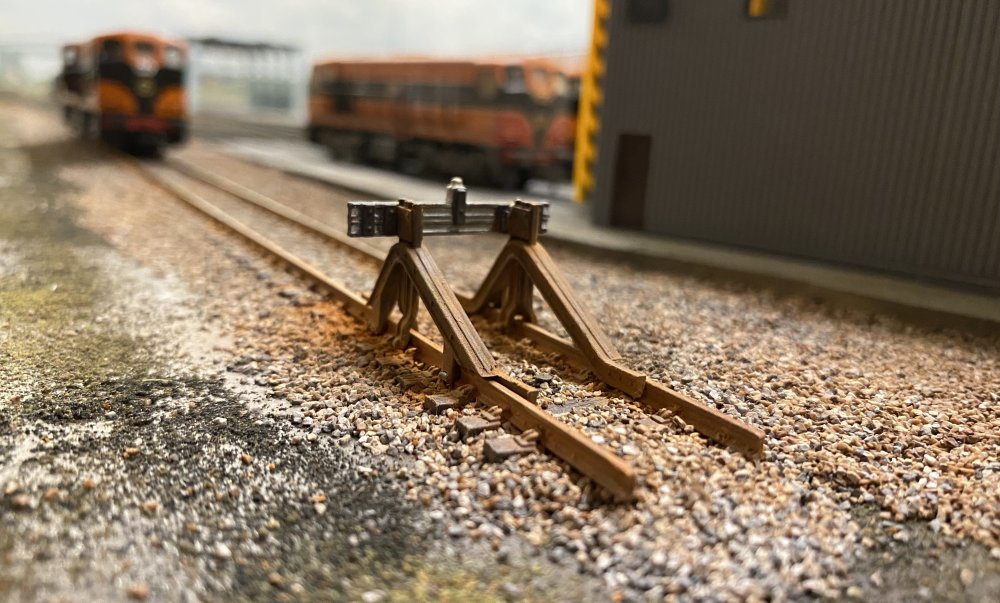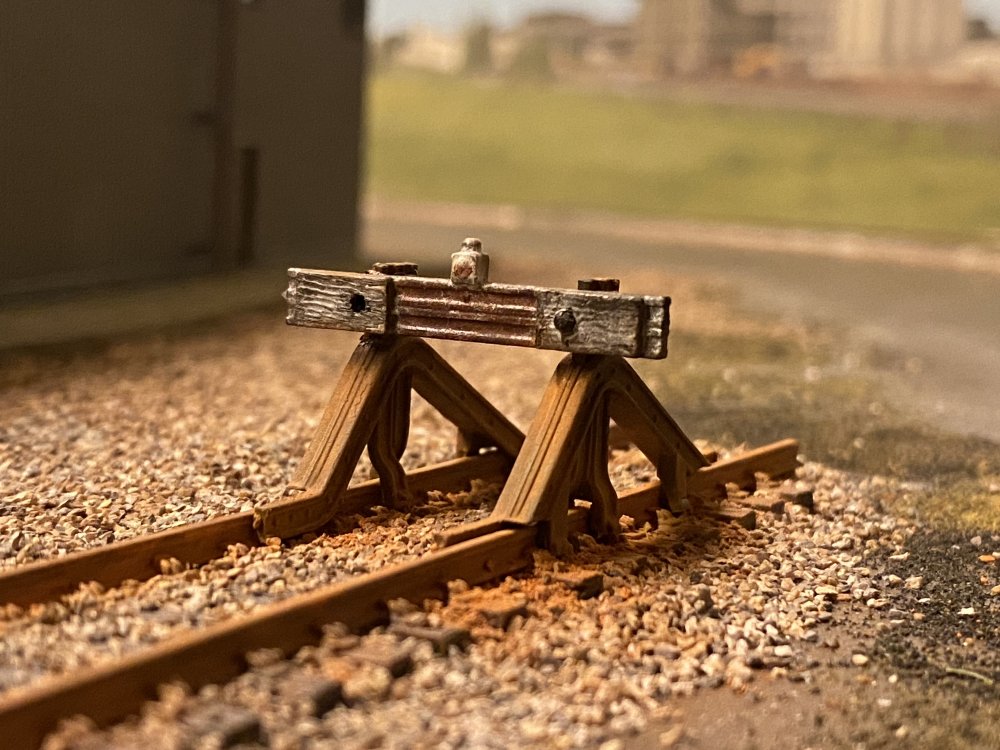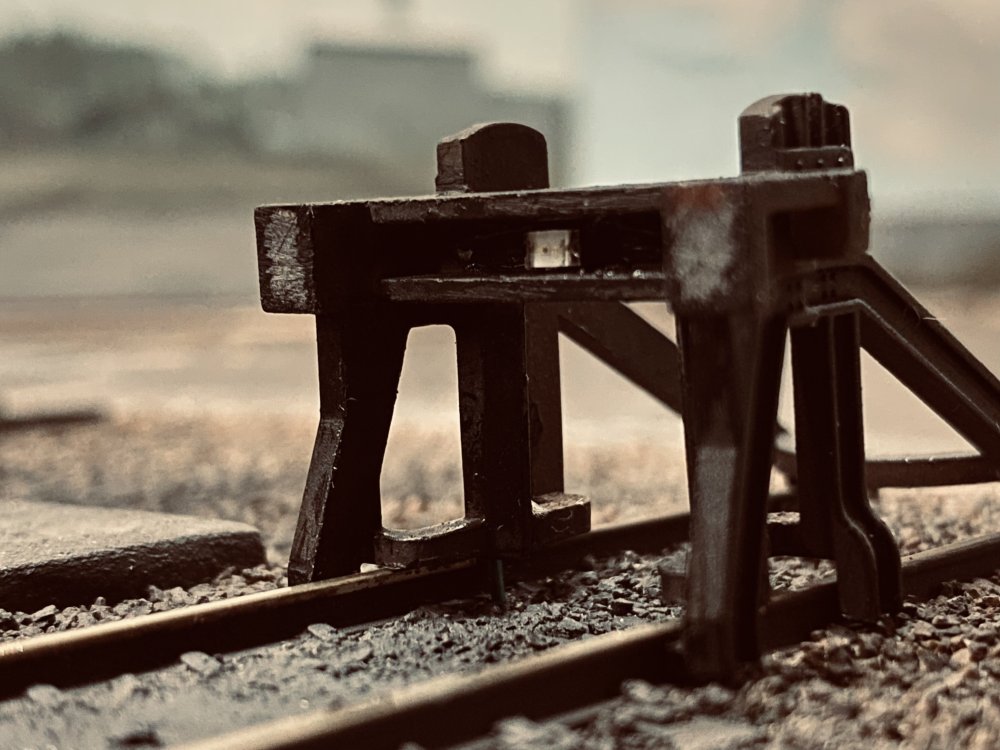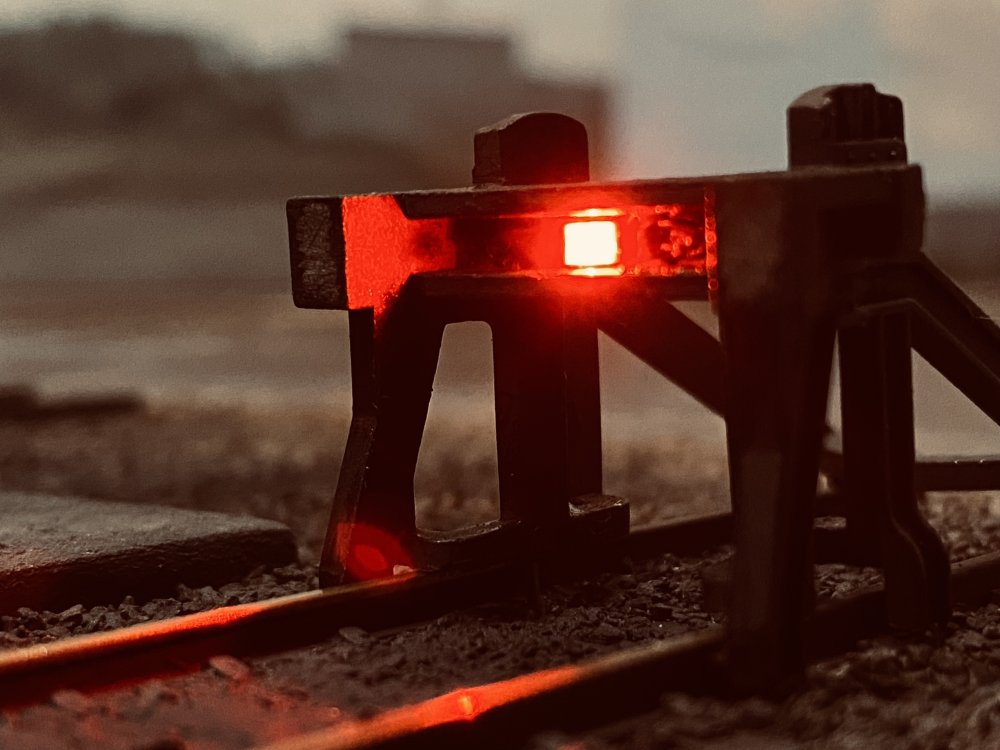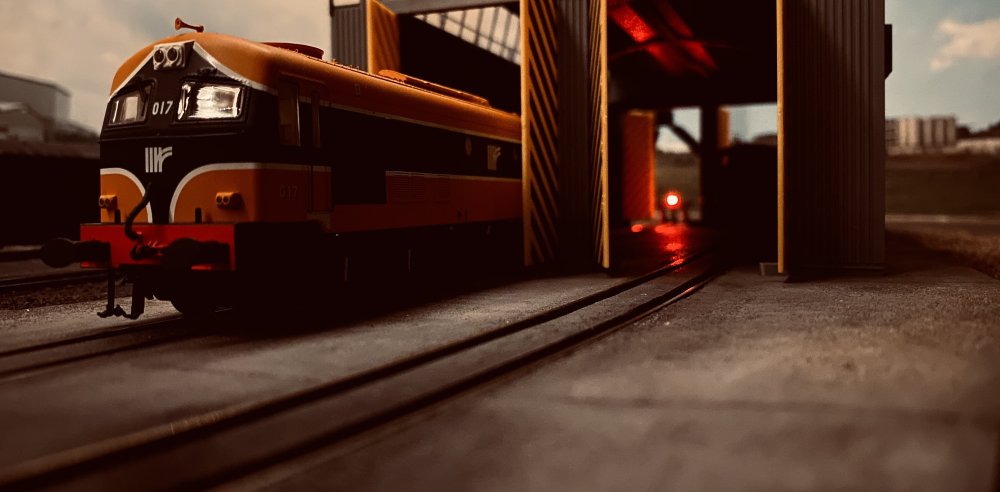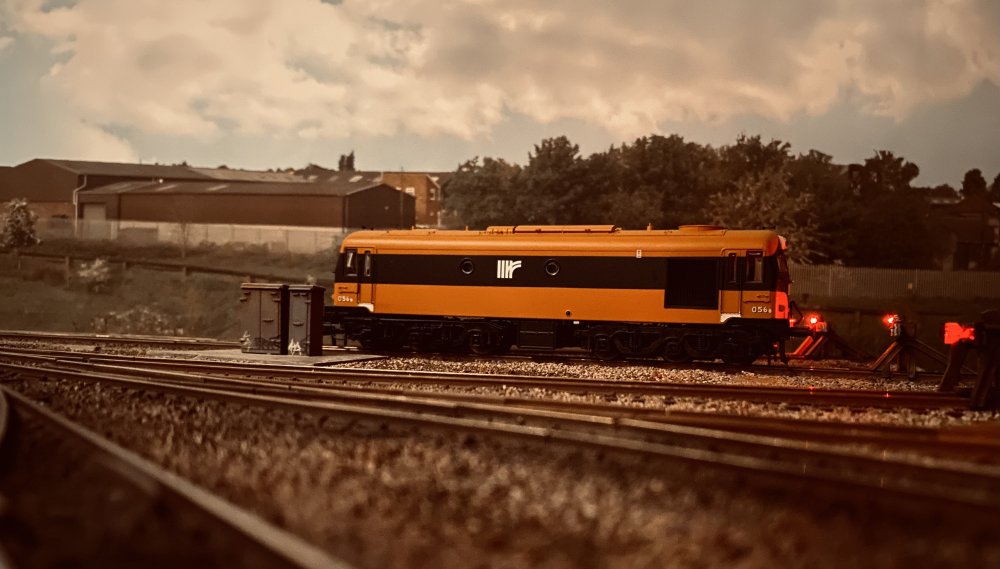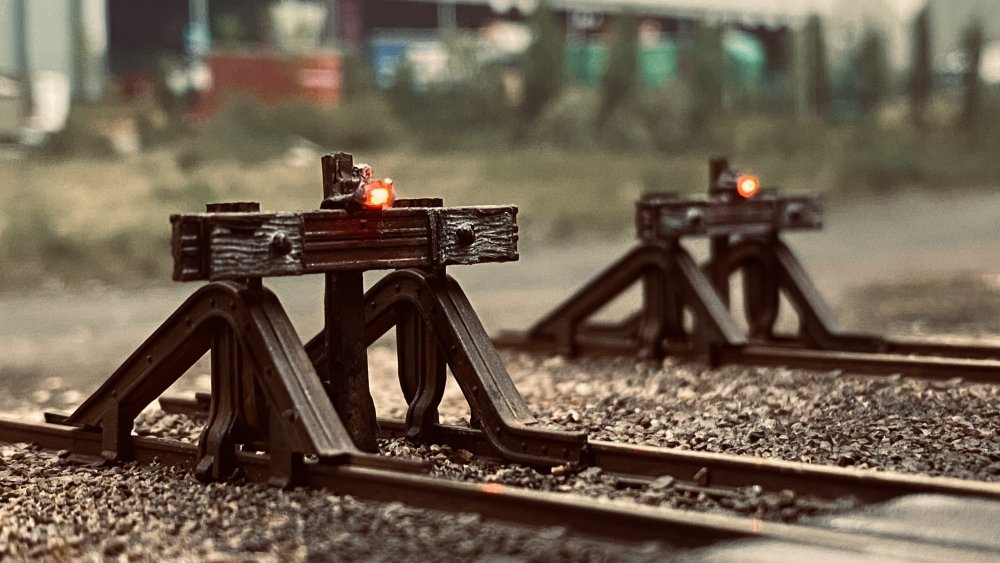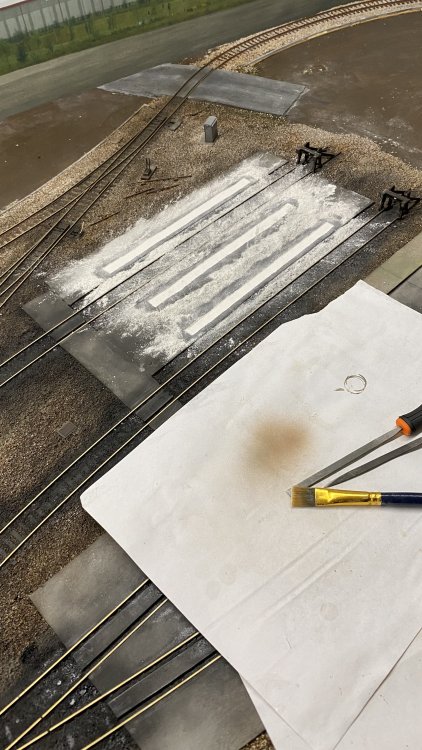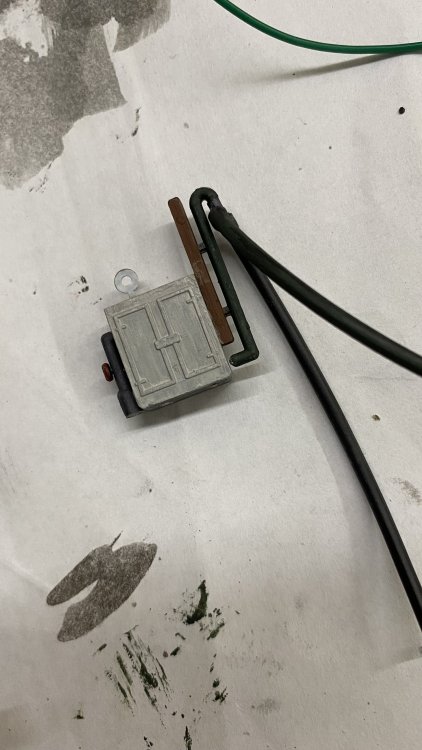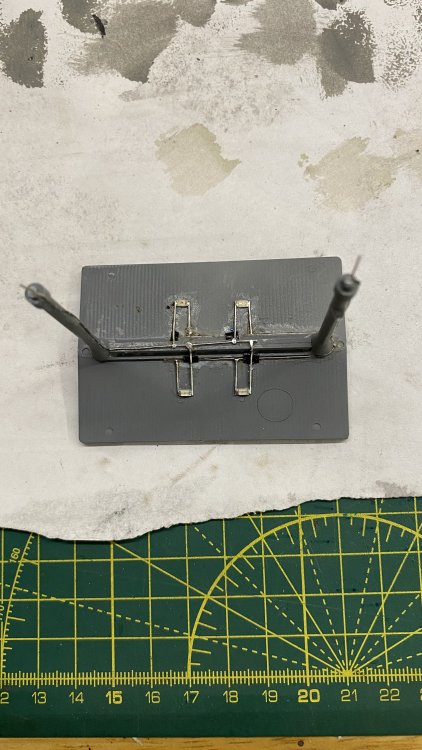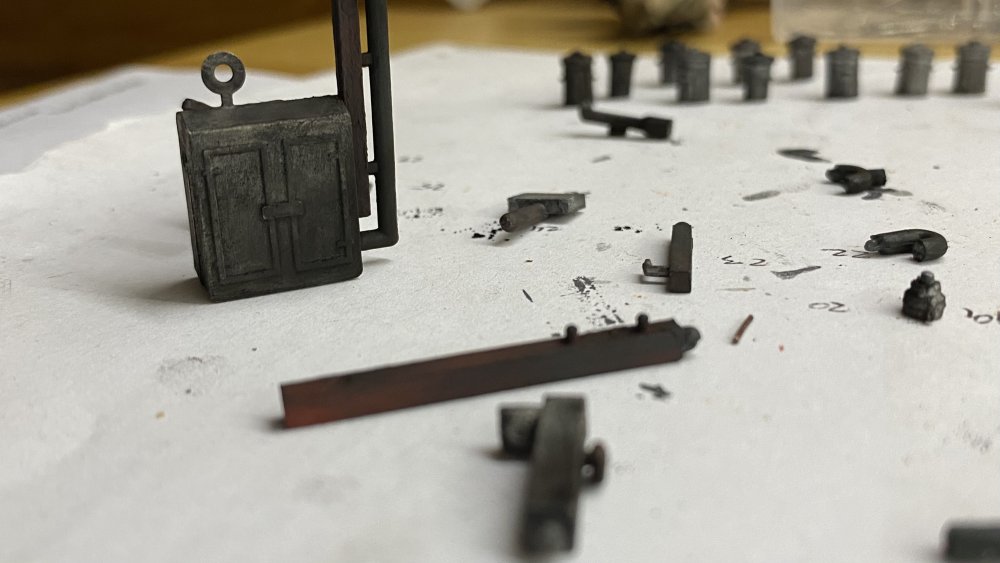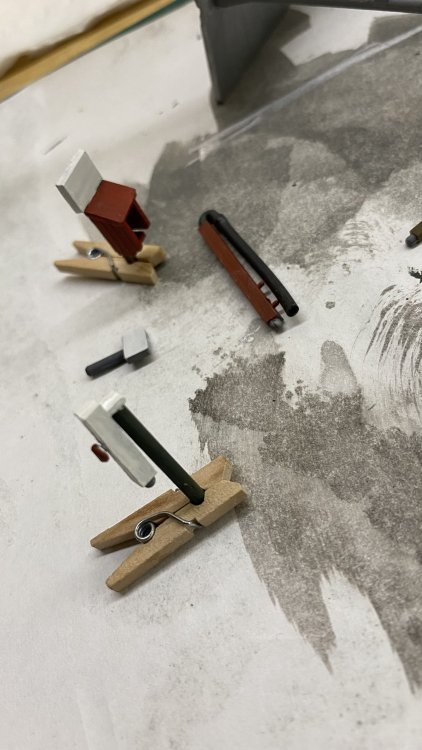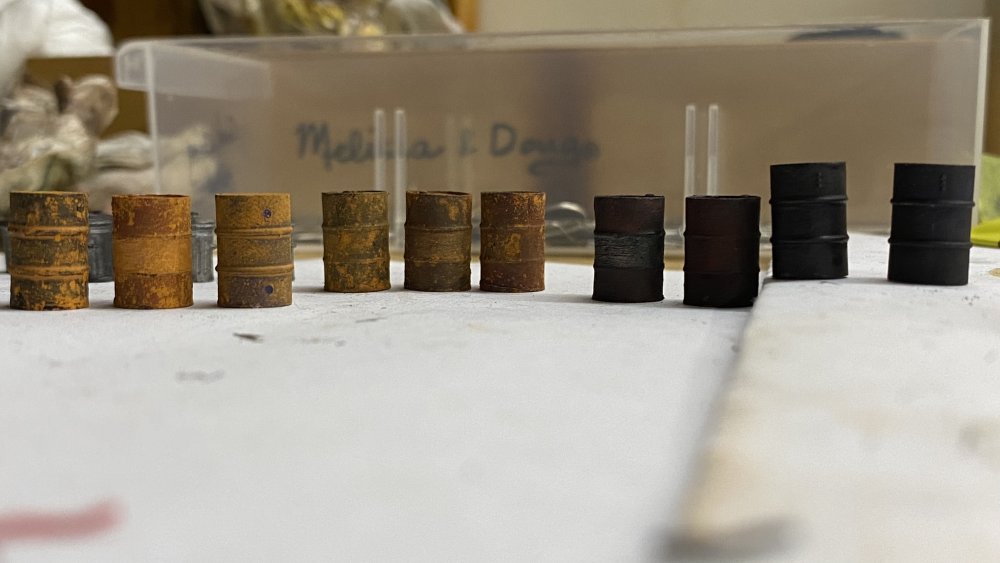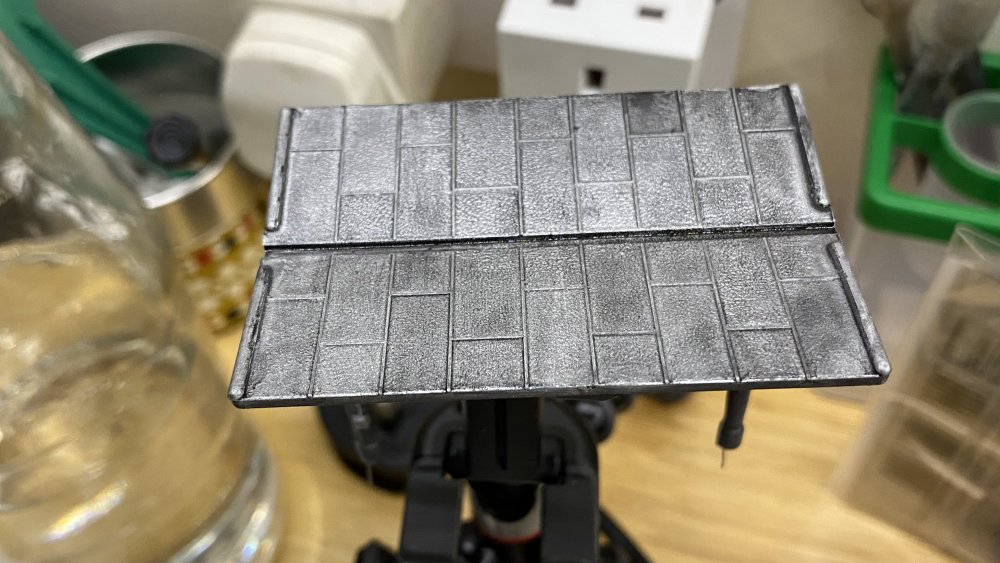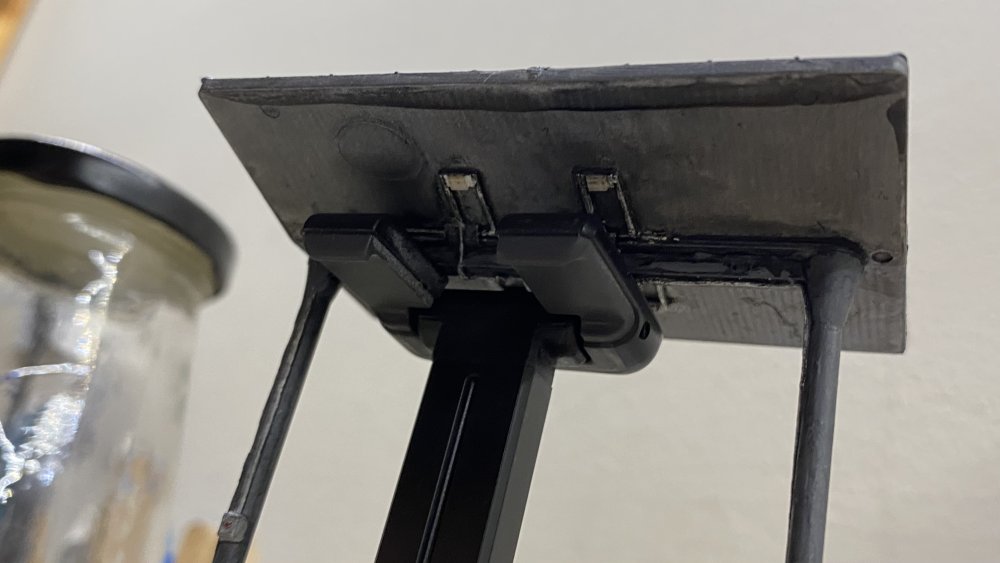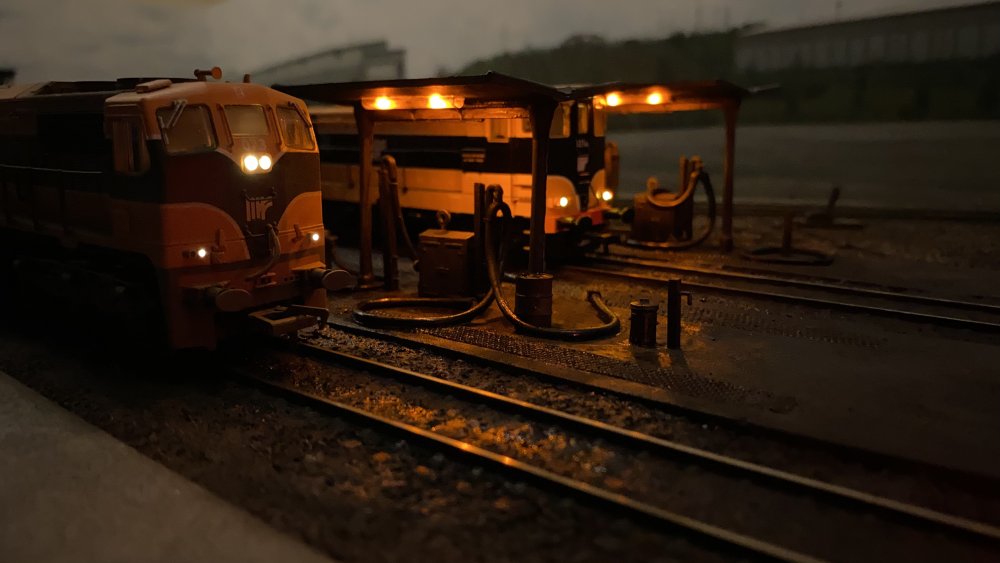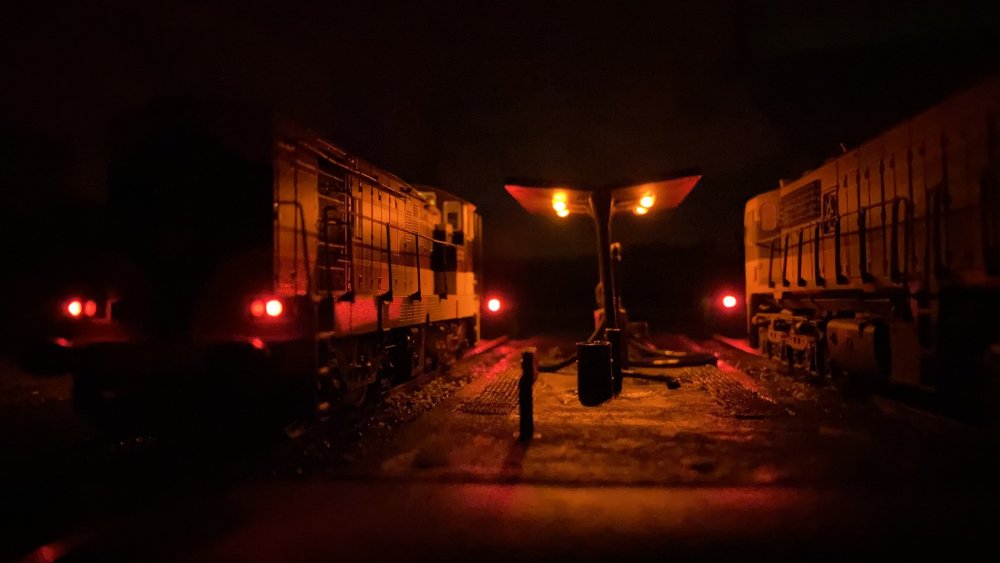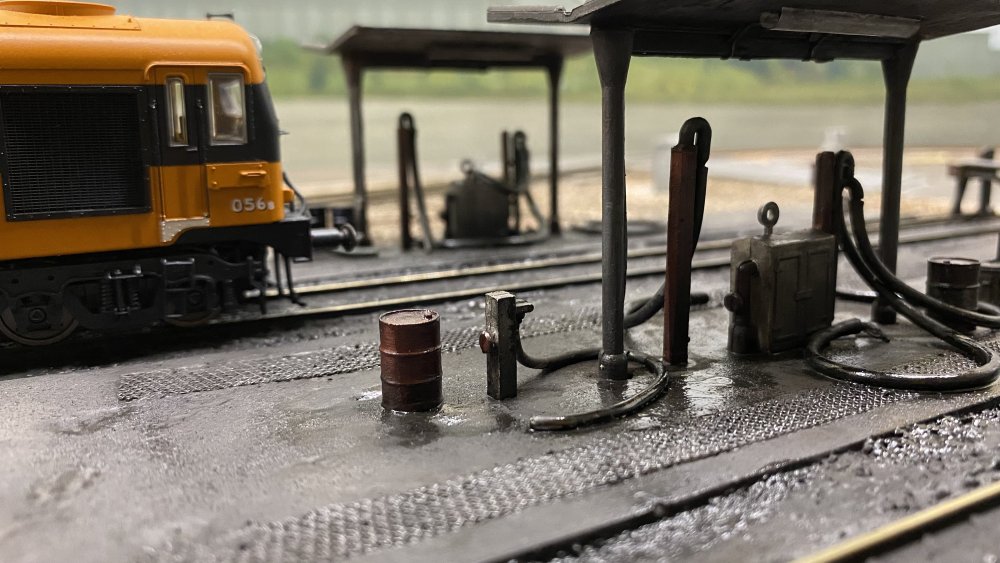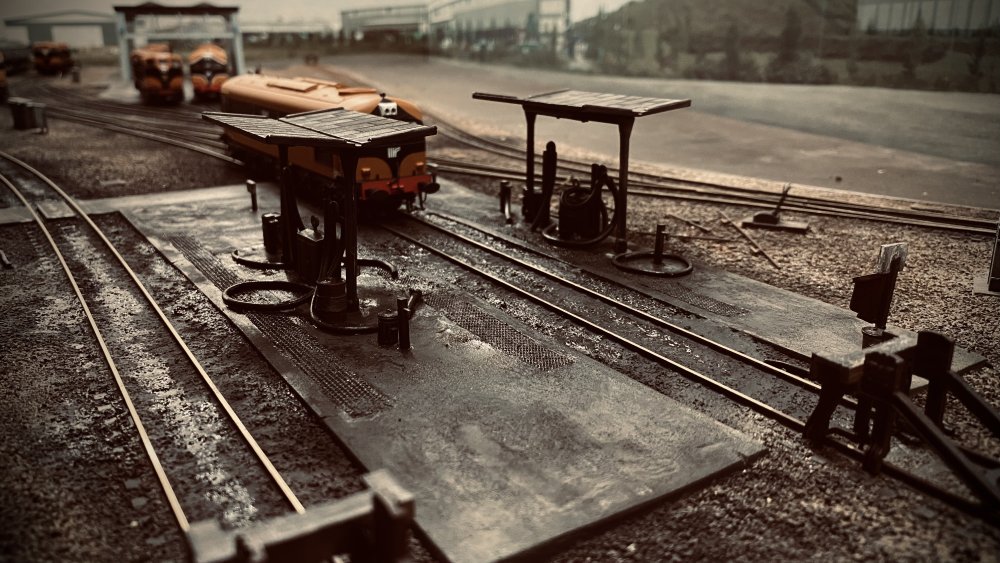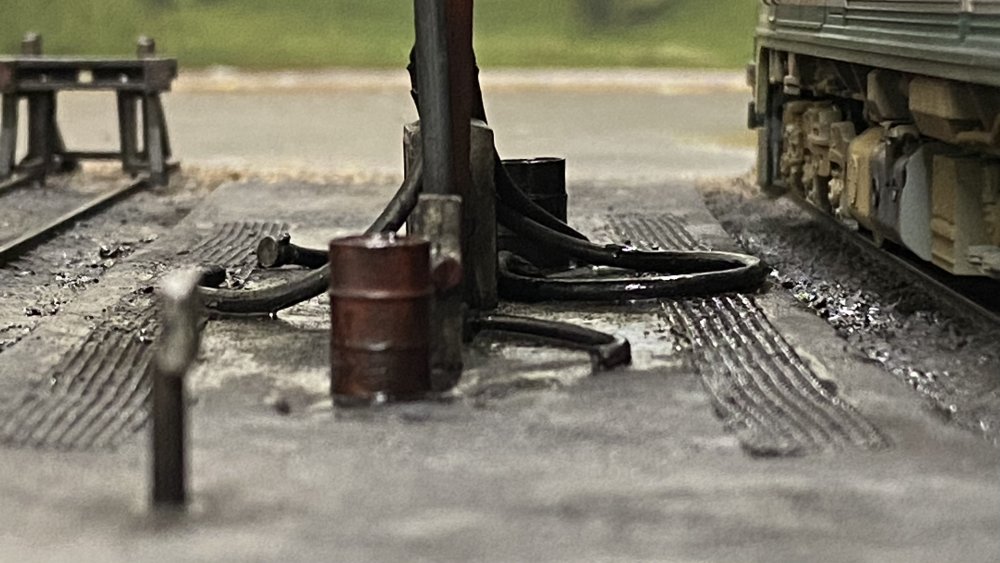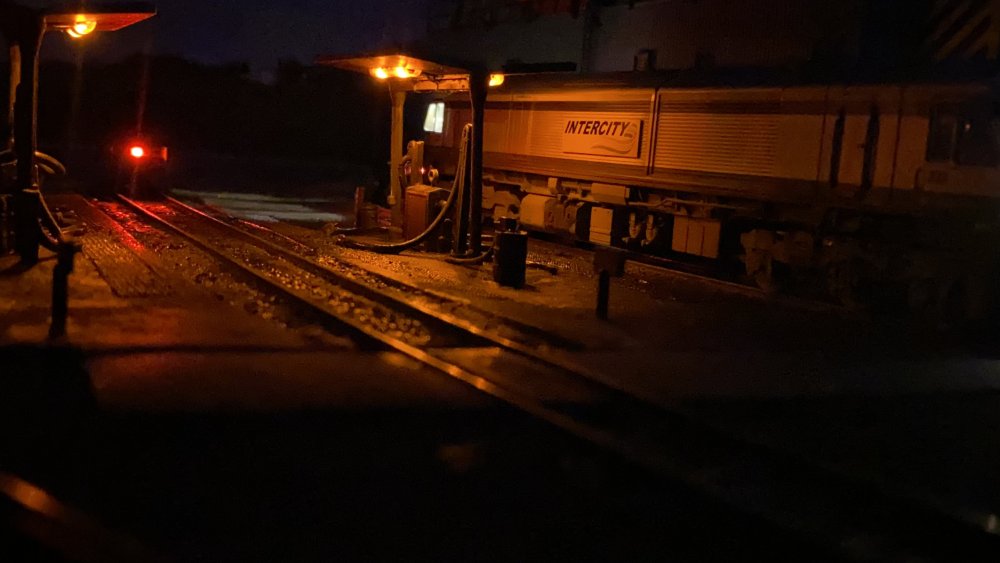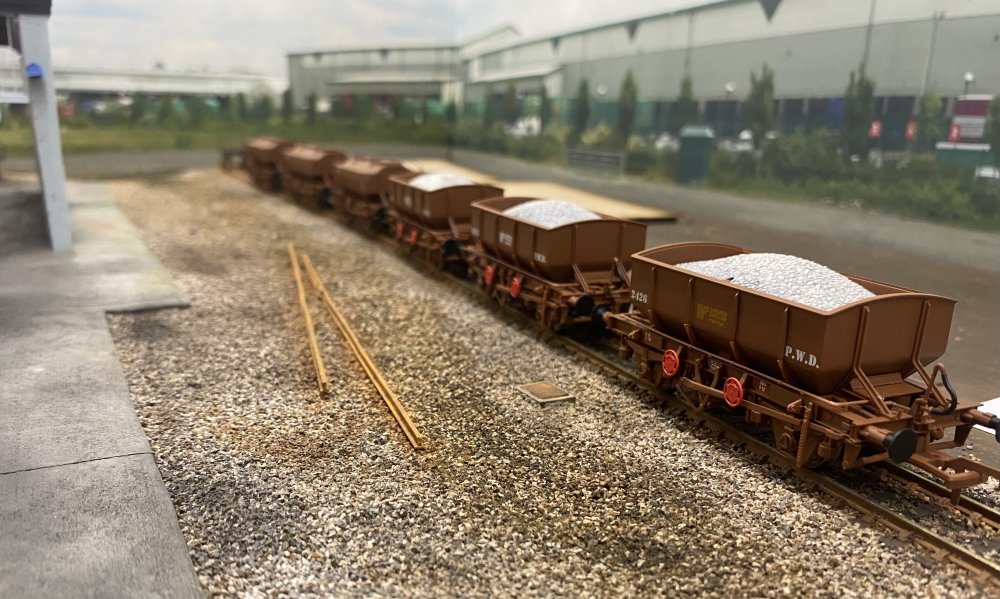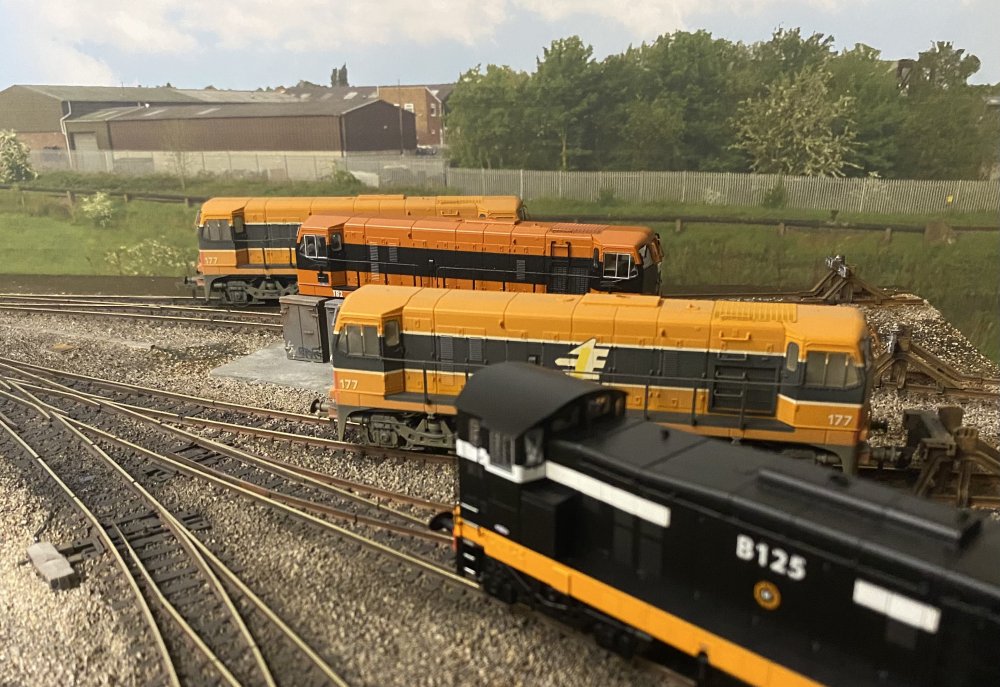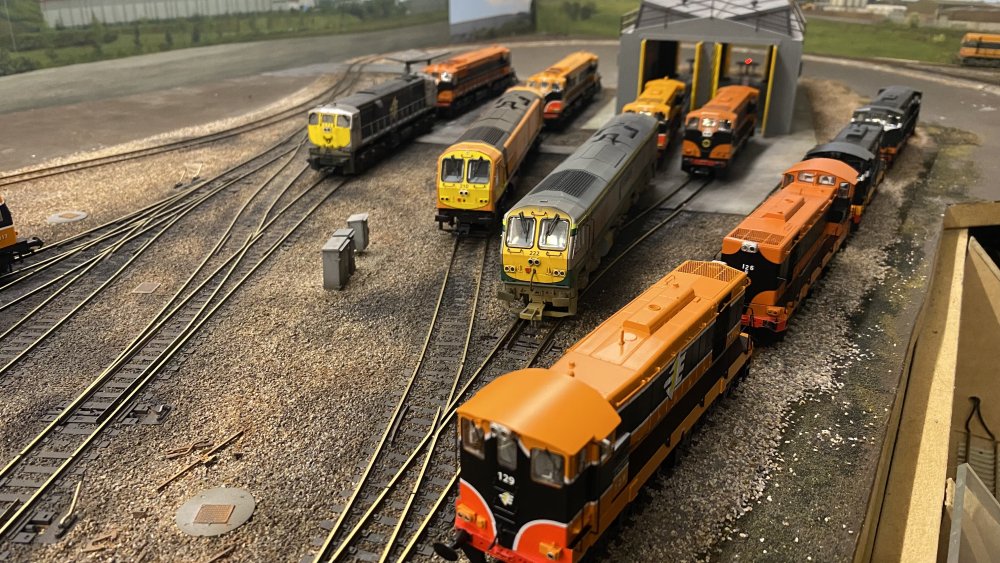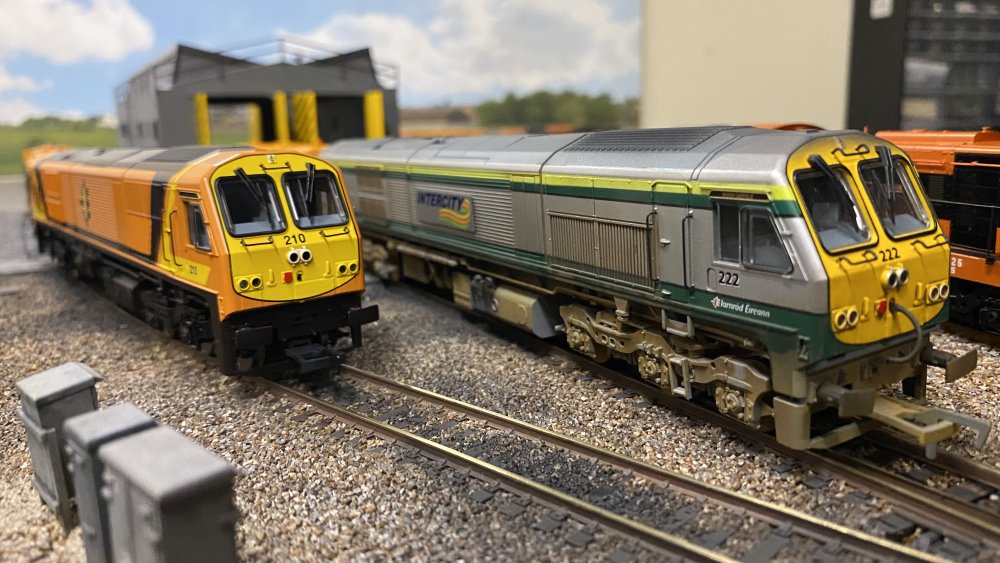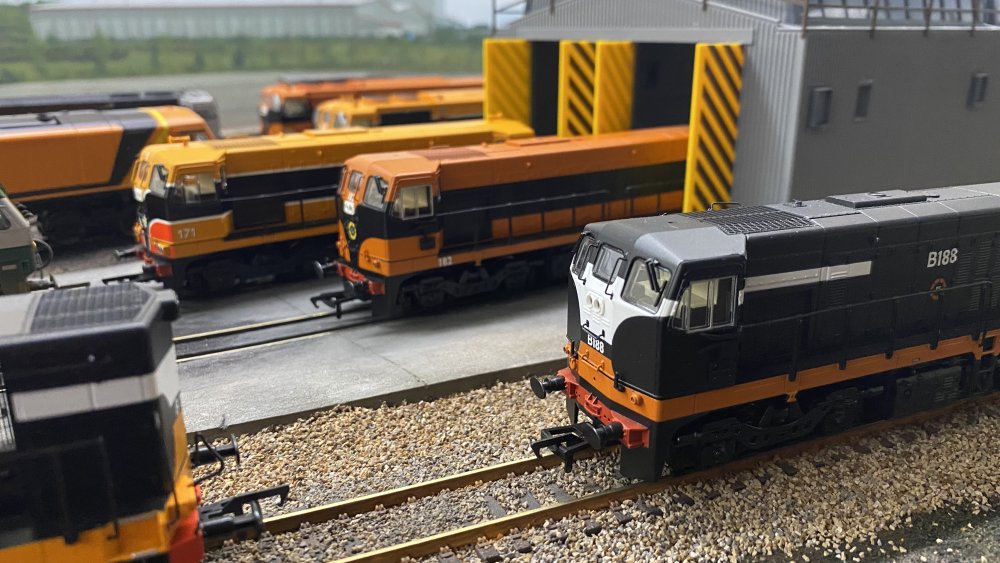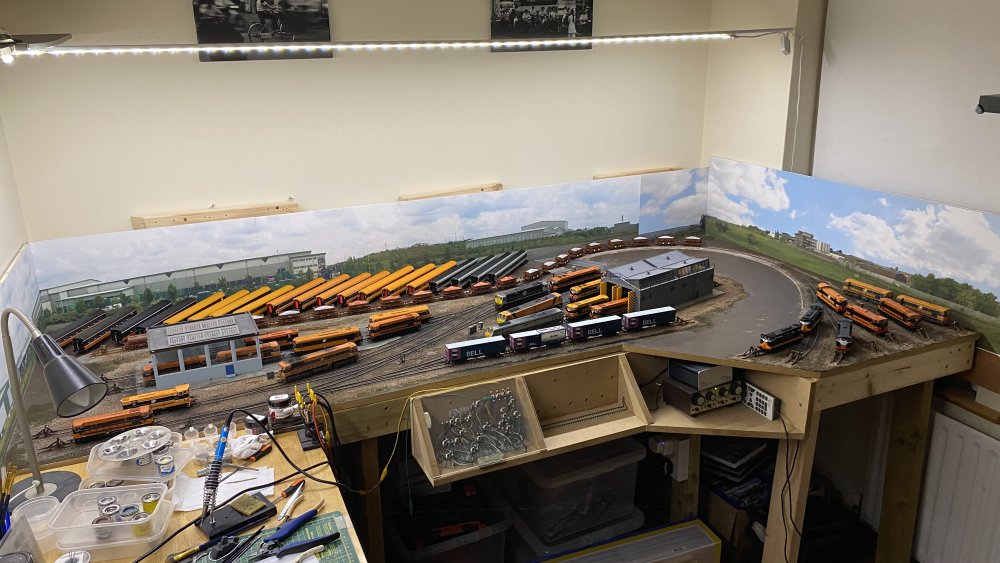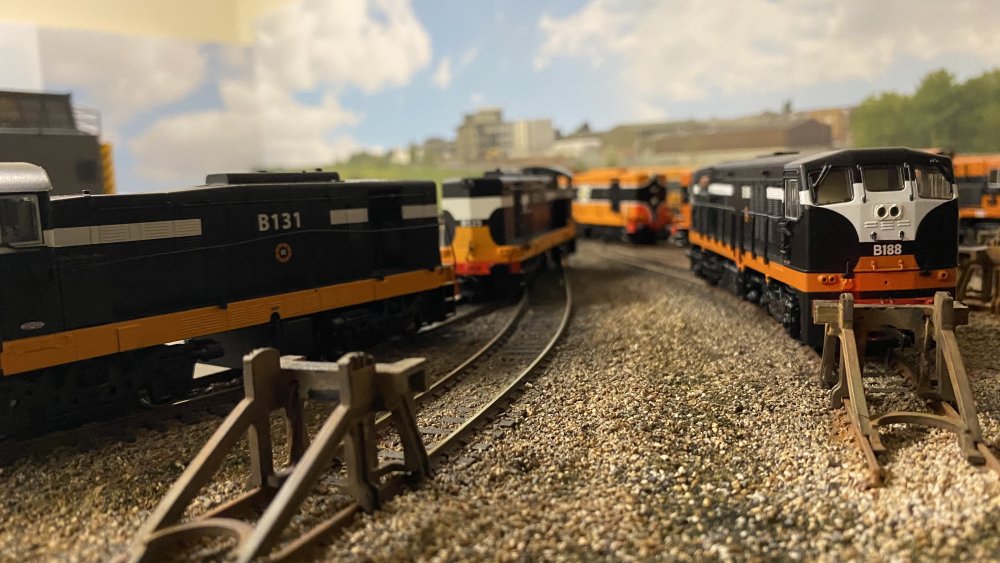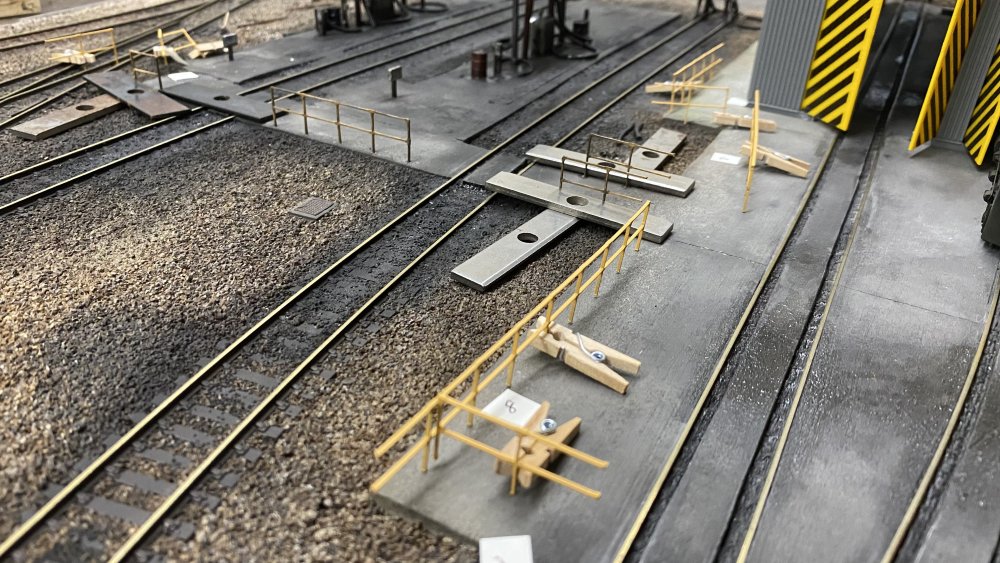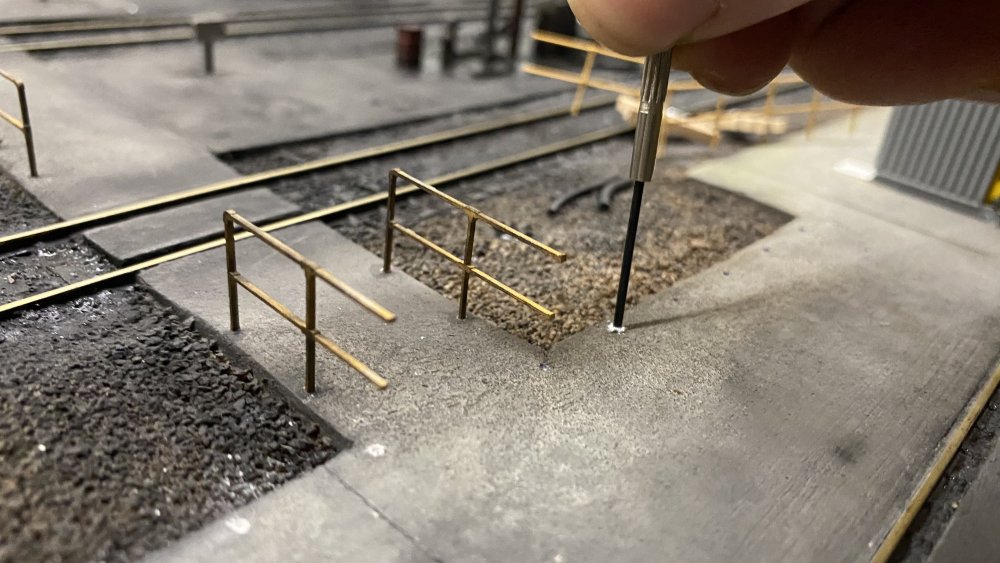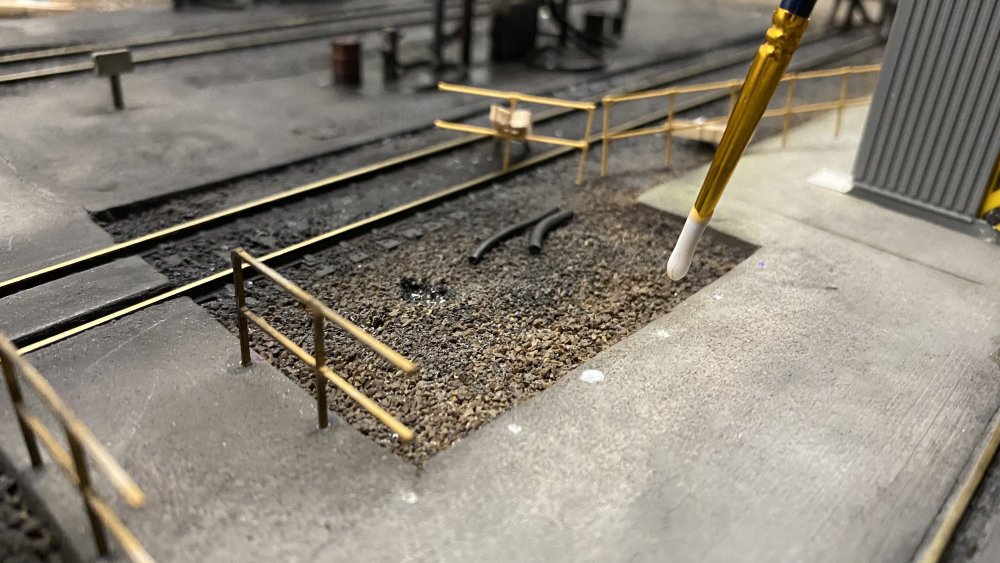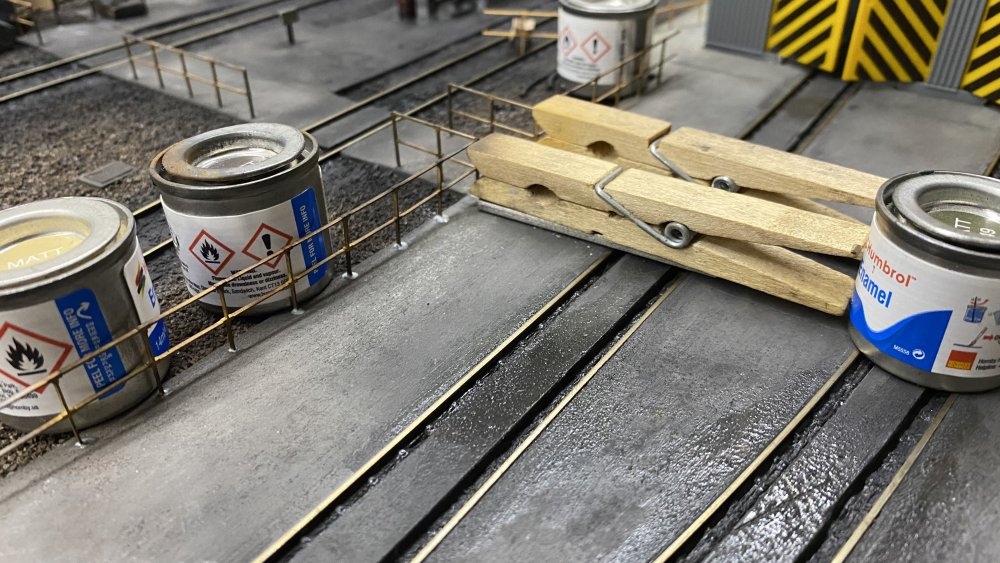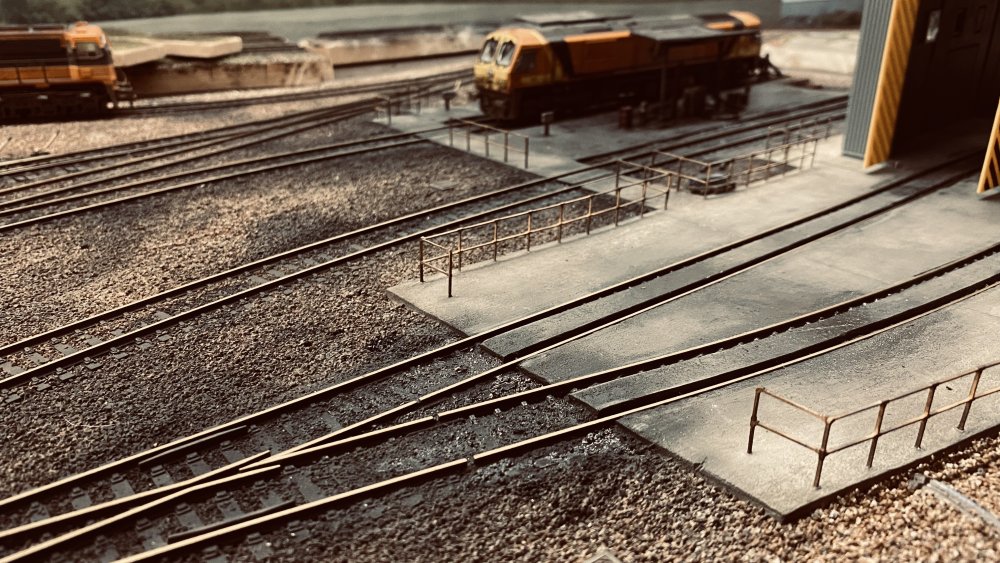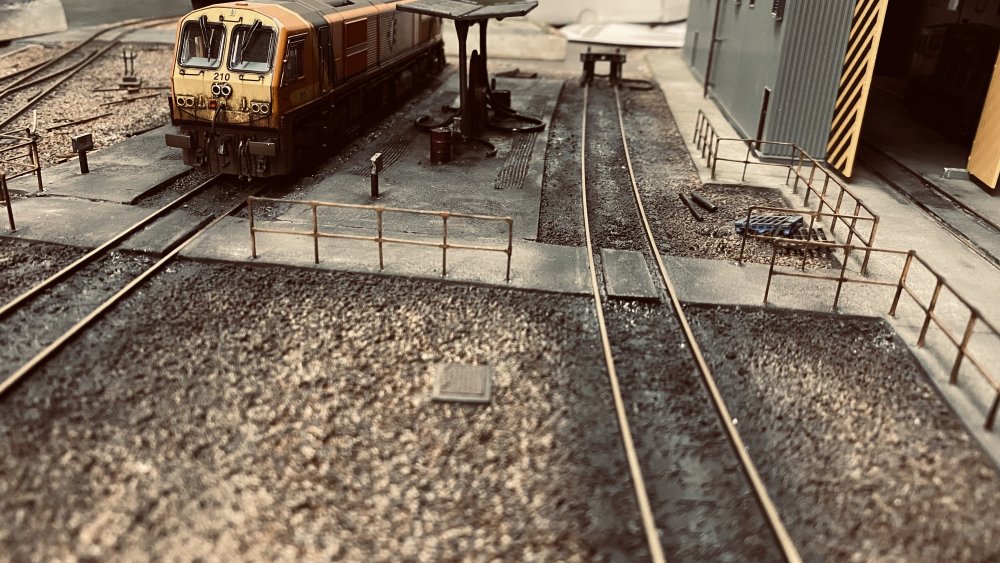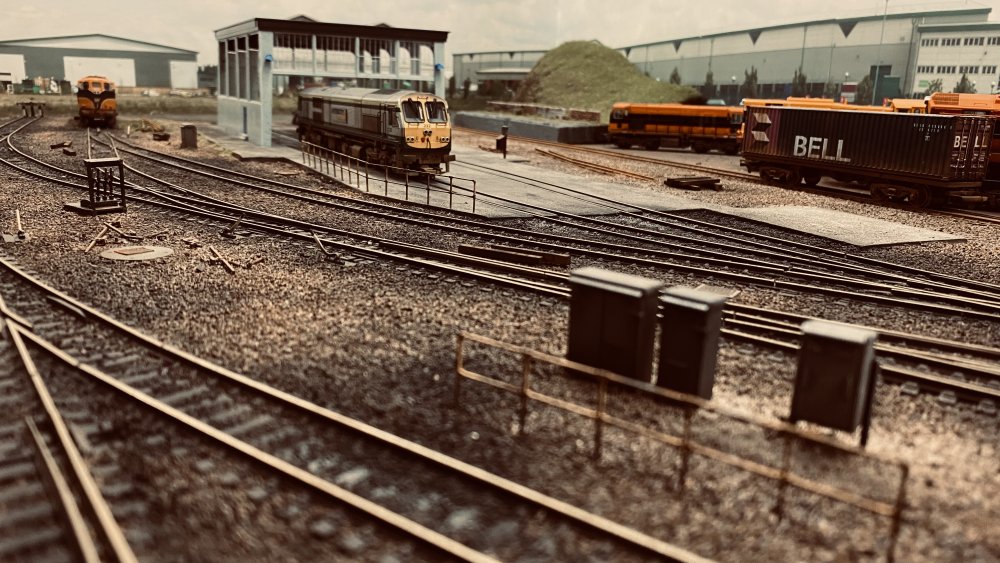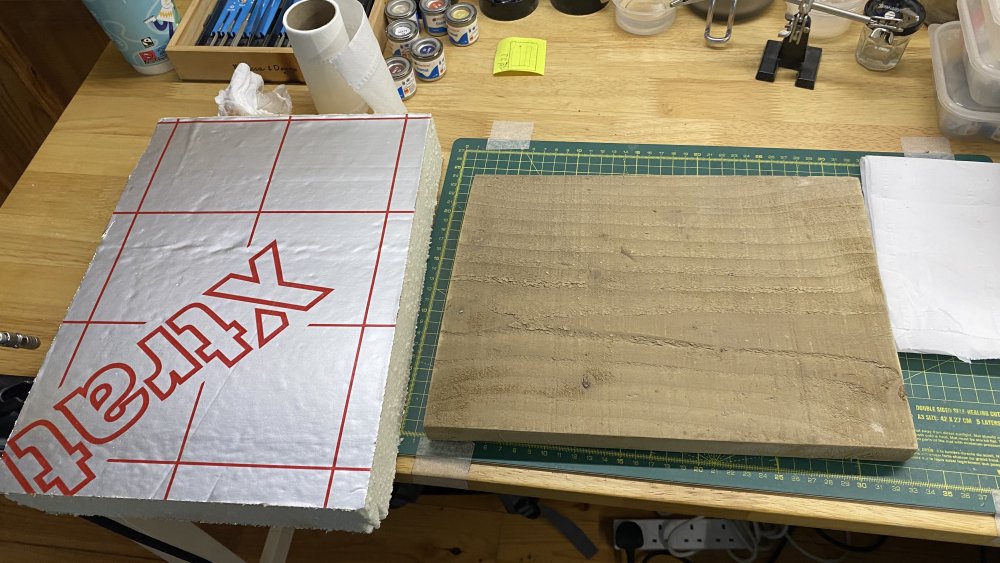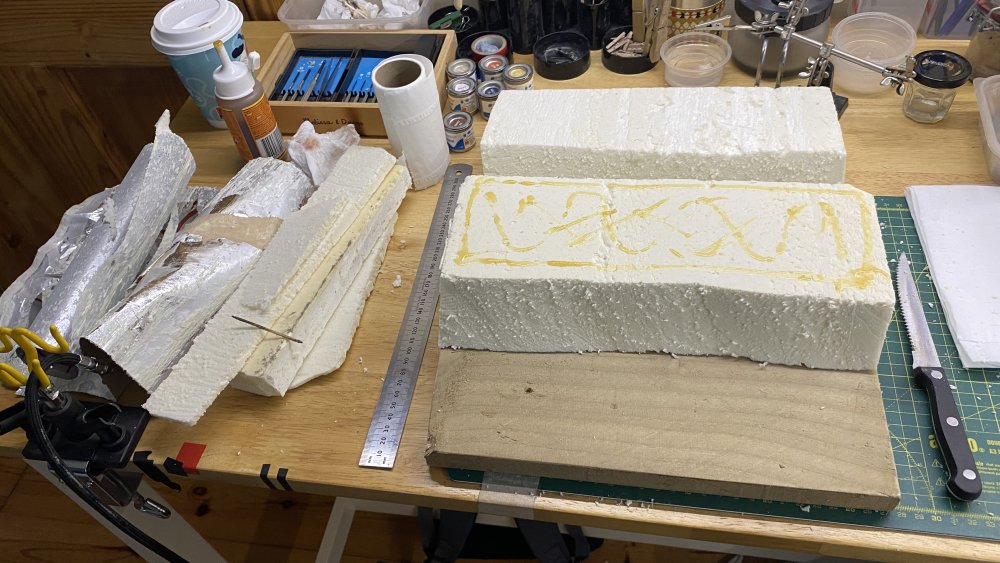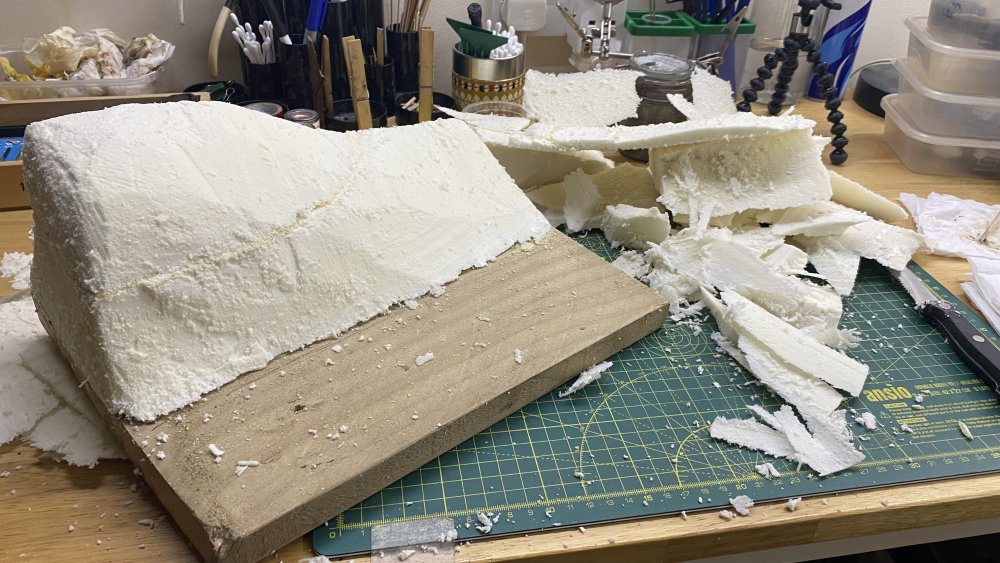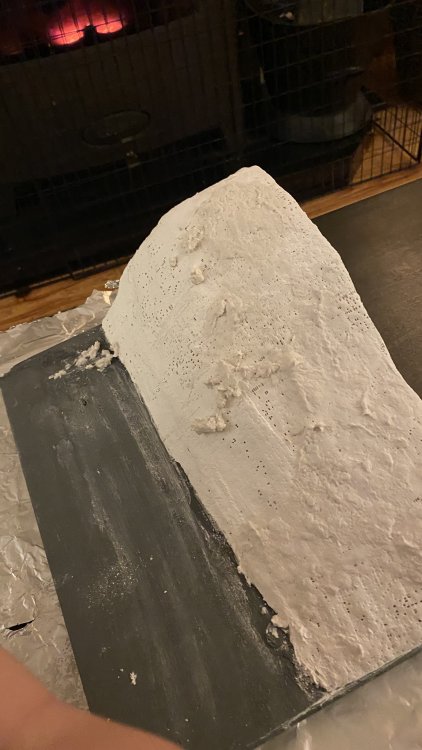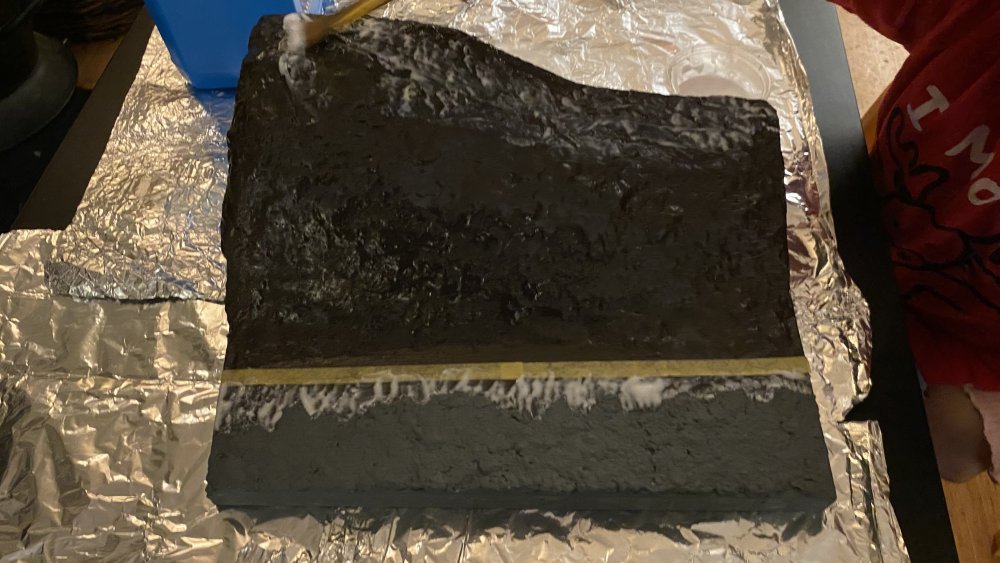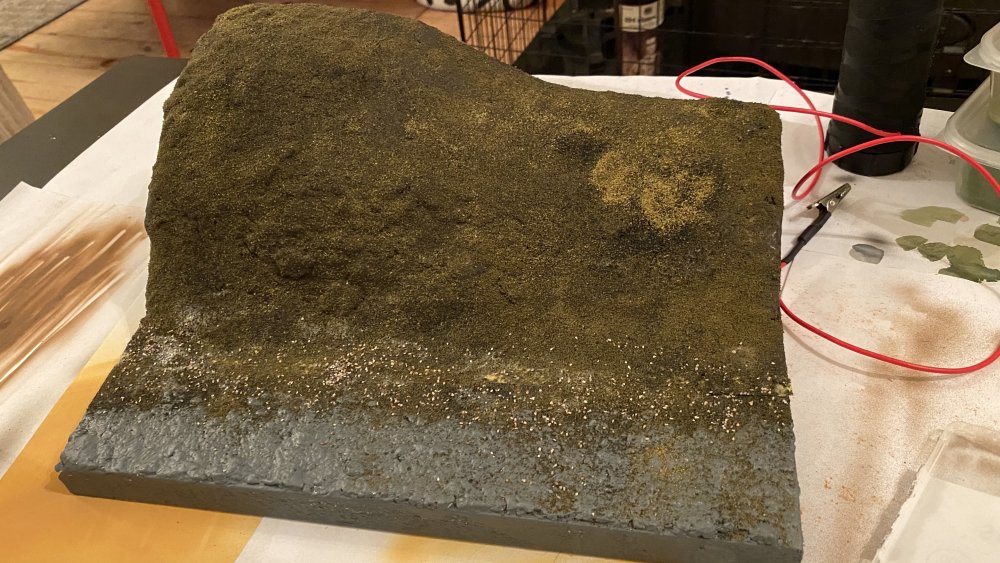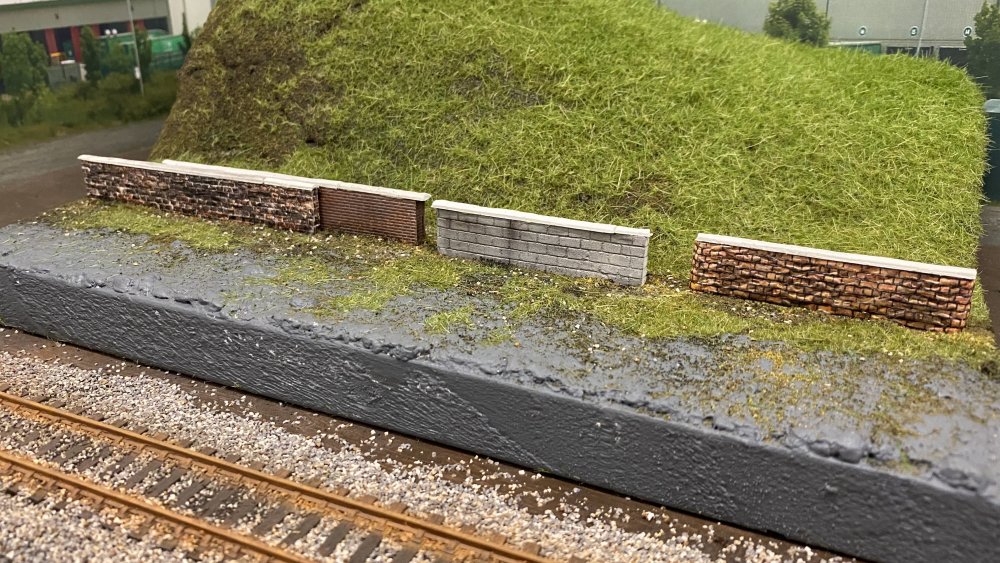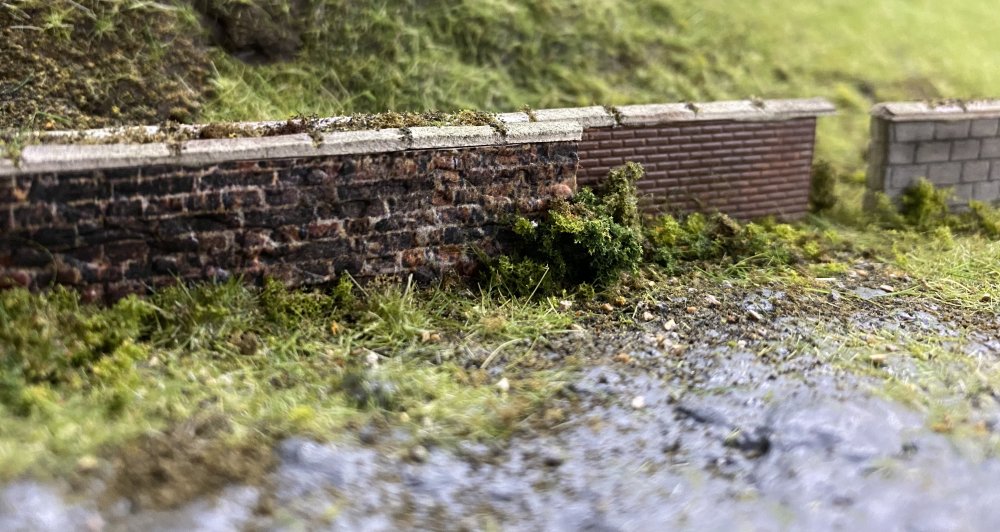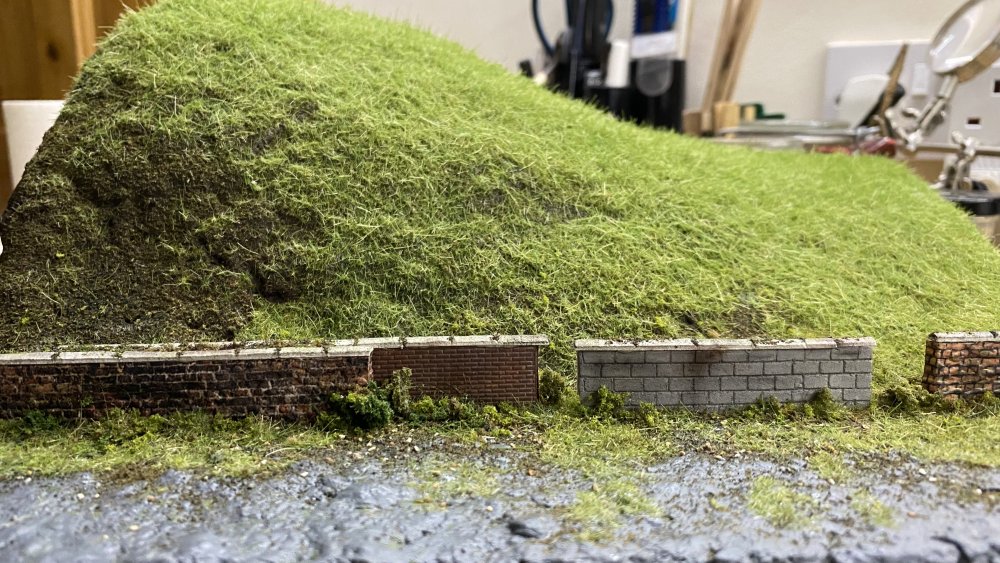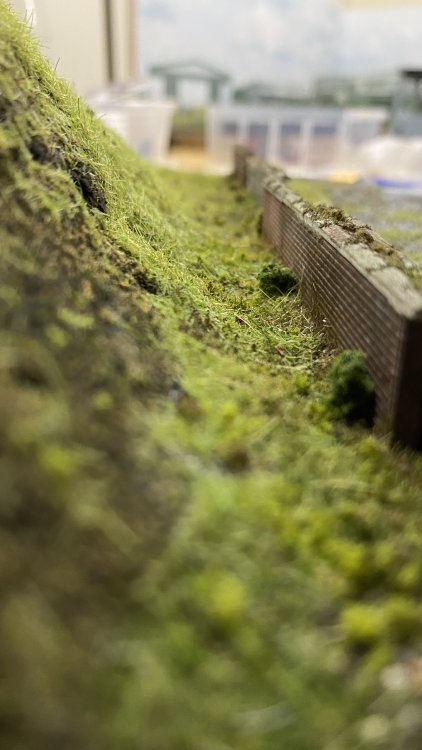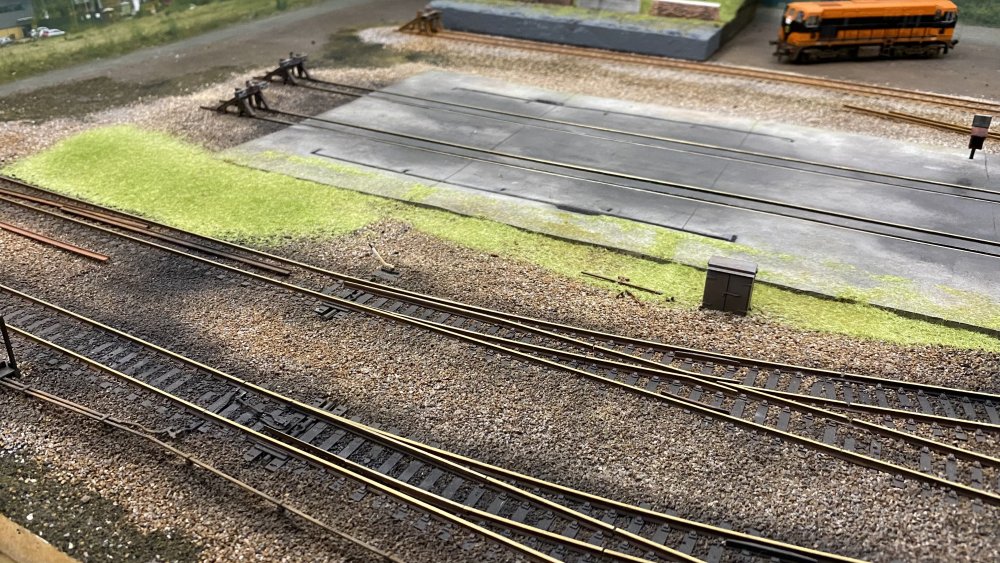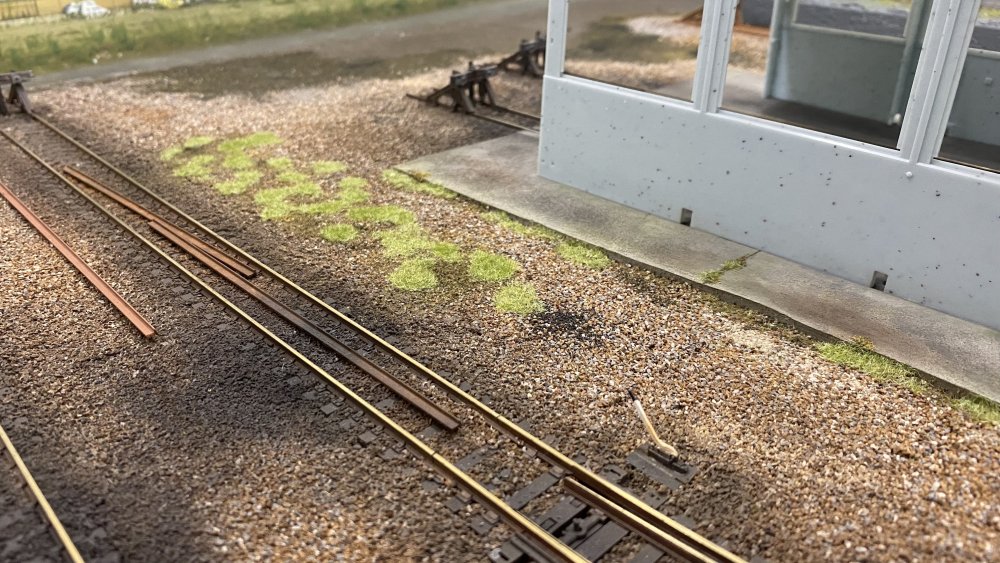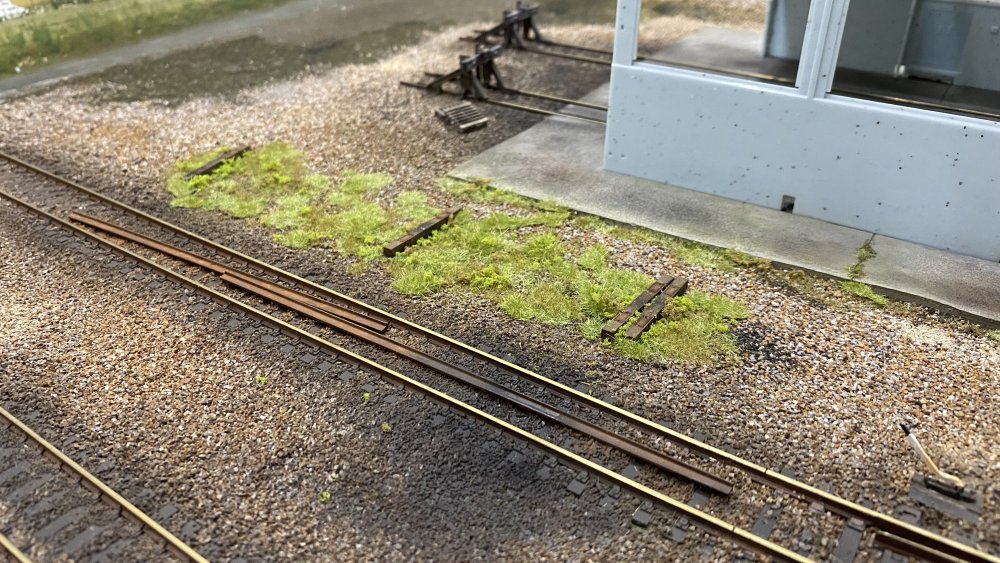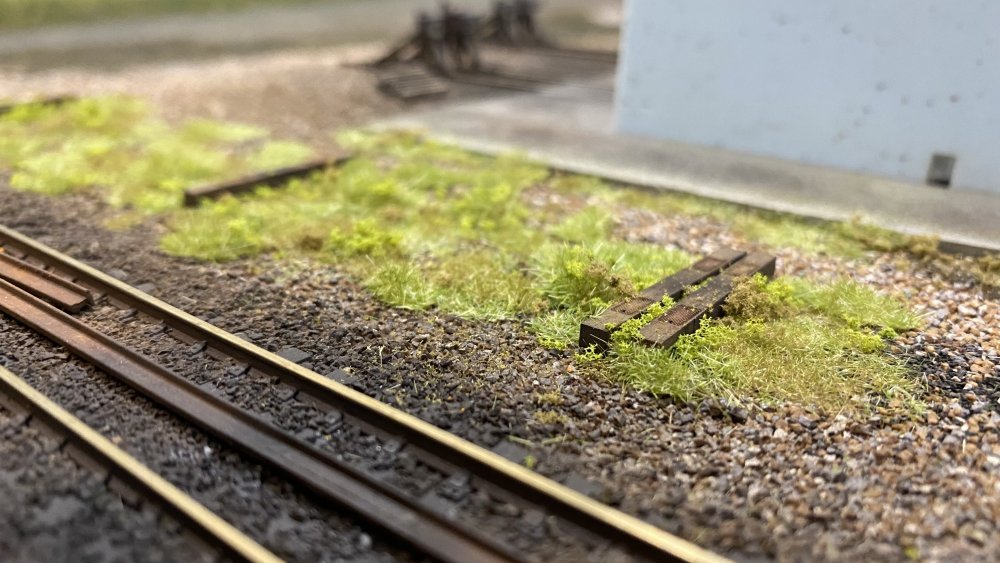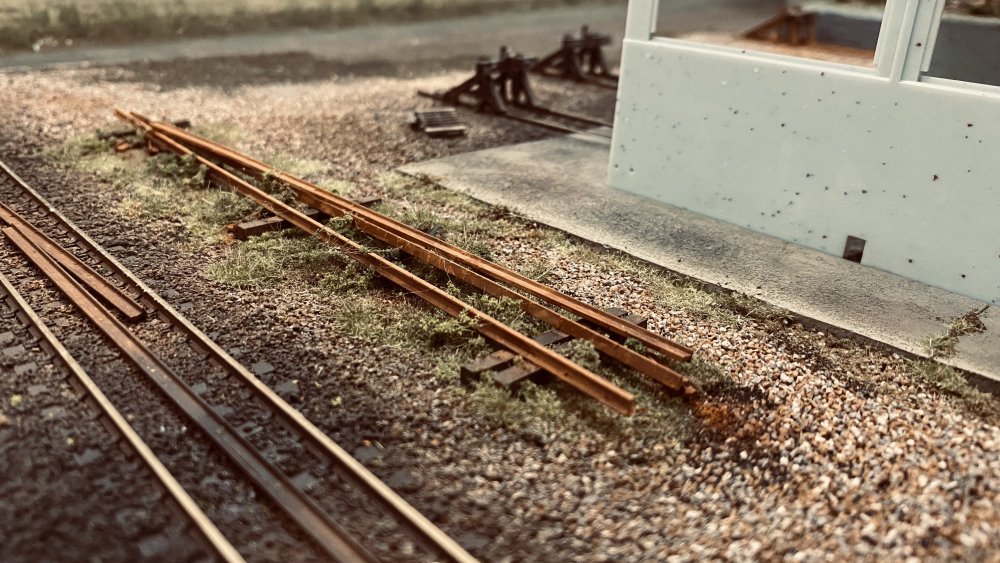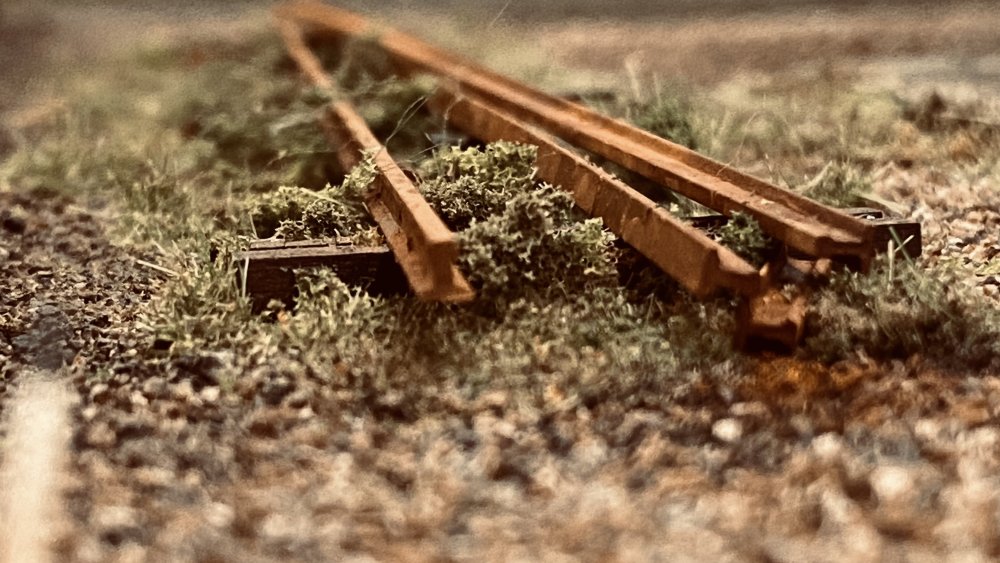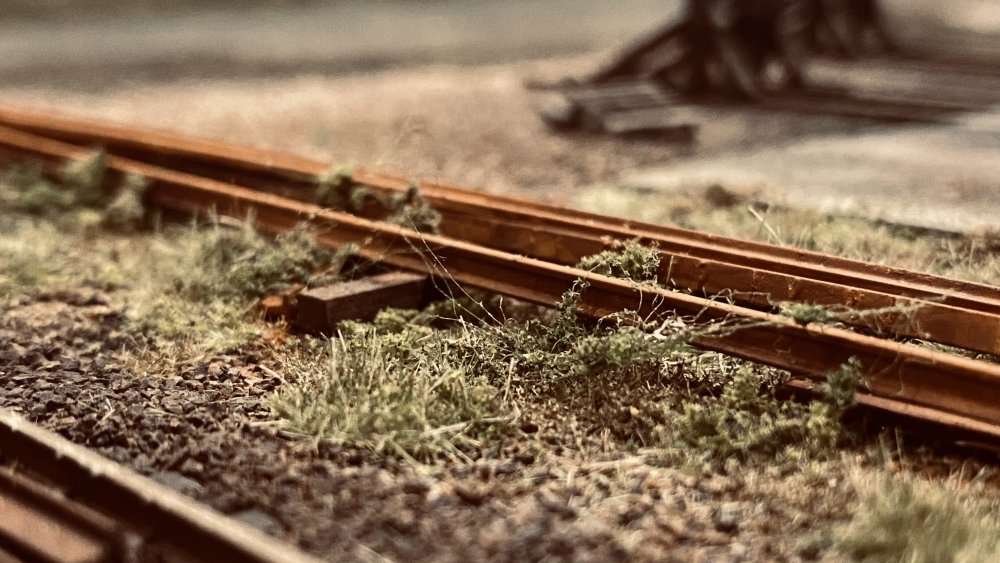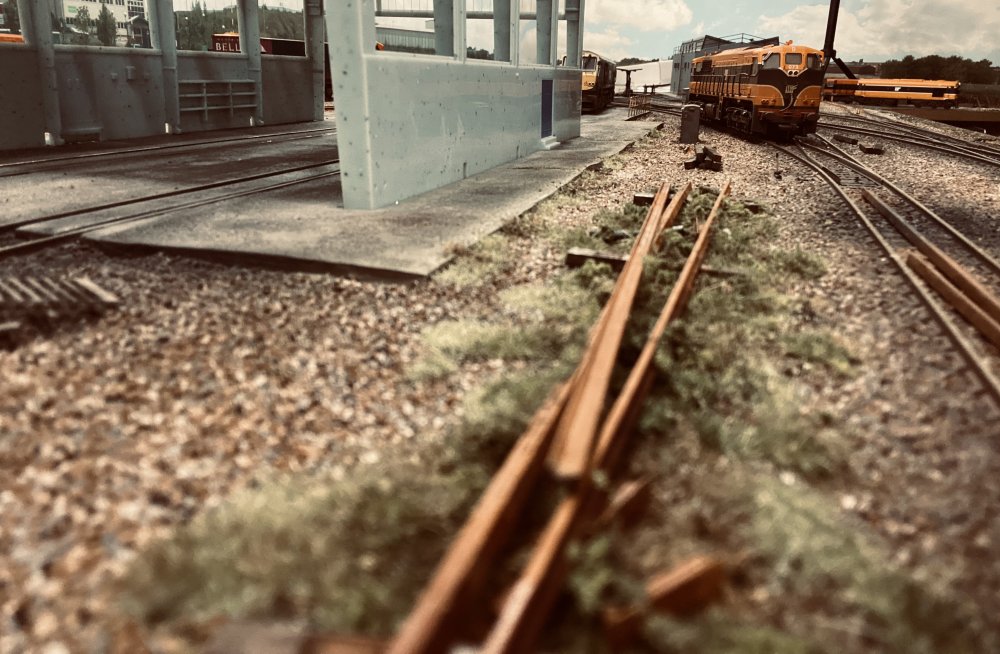-
Posts
98 -
Joined
-
Last visited
-
Days Won
3
Content Type
Profiles
Forums
Resource Library
Events
Gallery
Blogs
Store
Community Map
Everything posted by Adrian
-
Thanks all Yeah...I'm afraid they'll have to stand It'll just be me 99.99% of the time so built with that in mind - the internet is my sofa
- 40 replies
-
- 2
-

-

-

Depot #8 by Riverbank Railways (fictional 1980s / early 1990s depot)
Adrian replied to Adrian's topic in Irish Model Layouts
Thank you both - me too!- 75 replies
-

Depot #8 by Riverbank Railways (fictional 1980s / early 1990s depot)
Adrian replied to Adrian's topic in Irish Model Layouts
Hey all, time for an update and the various projects going on at the moment I like being able to move from one to the next and keep different types of projects on the go, keeps it interesting Concrete Industrial Yard First up is the open space between the depot and the scenery. I don't want to make this area too busy with buildings and quite like the idea of having a sort of open yard / waste ground area to tie in the depot with the scenic backdrop, which has a carp park / open area. So I got out the DAS clay and started laying it down relatively smoothly but with some relief / some texture and broken up / ragged areas near the ballast. I think this will work well when I add ballast / ground cover / grass and blend in the rough concrete This is a good shot to show the roughness, hopefully this will mimic old, worn down concrete like you'd find in an infrequently-used part of an industrial park. Cutting some cracks and potholes into the hardened DAS clay. The long grooves are for adding walls later on after painting. Spray painted with about 4 or 5 coats of my custom concrete mix If you're interested it's Humbrol Matt 27:28:121:34 in the approx ratio 2:6:6:4 and thinned 1:1 Next job to do is to use the dabbing technique to add dark and then light patches to this base, then some black wash to blend it together. Figure Painting Bought a bunch of ModelU figures for the yard and have started painting them with acrylics washes. I saw a very effective technique for this on Bunter's Yard: https://www.youtube.com/watch?v=biJWFlohnXw&list=LL&index=16. You spray the figures matt back all over, then spray matt white only from above mimicking where light comes from. This forms a base so that when you start adding thin colour washes, the dark and light will bring up the shadows through the colour. Here's the result of that first step: Then using various thin washes in shades of pink / brown for the flesh... And various thin washes of colour for the clothing, here's an example of a finished figure, very happy with this result Hills & Scenery Next up is hills and scenery, I haven't done a whole lot on this yet as I need the tunnel in place before I can sculpt, shape and fix the scenery in place. But the plan was done using paper and then the rough shape of the hills (using foam insulation) has been cut out and glued. More to come on this. The Tunnel Now this is an awkward beast! The tunnel will transition the main depot area with the hills and scenery section. Due to the limited space though, the track is right at the edge of the base board and the angles are very strange. The back section of the tunnel will also drop down to a support underneath the baseboard frame, so it can be set about 20mm back from the track and give the loco enough clearance. Starting to cut out the basic shapes and glue them together. I'm using combinations of 3, 6 and 9mm MDF. Basic frame is complete, here you can start to see the weird angles needed. With the frame complete, I've started adding the brickwork. This is embossed card with punched out texture which works really well. Got it on Etsy from Greece: https://www.etsy.com/ie/listing/1063916581/new-16-sheets-wall-00-176-scale-wall?ref=yr_purchases One thing is that we don't have a lot of red brick in Ireland, but the card takes weathering powder very well, so I'll be weathering this to match the grey / black colour we usually have in our bridge tunnels. Foreground Wall While doing the tunnel I also started adding a wall to the foreground. I saw this done on a layout somewhere and it worked really well when taking photos - instead of seeing the layout run to a baseboard edge, you were almost peeking over the wall to the railway beyond. Adding some bushes and shrubs in front of the wall should add to the illusion I think I'll be adding capstones soon as well. More updates coming soon!- 75 replies
-
- 9
-

-
Hey all, have been working all summer in the cabin (as usual with modelling, when I get the time ) and have the frame construction complete for the layout Very happy with the result, it's solid and sturdy and given I'm by no means a carpenter it turned out surprisingly straight and true. See what you think below... Starting off with materials and technique, I'm using 2x2 pine for the frame, with 9mm MDF for the baseboard (this will be sealed). The baseboards will be open to make it easier to have multi level scenery and not lock everything into a flat surface. To keep things level, I found very effective, cheap, small feet adjusters in Screwfix. These were really good and easy to install (drill an 8mm hole about 10cm into the leg and hammer in the bracket), most feet adjusters in the hardware shops are for kitchen cabinets etc. and were way too big. Here's the link if you're looking for them for your own layout: https://www.screwfix.ie/p/suki-levelling-foot-m8-x-60mm-2-pack/838gx To strengthen the joints and keep them square, my brother (a cabinet maker by trade) suggested using 45 degree blocks, this worked very effectively (should note at this point that everything was cut by hand for accuracy, no small feat!). First piece screwed in in early June... Starting the back wall; the lower level will be a fiddle yard and the mid level above it will be the terminus station. Back wall complete and I have my technique working well, now it's just a case of rinse and repeat for most of it. The diagonal space on the right will let me in behind the layout, since this is where the diagonal cross section will come in, I'll need this spot to be able to reach parts of the layout - as long as I don't put on too much weight over the years I should be fine Continuing with the left side wall, this will be the main scenic area, likely with some sort of viaduct over a valley, which I'll cut out at some stage. Another diagonal access area at this point as well. Coming forward along the windows, this will show the three levels and coming towards the camera will be the approach to the station throat. About 60% there, now for the tricky bits, the access to the cabin door and the cross section in the middle. The right side in this photo will be the depot area and station throat. This...tested my limited skills I opted for a swing out area rather than sliding or lift up. There will be multiple levels and scenery so a lift up would be awkward, squashing scenery on one side. And sliding might result in accidents. The swing gate has enough clearance to let me in and out and will not hit the cross sections when it swings in (after careful measurement!). If you look at the doors, it's a pain in the arse but the dimensions and swinging space required that I have to use the right door to get in and out, so both need to be open. It's a small price to pay. I did look at swapping out the door handle and lock system...but then quickly chose not to do that The catches locking it in place and are nice and accurate so hopefully this will work out when it comes to laying track. If not, I'll figure something else out. The final hurdle, lining up the diagonal cross section. This long straight area will serve as a secondary station and also a way to reverse the locos direction across the layout without having to manually intervene. This is important to me as I have always wanted a train to be able to leave the terminus and then drive back in to it as in real life, without me having to lift and turn it around. Here you can now see why the diagonal access space at the back is important. Also, as I had hoped, the short cross braces / buttresses not only will allow more layout, but also made the diagonal section very strong and locked in place. There's no sway at all. And here we are, the full frame is complete in October, almost 4 months to the day. As I have a second layout and office space in the main house, I opted to maximise the space for the railway rather than working area in the cabin. I also need to crawl under to get from space to space but sure that'll keep me nimble Hope you enjoyed the update, next up is to figure out baseboards and supports for multiple levels
- 40 replies
-
- 16
-

-

-
haven't decided on it yet, I'd say I have some time to ponder before I get to it...
- 40 replies
-
- 1
-

-
- 40 replies
-
- 6
-

-

-
So I can have my turntable then and not feel guilty
- 40 replies
-
- 3
-

-
Thanks Leslie, rule #1 applies to a lot of these points Hhmmm. As you're modelling 1980-ish, why the TURNTABLE? I've always, always wanted a turntable but never had the space, and then modelling the 80s I was wondering how to include it. However I then found this video from 1992 of a 121 being turned around https://youtu.be/IPtPbkXB4No and so I'm going to model an old, rarely used turntable which still functions Final wind-up. A single track from the terminus to the Main Line? Yep, I originally had two but wanted to reduce the amount of track and double lines running everywhere, as well as diamond crossings as you mentioned. Plus it gives me an excuse to add some operator interest with a control light and leaving a train waiting for another to pass. Maybe not 100% how it would be in real life, but again, rule #1 I presume that you're 30/40 Yep, I'm 42 so plenty of time and flexibility to get under the boards (for now). And if it becomes a problem, it's an excuse to rebuild (bigger) Thanks for your comments!
- 40 replies
-
- 4
-

-
That's looking great Darren, looking forward to seeing it complete
-
Finally, finally completed the layout plan. Gonna call this Riverbank Railway, I've been going over the plan in my head for months, trying to get the balance of track versus scenery versus what I want Have been working on it / revising / tweaking for months - orange is upper level () for mainline running, purple is mid level with the terminus station and green is the lower level with branch station, fiddle yard and loops for switching train direction - I've always wanted the train to be able to leave the terminus and then arrive back in without reversing or manually turning it around. It'll take some electrical work on the loops but that has become easier with modern digital and shouldn't be too hard. There's a depot area off the main line out of the terminus, similar to how Inchicore is down the line from Heuston, and plenty of space and natural curves for full length 8 carriage trains to stretch out - the platforms are also long enough to take 8 carriages and a loco and the sharpest curves are only 3rd radius so should be no problem Lots of track and wood to buy now to get started...
- 40 replies
-
- 6
-

-
No worries Patrick, very funny everyone Thank you, gonna take a while I think...
- 40 replies
-
Finally got electricity to the cabin, so that means Google Home Wi-Fi extender and electric heaters. Also got a Wiz Smart LED strip up last night, so now…1 busy year later…am finally in a position to start proper modelling work
- 40 replies
-
- 14
-

-

-

Depot #8 by Riverbank Railways (fictional 1980s / early 1990s depot)
Adrian replied to Adrian's topic in Irish Model Layouts
Thank you Patrick- 75 replies
-
- 2
-

-

Depot #8 by Riverbank Railways (fictional 1980s / early 1990s depot)
Adrian replied to Adrian's topic in Irish Model Layouts
Thank you everyone for the lovely comments Will do @scahalane , I have more models coming up for weathering- 75 replies
-
- 2
-

-

Depot #8 by Riverbank Railways (fictional 1980s / early 1990s depot)
Adrian replied to Adrian's topic in Irish Model Layouts
Finished my first fully weathered loco and am delighted with the result. Chose a 121 (#132) as they were particularly grimy and a good chance to test out different effects. I purposely used airbrushing as little as possible (only for the bogies and basic frame dirt around the buffer beams) because when testing on other older Hornby shells that I have, it can be very overpowering, blanketing the entire area in a specific colour and losing all the detail. I really wanted something more subtle than that and used weathering powders with coats of matt varnish between layers of effects. First one I tried out was #127 using dark weathering powders, however while it looked great to the untrained eye, it was spectacularly much dirtier than the reference photos I used. The effects were just too black and in real life, the dirt was lighter in color (it was dirt, not oil after all). Luckily, using weathering powders means you can easily correct mistakes as long as they are not sealed in and it will be easy to get it back to where I want it. The second attempt is in the photos below. Much happier with this, I used Johnson's baby powder mixed in with the black weathering powder to really lighten it up and then a combination of black & brown mix, dark and light rust and black for the bogies, black for oily areas and various brushing and dabbing techniques with brushes to get the right effects. Also added and weathered the buffer beam detail at the cab end and it really adds to it. So enjoy the photos below: have included a before and after, reference photo (the main one among many I was working with, and copyright remains with Fred Dean) and some detailed shots. What do you think folks? Opinions welcome! --- Before and After Reference Photo (From Fred Deans excellent IE gallery here: https://www.flickr.com/photos/be216cd1/albums/72177720301880935, and yes, I did look through all 3,495 photos there ) As you can see, although quite grimy, they're not absolutely covered in dirt and the orange comes through quite well along the sides. Plus the dirt is browny in colour, as opposed to jet black. In context Cab end detail Front end detail Exhaust area Side shot (lightened to show bogie detail which tend to come out darker in photos focused on the body)- 75 replies
-
- 21
-

-

-

IKEA Shelf Diorama - First Ever Railway Modelling Experience
Adrian replied to Rush and Lusk's topic in Irish Model Layouts
Well done George, great debut! -

Depot #8 by Riverbank Railways (fictional 1980s / early 1990s depot)
Adrian replied to Adrian's topic in Irish Model Layouts
Cheers Jason! Thanks for that- 75 replies
-

Depot #8 by Riverbank Railways (fictional 1980s / early 1990s depot)
Adrian replied to Adrian's topic in Irish Model Layouts
Thanks John, Appreciate your kind comments - with the scenic work complete, I'm gonna tackle those videos next week and get them online- 75 replies
-
- 1
-

-

Depot #8 by Riverbank Railways (fictional 1980s / early 1990s depot)
Adrian replied to Adrian's topic in Irish Model Layouts
Thank you both very much :)- 75 replies
-

Depot #8 by Riverbank Railways (fictional 1980s / early 1990s depot)
Adrian replied to Adrian's topic in Irish Model Layouts
Thank you all for your comments, really appreciate them @scahalane The point rodding is the SS89 kit from Wills https://www.marksmodels.com/search/?s=rodding&x=0&y=0 Very, very finicky and I would definitely recommend doing it as the track is being laid and before the ballast is in - looks good when it's in though- 75 replies
-
- 2
-

-
Sweet, thanks for sharing, will take a look!
- 40 replies
-
Quick update - nothing has happened on the Railway cabin since last March! Basically I need to run electricity out to the cabin in order to have lighting and heat. And for that I need my brother-in-law's help (he's an electrician). However we both have small kids, both were super busy during the year and had other priorities and it got put on the long finger. Also, since the cabin was bought, the stables then took priority (!) and they got built over the summer. Also had planned to do it at Christmas, but then we all got COVID in our house so that put the cibosh on that. Hopefully we will get it done on the upcoming bank holiday Monday and then we're off In the meantime I can share a few pics from when I was planning out the layout. The main feature will be a full length (loco plus 8 carriages - approx 2.8 metres) ) terminus station, something I've always wanted. As you can see below, technically it would fit at the end of the cabin (4 metres) but it would be a tight fit with station buildings / scenery etc and might look a little staged when the train is pulling out of the station and immediately into a curve (although I'm sure there's an example in real life - there usually is!). Nevertheless, looking at the next photo where the train is along the long edge of the cabin (6 metres) I think it looks much better and am gonna go with that. It gives the train room to straighten up before entering the station and a lot more space for pointwork and busy lineside detaling etc. which is something I love doing And with plans for an 80 cm wide baseboard, with two hidden tracks at the wall for the express line loops, it should give enough space for a 6 platform terminus station, which is plenty And sure while we're at it, here's the new stables that did all the delaying of the railway cabin...but far be it from me to complain
- 40 replies
-
- 9
-

-

Depot #8 by Riverbank Railways (fictional 1980s / early 1990s depot)
Adrian replied to Adrian's topic in Irish Model Layouts
Big update below - I cant't believe it's been nearly a year since the last update! You think you're not getting a lot done, but when you look back and gather it all together, it can be surprising how much can been accomplished on a layout over a few months. So grab a cuppa (if that's your thing) and enjoy Loco weathering At the start of the summer I was excited to start weathering the locos. Not wanting to make my first attempt on our lovely beautiful (expensive) Murphy Models / IRM Irish locos, I took one of my older Lima class 33's and gave it a go, using some streaking techniques I had seen on Everard Junction on YouTube and also some weathering powders and paint effects. Quite pleased with the result and found it easy enough to do, mistakes could also be corrected so that put my mind at ease that I could handle Irish locos (they're working out well, more photos to come soon). Backscenes & Lighting Next up, I was getting sick of looking at the bare walls in every photo and took the plunge to create the backscenes and add better lighting. I put up a WIZ smart LED strip from Currys across the layout and workbench - made a massive difference to the quality of the lighting. The backscenes were particularly tricky to do since I had no access to the back of the baseboard (it being in a small office) and having to offset them from the wall due to plug sockets and the broadband connection terminals. So I mounted 2x4 blocks on the wall above and below the baseboard to carry the weight of the boards, cut the boards to size, and used double-sided picture hanging strips (from Homeware) to just hold the boards in place. I used ID Backscenes with the self adhesive backing, laid them on the board (very happy with how easy and smoothly they went on) and put them up. Voila, was delighted with the result...until about 4 days later. This was during the hot few weeks in the summer and I came in one morning to see the entire backscene was covered in bubbles Looking online, other people had similar problems with the self adhesive expanding in the heat and then contracting, destroying the backscene! I was not pleased, however I re-purchased the backscene and flipped the boards around, attaching it on with strips of double sided tape from a craft store. This seemed to do the trick and I purposefully left gaps in the strips to allow any trapped air to escape. It's worked a treat so far and made a huge difference to the layout and photos. Mounting the Backscenes Lighting Before and After End Result Buffers Insanely, I decided to add LEDs to all the buffers from scratch. This turned out to be really fiddly and sometimes frustrating, but ultimately enjoyable and rewarding. The result was great and I'll pop a series of how-to images in the tutorial topic at some point in the near future if anyone wants to see how it was done. The LEDs for the Hornby buffers were easier to manage as they were 1206's (0.12 inches by 0.06 inches (3.2 x 1.6 mm)). However I used 0603's on the lamp on the Peco Buffers and they were tiny (0.06 by 0.03 inches (1.6 by 0.8 mm)). I also left some buffers without LEDs and rusted on older sidings. Using an old adjustable Gaugemaster control unit as the power source also meant the intensity of the lights could easily be turned up or down, so that was handy Fuel Point Next up near the end of the summer was to complete the fuel point. The concrete hardstands had been sitting there for a few months and I'd been itching to get at them and do some grimy, oily weathering. I also wanted to use a kit and add some dim orange lighting, typical of the 80's and 90's when LED lighting wasn't as widespread. Very happy with the end result, it has the dirty and grimy feel, with shiny oil stains and dim sodium lighting, exactly what I was aiming for Adding metal grates to the concrete by digging strips out of the modelling clay, cutting out the plastic from a sieve, gluing in place, adding baby powder mixed with some coal dust to represent accumulated grime, more PVA, and then a series of black washes for colour. Putting together the kit parts, painting and weathering them to look nice and oily For the lighting, I used more of the small amber LEDs and wire saved from cutting off LED arms, and the frog wire from points. Supergluing this carefully (even using some heat shrink to insulate the wires where they cross on the structure), the long wires are then run down the two supports, where they can pass through holes in the baseboard. End Result! New locos October saw a career opportunity and change to work for Getty Images so I treated myself and expanded the fleet, picking up 4 locos at the Model Show in Dublin and a bunch more from the UK. This bring the Irish loco total to 24 which is the perfect size fleet for what I have in mind on the next, larger layout in the cabin (https://irishrailwaymodeller.com/topic/11229-charobyn-model-railway/) 3 x 141s and a Black and Tan 121 from the Irish Model show, plus the obligatory couple of packs of ore wagons from irish Railway Models Bought another 11 models and rolling stock from a UK modeller who just happened to be selling them when I was looking on ebay - have saved up for these for a while! (2 x 201, 3 x 071, 3 x 141 and 3 x 121) Railings Over Christmas, we all got struck down with Covid in the house (from the 23rd to the 2nd, just in time to go back to work ). However it did mean a lot of time for modelling, so I added some railings from Scale Model Scenery around the depot and fuel point area to protect workers from accidentally wandering into the path of locos! The railings were a breeze to use, painted with a yellow / orange mix, weathered using black and rusty weathering powders, as well as a spot of aluminium paint for areas frequently leaned on by workers. Then some hole punching and PVA to hold them in place, as well as tricky joining work on the corners using Roket Card glue and job done. Pretty happy with the result, I like that they are weathered and dirty and not bright yellow when surrounded everywhere by oil and grime End result Static Grass And last but not least, something I've been putting off for ages as I was terrified of screwing it up and making an irreversible mistake on the layout...scenery and static grass. So I took the opportunity to get my daughter (3 years 9 months) started in modelling over Christmas Covid lockdown and she helped me make a mock diorama to practice creating a hill and adding scenery. This worked out quite well, using insulation board from the local hardware, cut to shape with a steak knife and glued using gorilla glue. Then a coat of sculptamold, chocolate paint, ground cover and static grass. Also took the opportunity to practice making walls using 3mm mdf and covering one with textured brickwork wrap (made by a guy in Greece on Etsy ), one with brick plasticard and making one from scratch with DAS modelling clay and etching in the brickwork lines. All were weathered using paint washes and powders and turned out well. Adding Woodland scenics turf, bushes, underbrush, foliage and more scatter completed the scene - I felt a bit more confident about adding some scenery to the layout after this! End Result This "practice run" then gave me to confidence to try out a little scene with old rusty rails and weeds near the back of one of the depot buildings. I'll admit I was getting worried that it looked crap and artifical, but when I started adding bushes and extra details, it really came together and I was delighted End Result ---------------------------------------- So there we go, "lot's done, more to do" as the fella says I hope you enjoyed this update as much as I enjoyed putting it together. At the moment, I'm having great fun weathering the Irish locos. I think the next big project will be painting and properly weathering one of the engine sheds, but we'll see. I have also figured out how to upgrade the sound and fit twin double mega bass speakers into the 071s and the 201s so will share some videos on that soon. Also it was tricky but I even managed to fit another sugar cube tower speaker into the class 121 with amazing results. Will share that too as it was definitely not obvious, or easy to do! More updates soon...much sooner than last time anyway- 75 replies
-
- 27
-

-

-
Thanks a lot John, Missed your comment so only replying now sorry! I have similar tutorials for adding speakers to the 071, 201 and even 121 classes, decent speakers jus make such a difference Just putting the content and images together - watch this space!
- 4 replies
-
- 2
-

-
- 141/181 class
- speakers
-
(and 1 more)
Tagged with:
-
They're out there alright - my best advice is to keep an eye on ebay (maybe setup an automated alert for the search) and be prepared to pay fast and pay high. You should be budgeting about £350 sterling cos that's what they're going for these days. Since this post I have been able to seriously expand my fleet using ebay and a layout update for Riverbank is well over due - watch this space over the next few days
.png.c363cdf5c3fb7955cd92a55eb6dbbae0.png)
